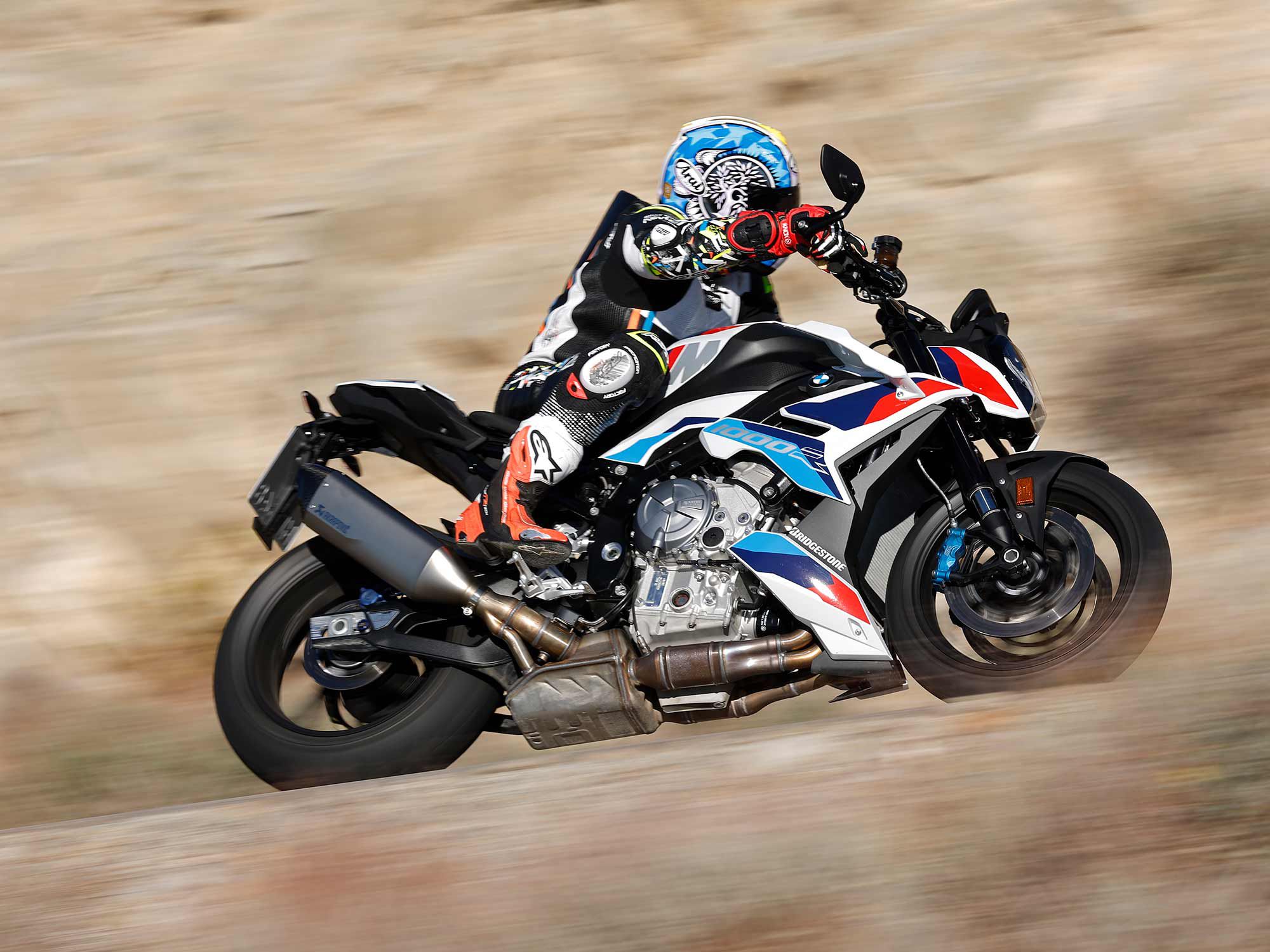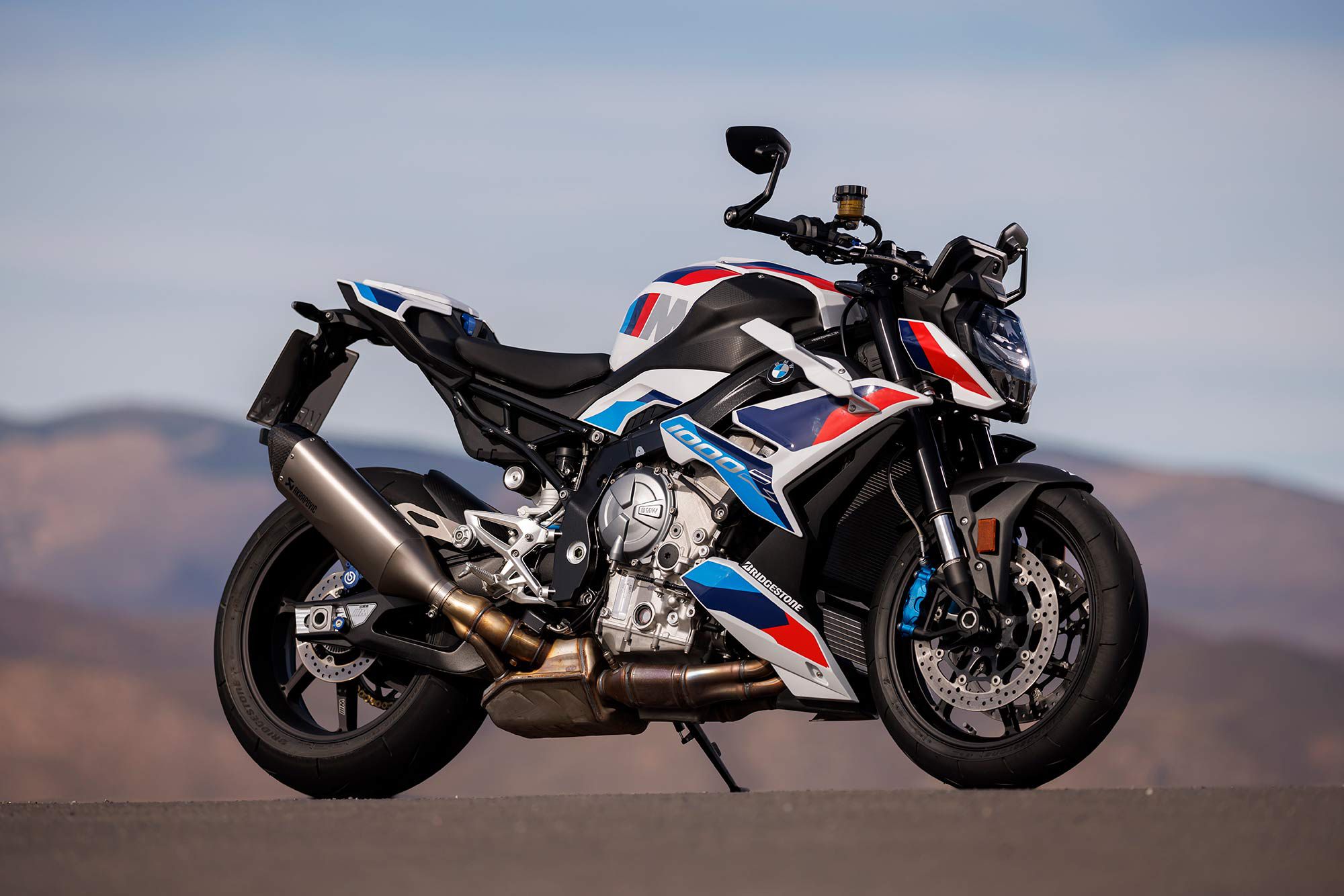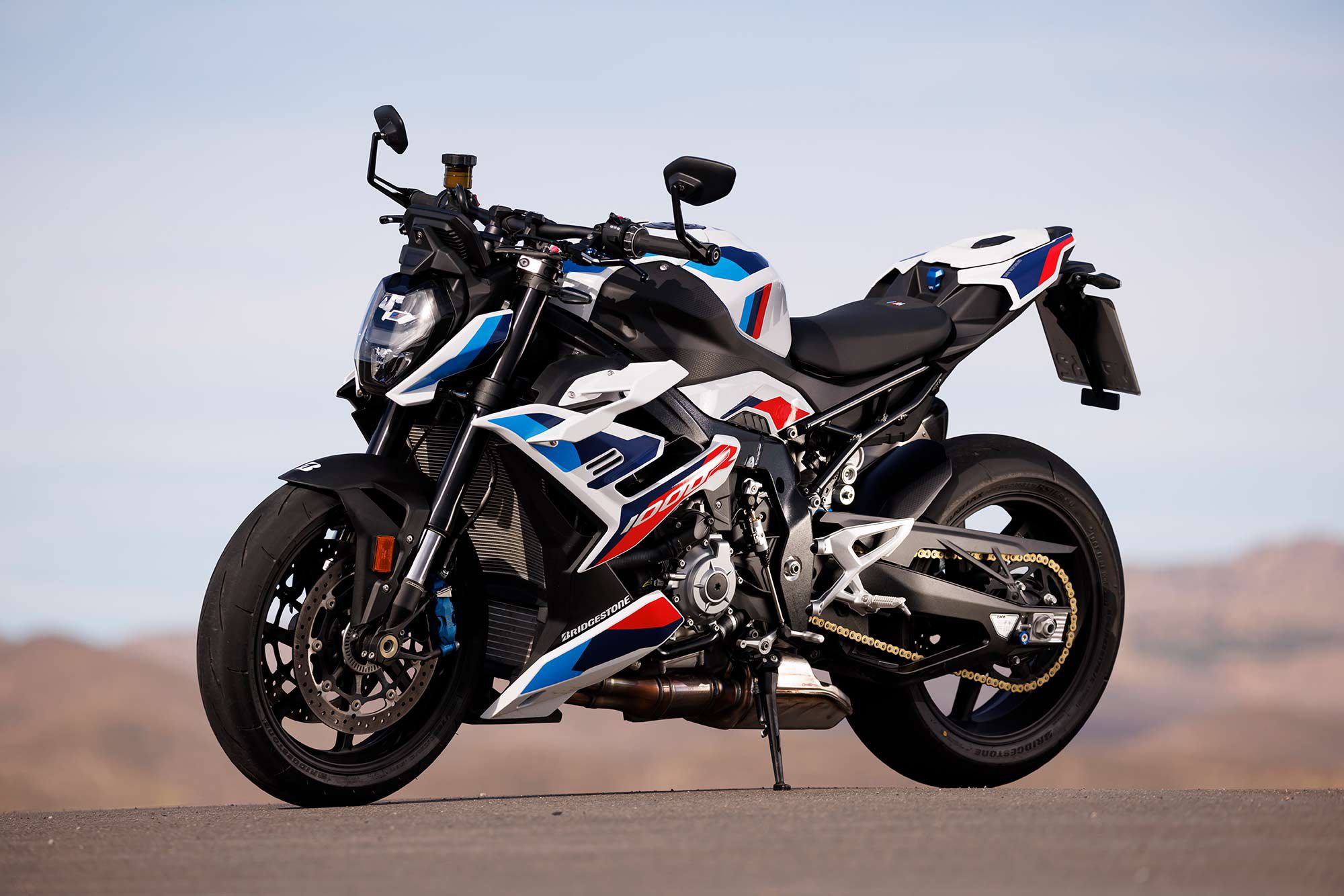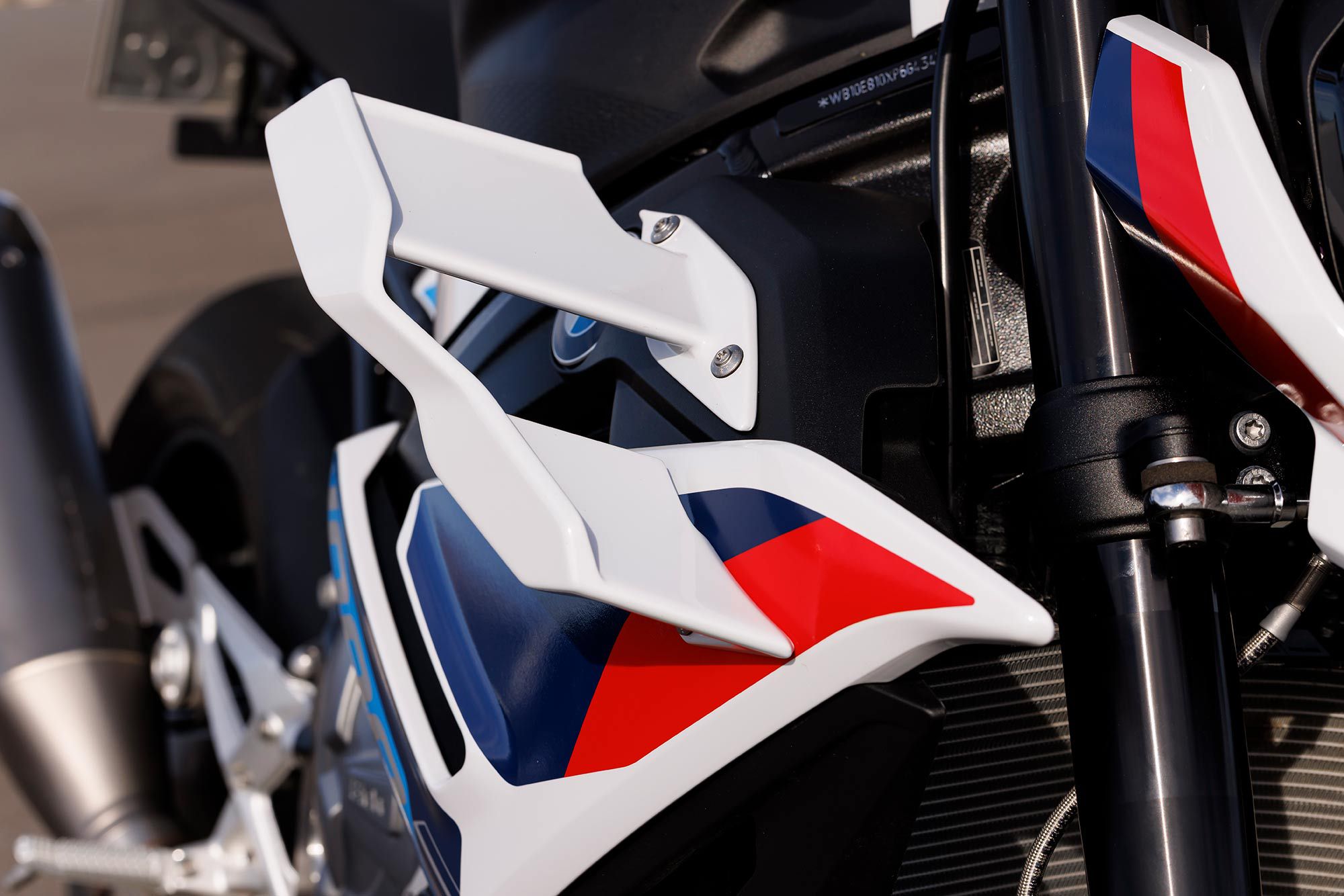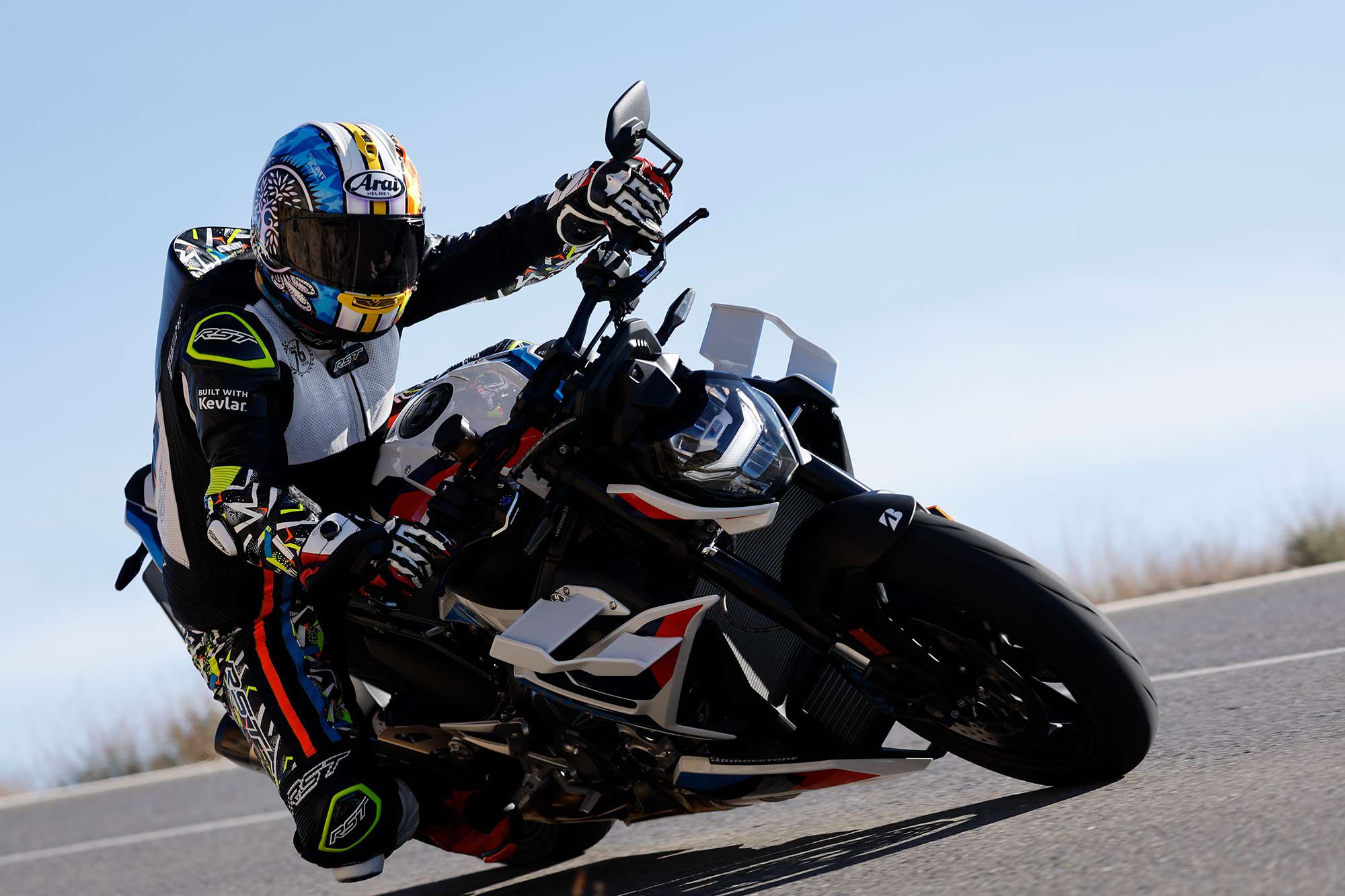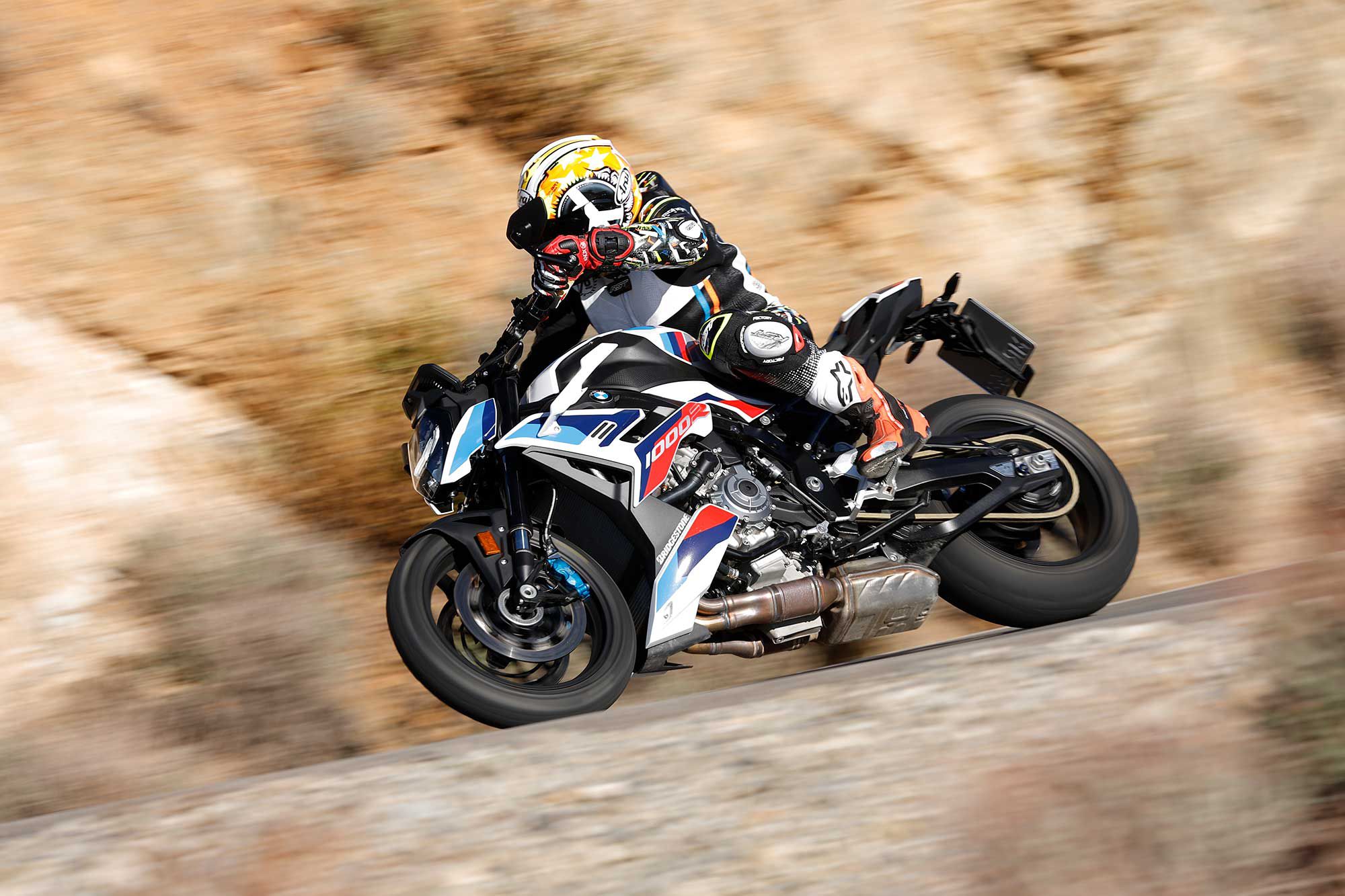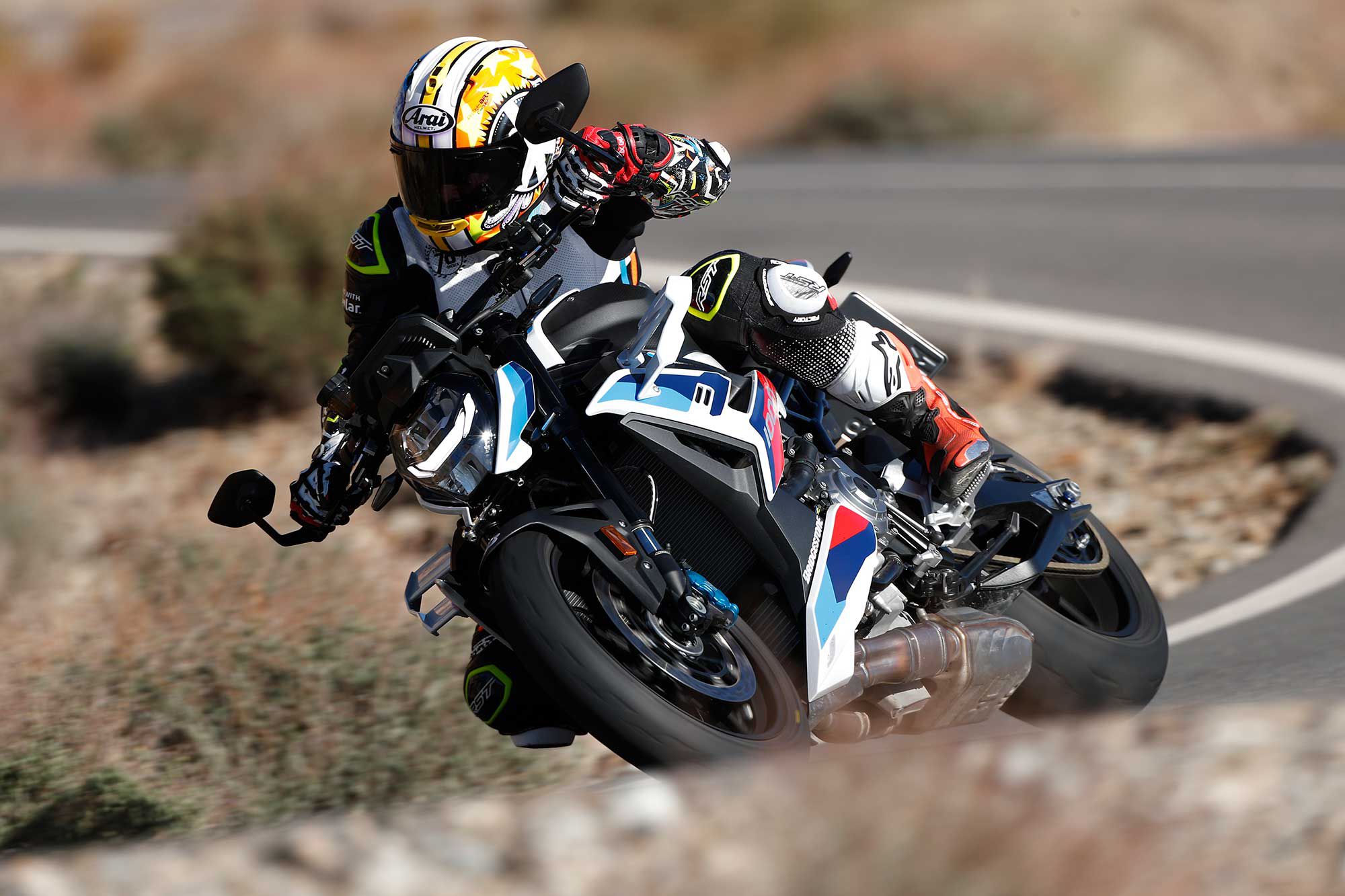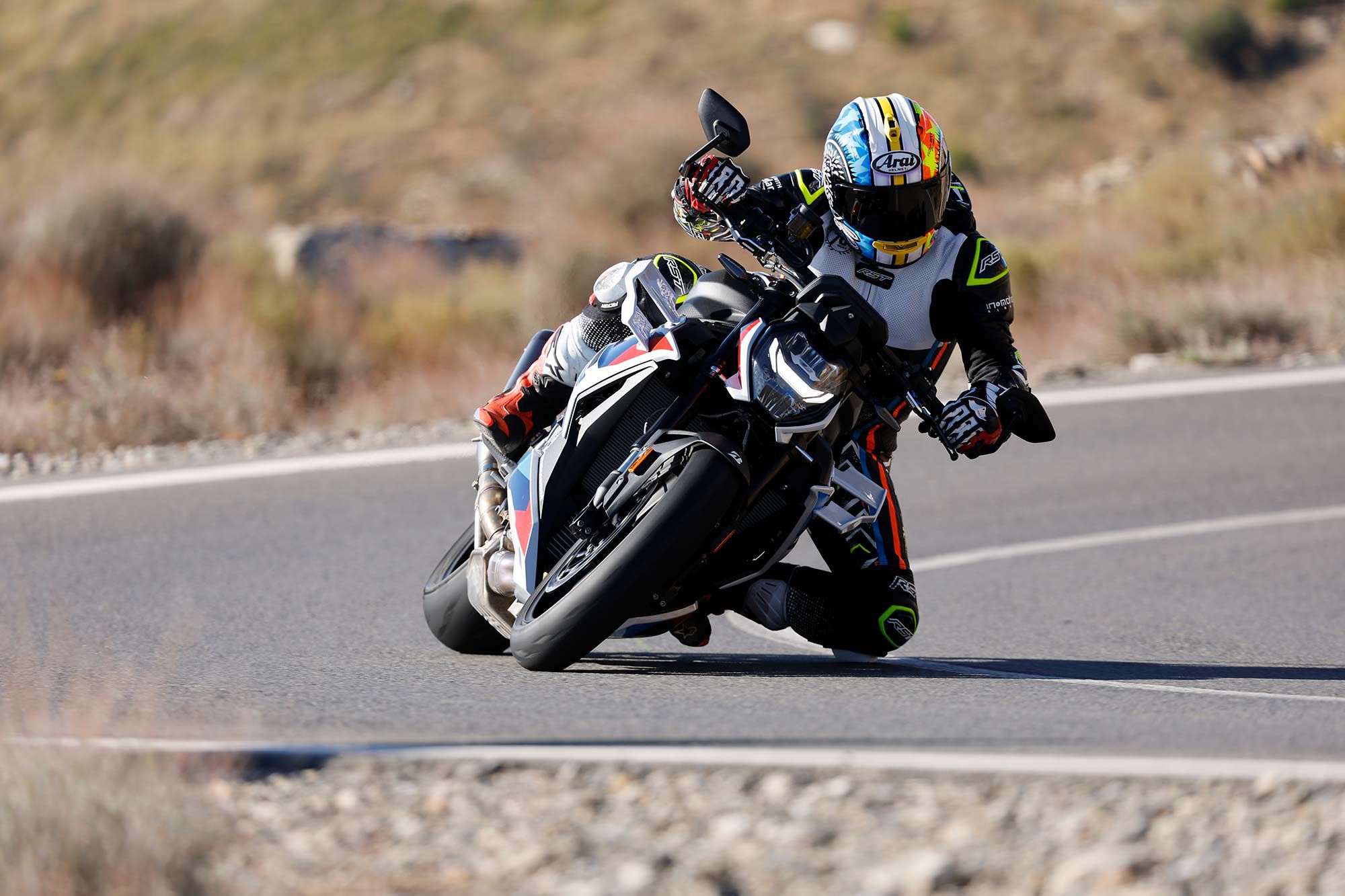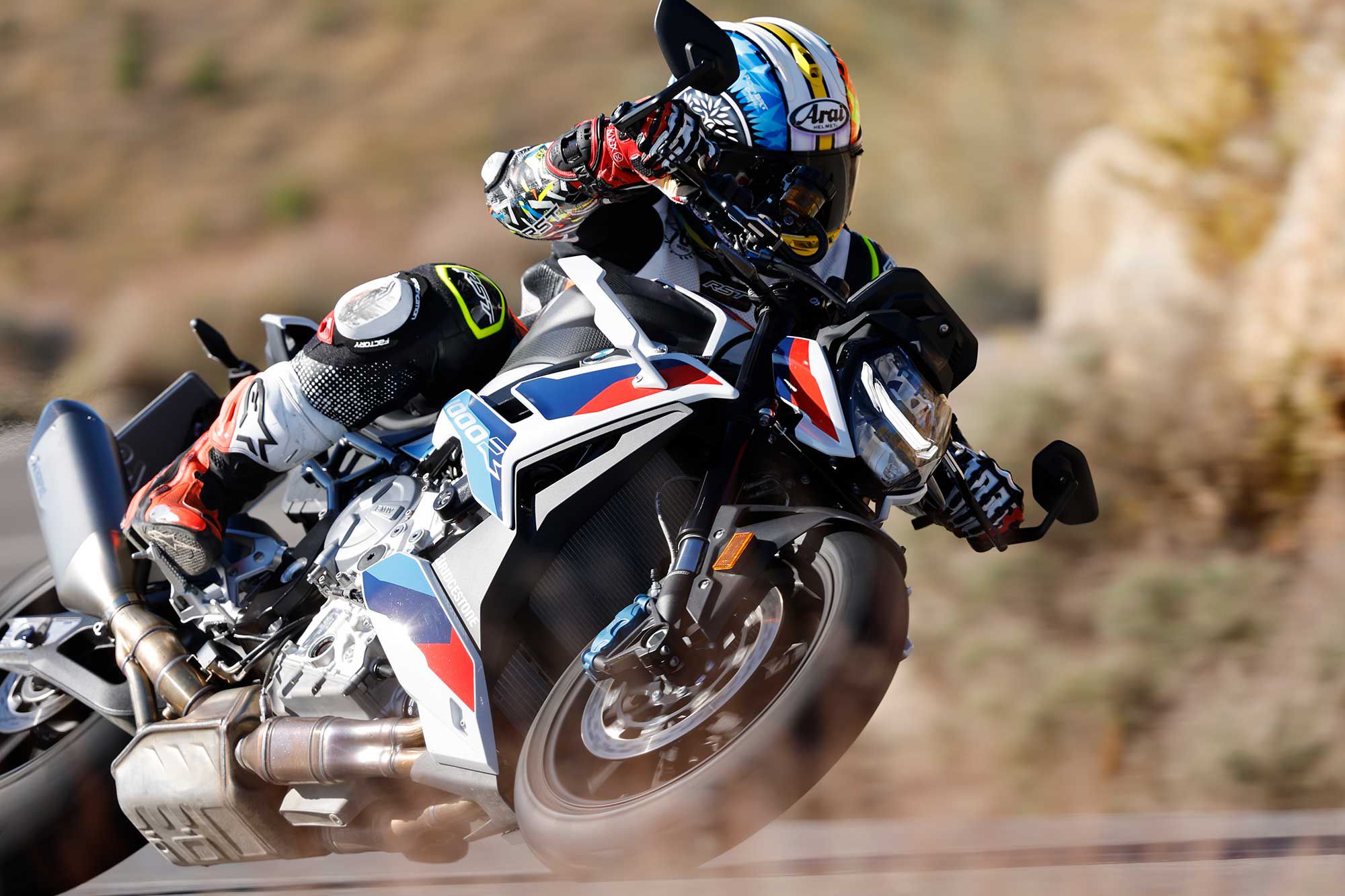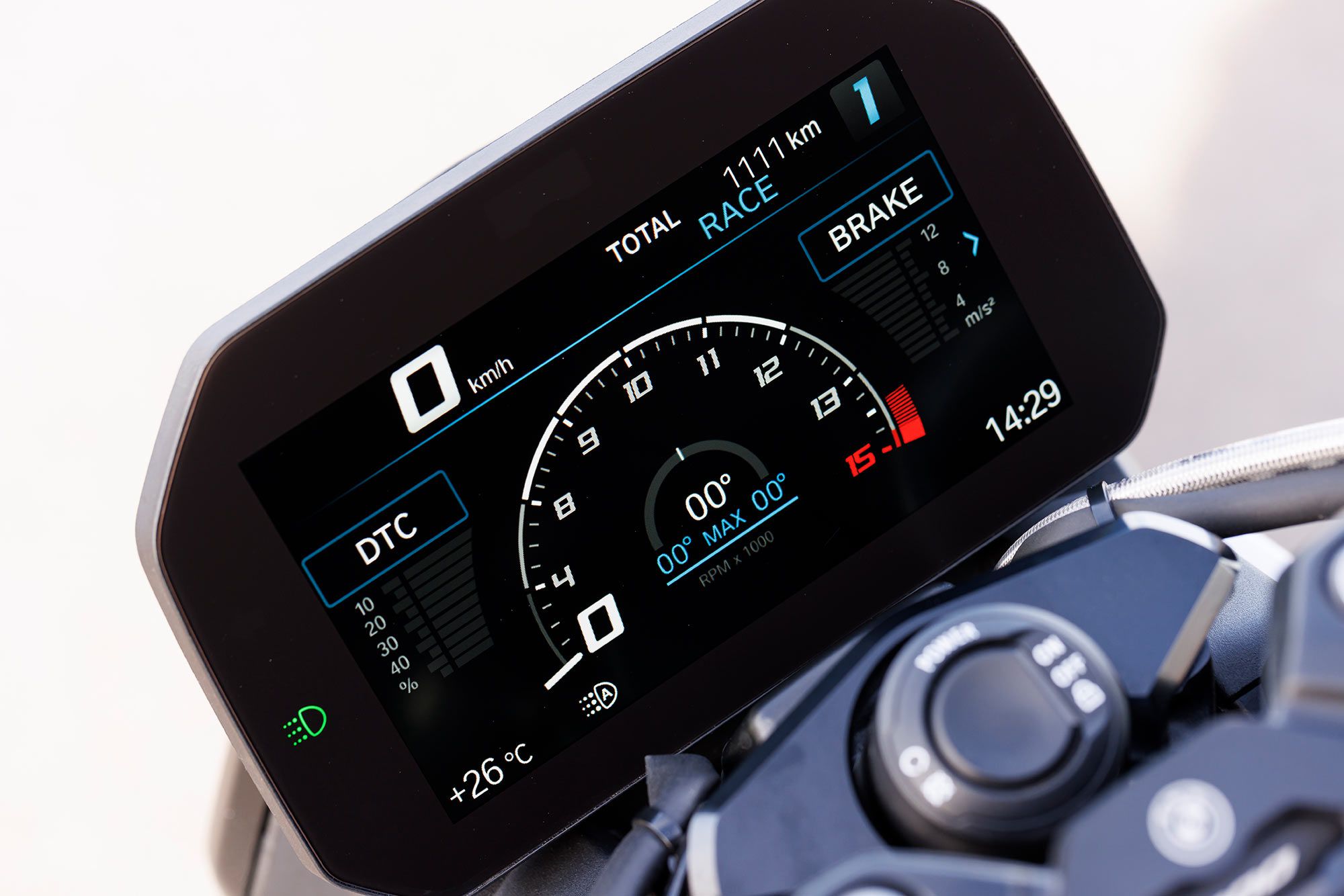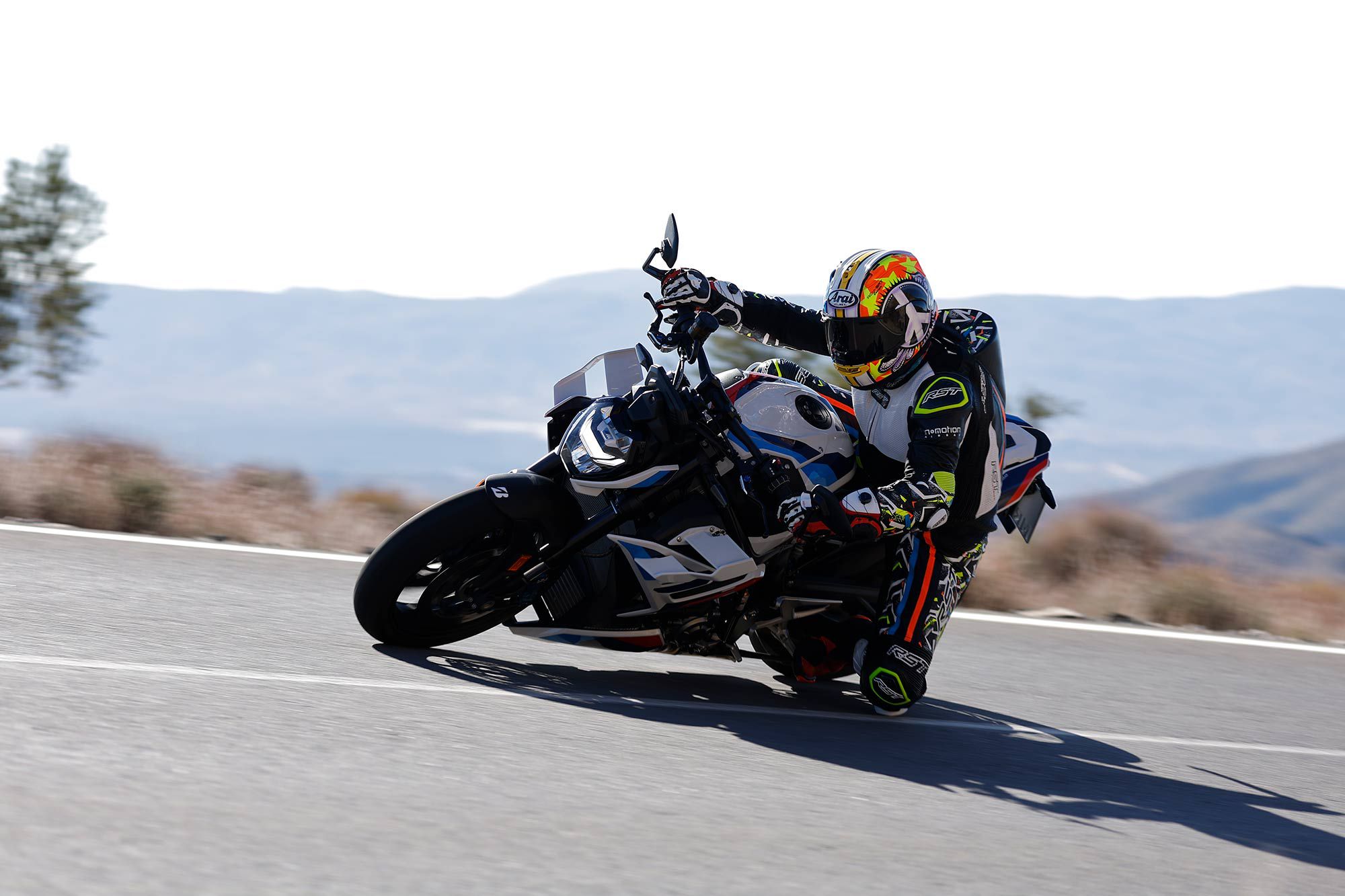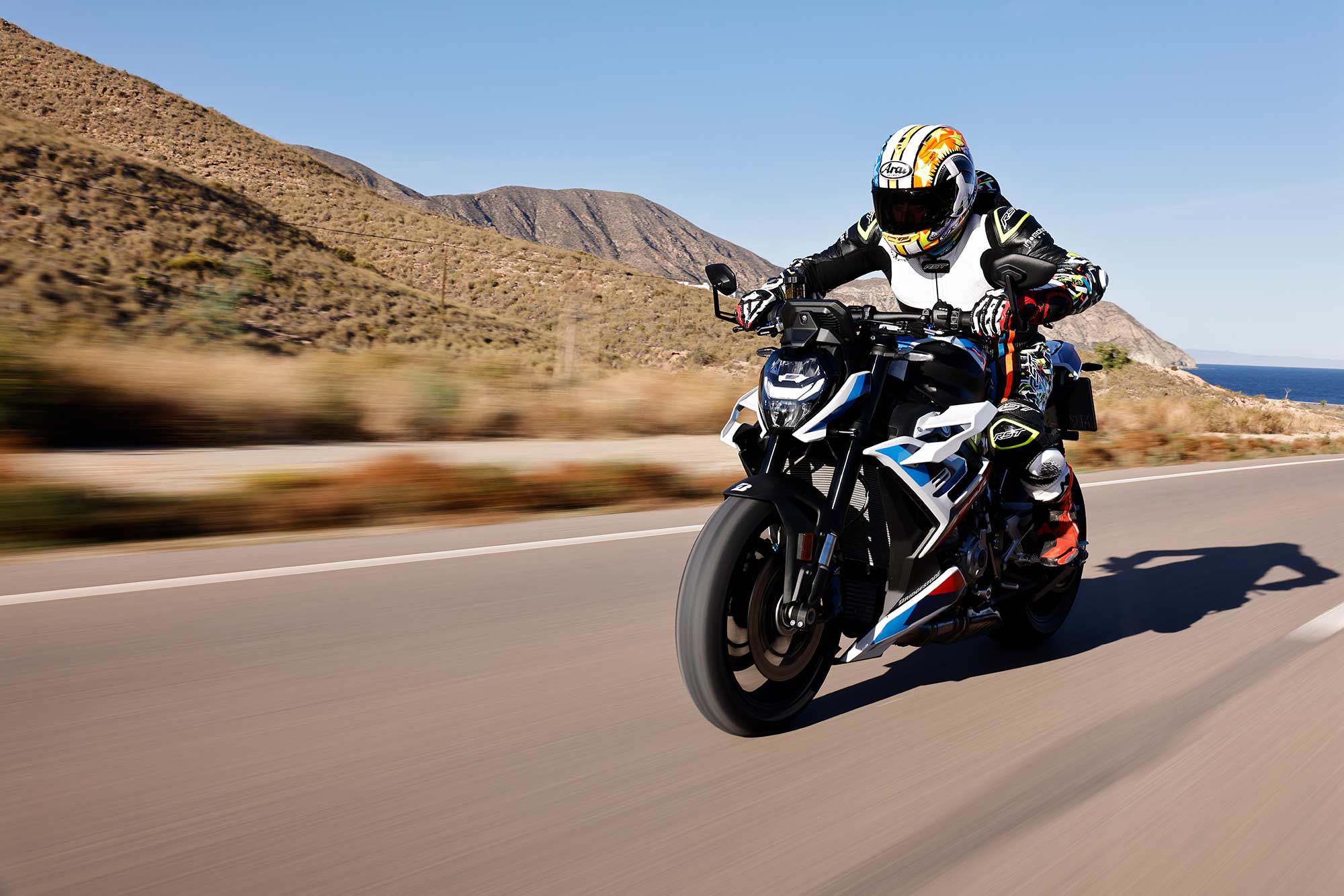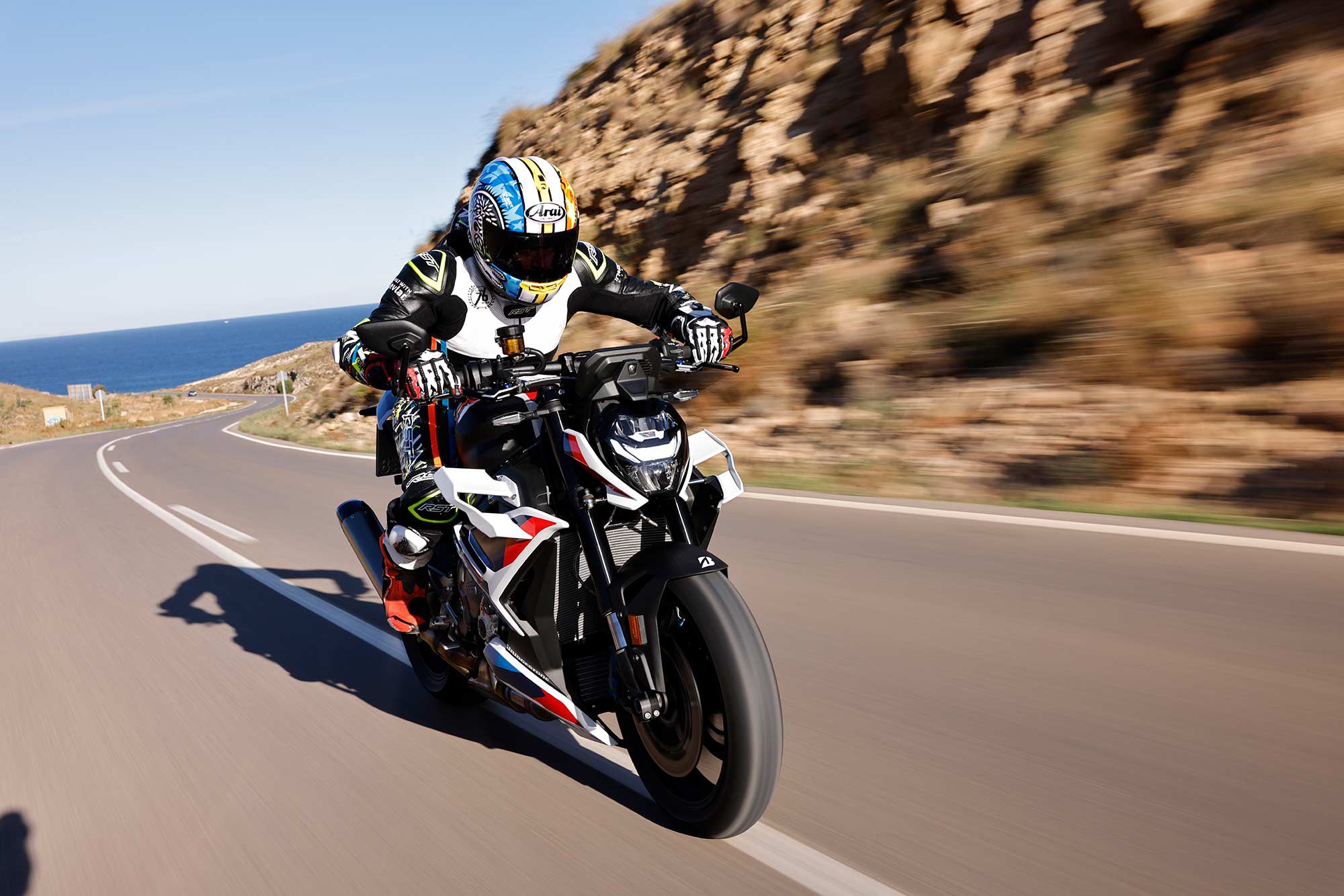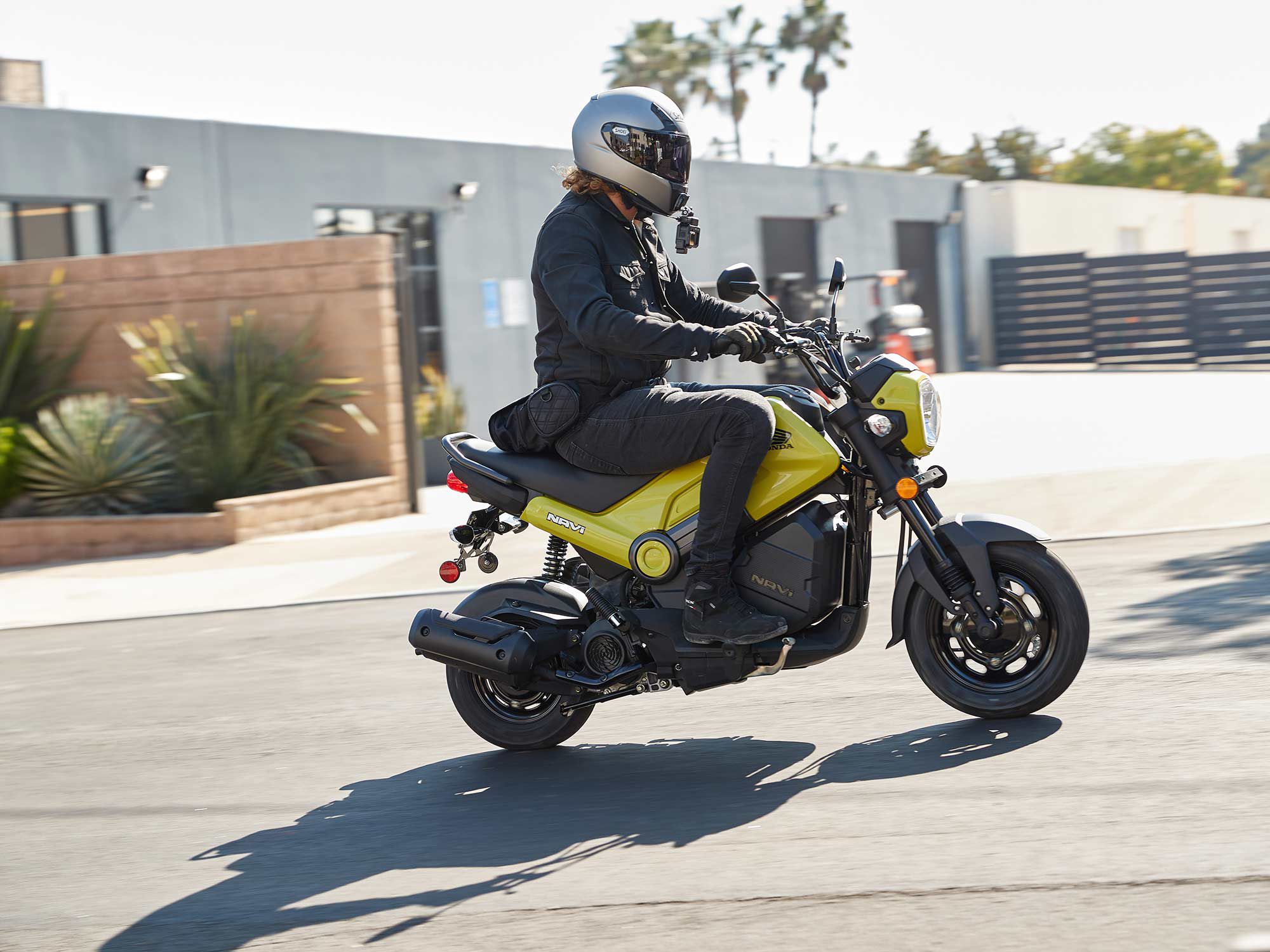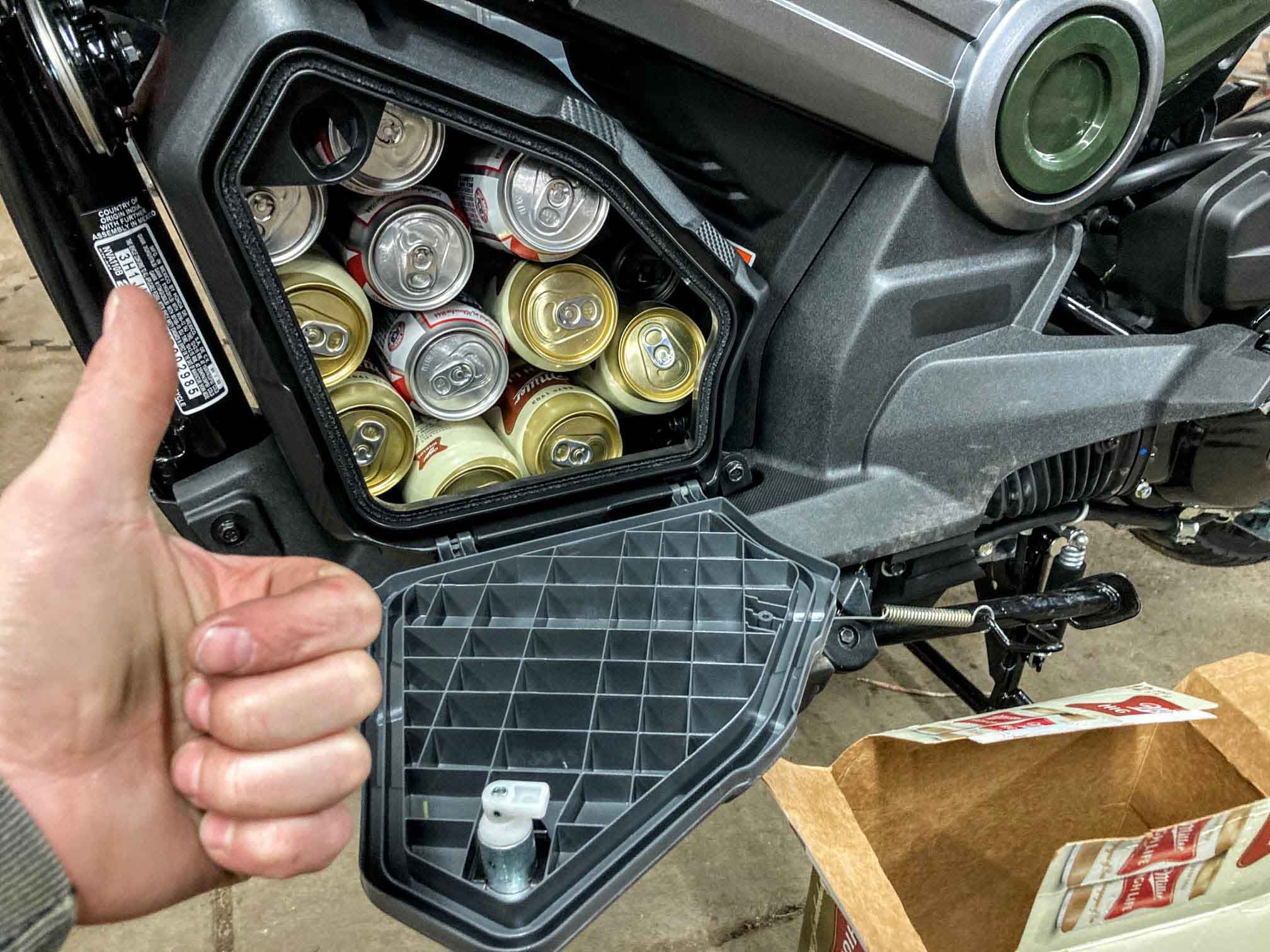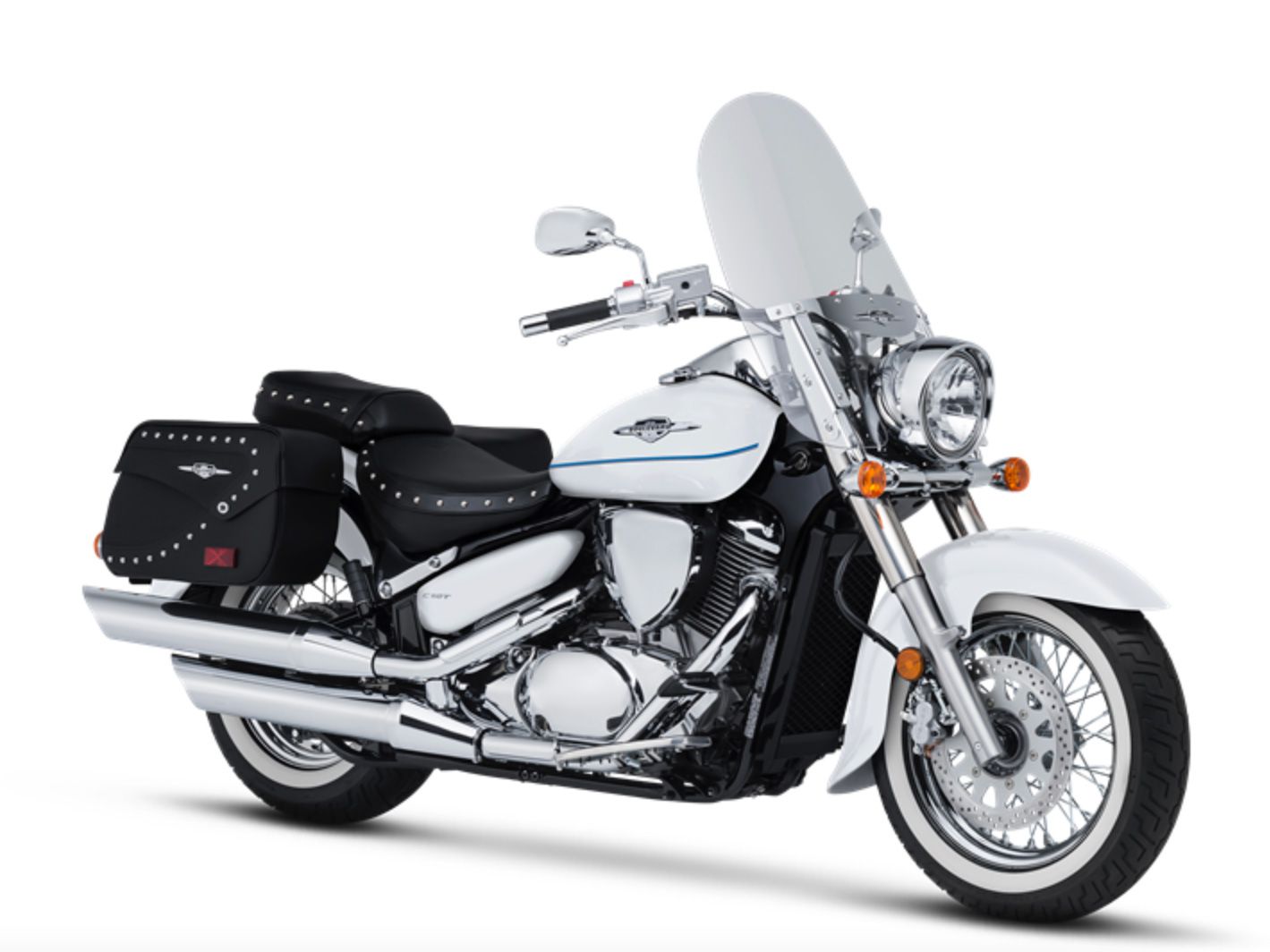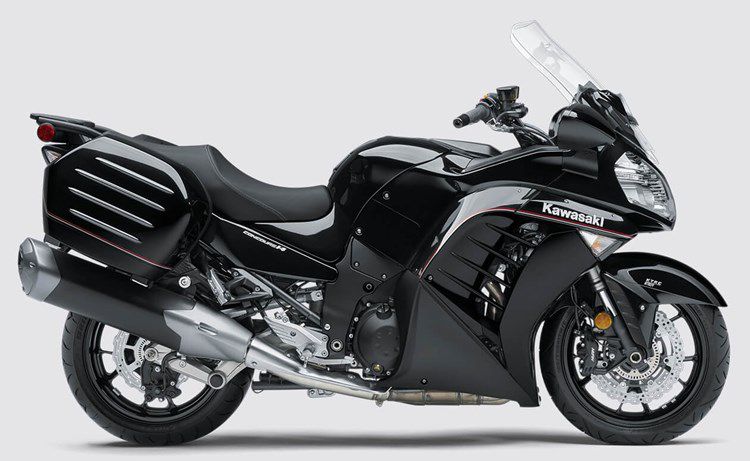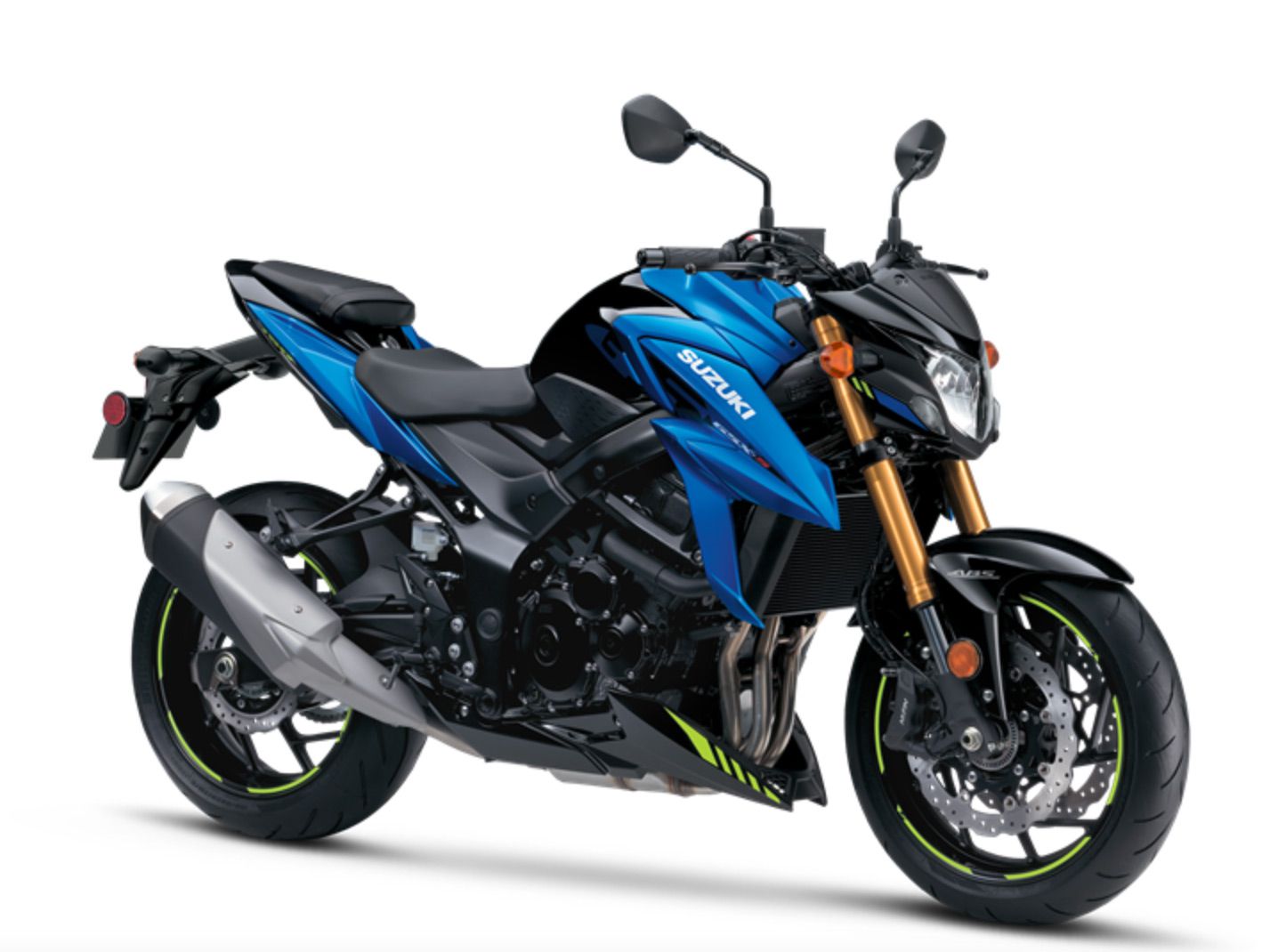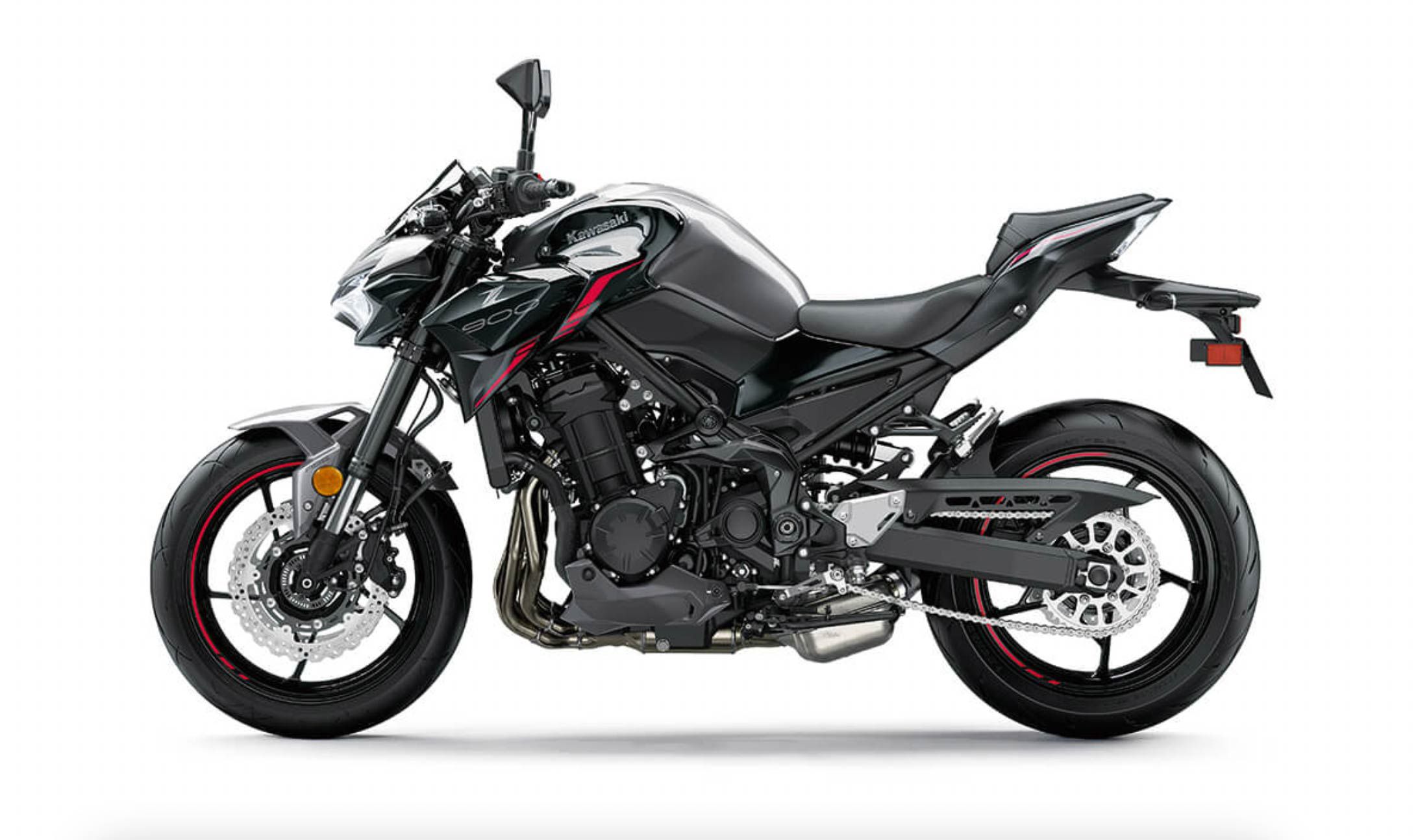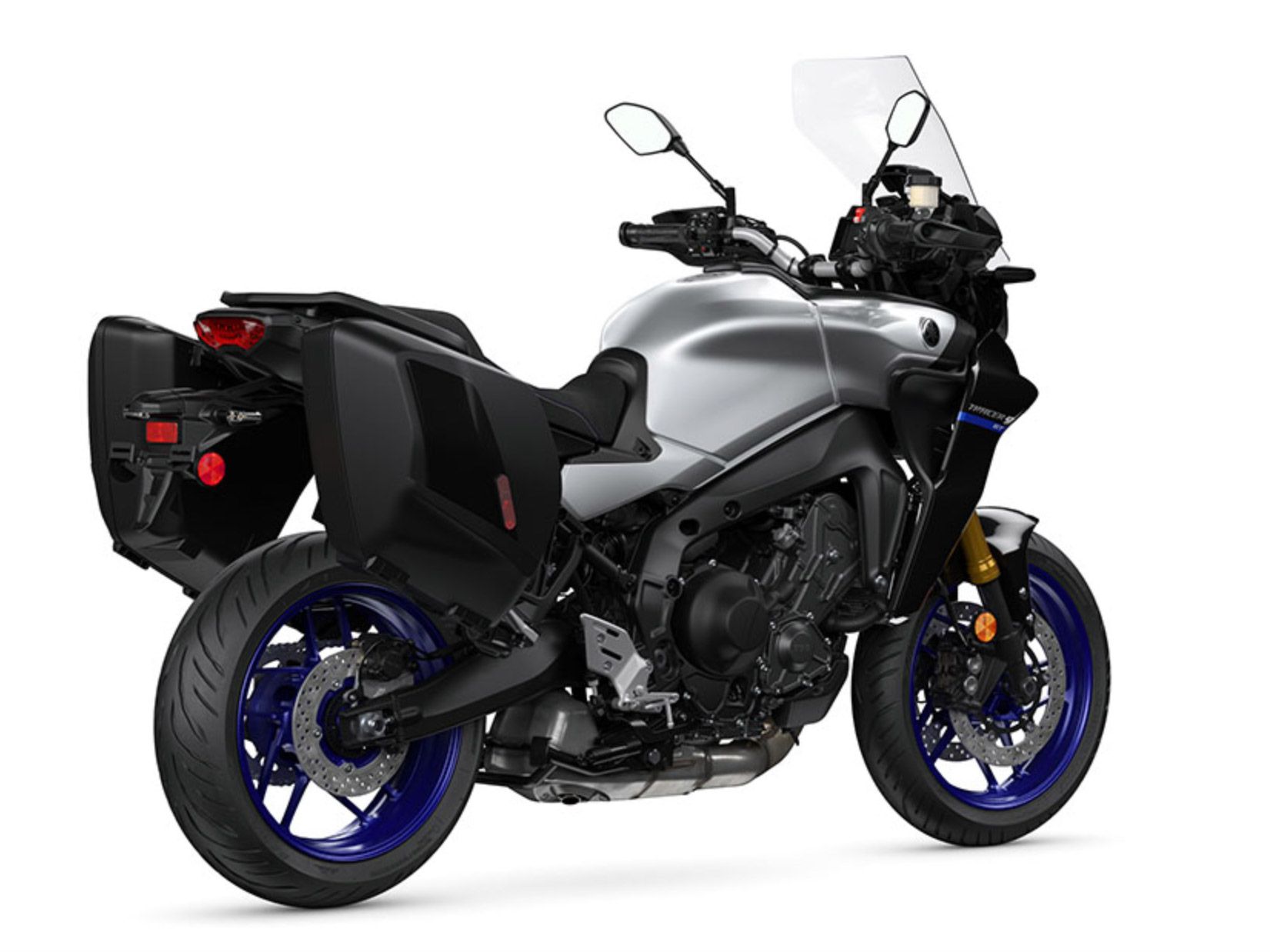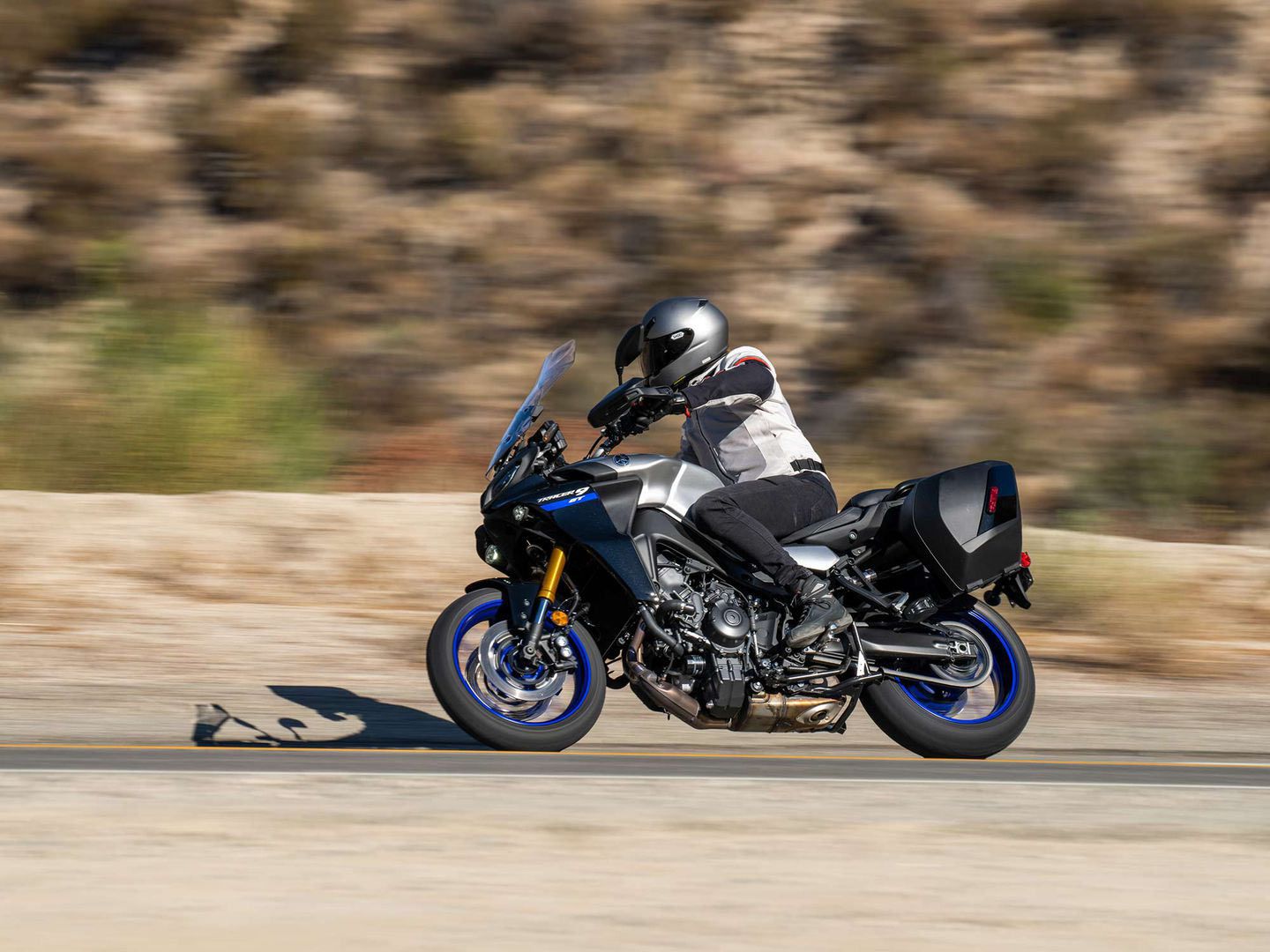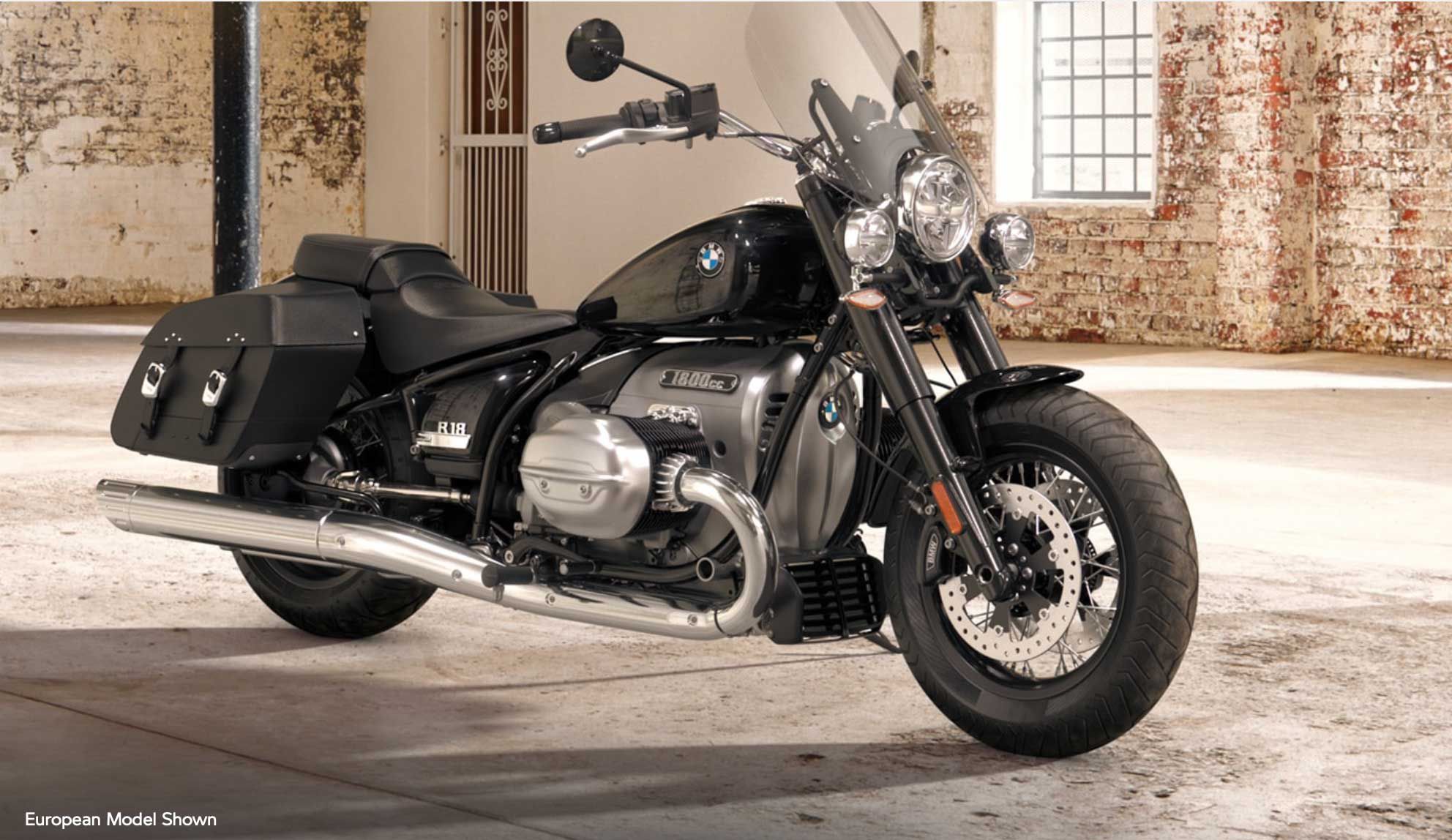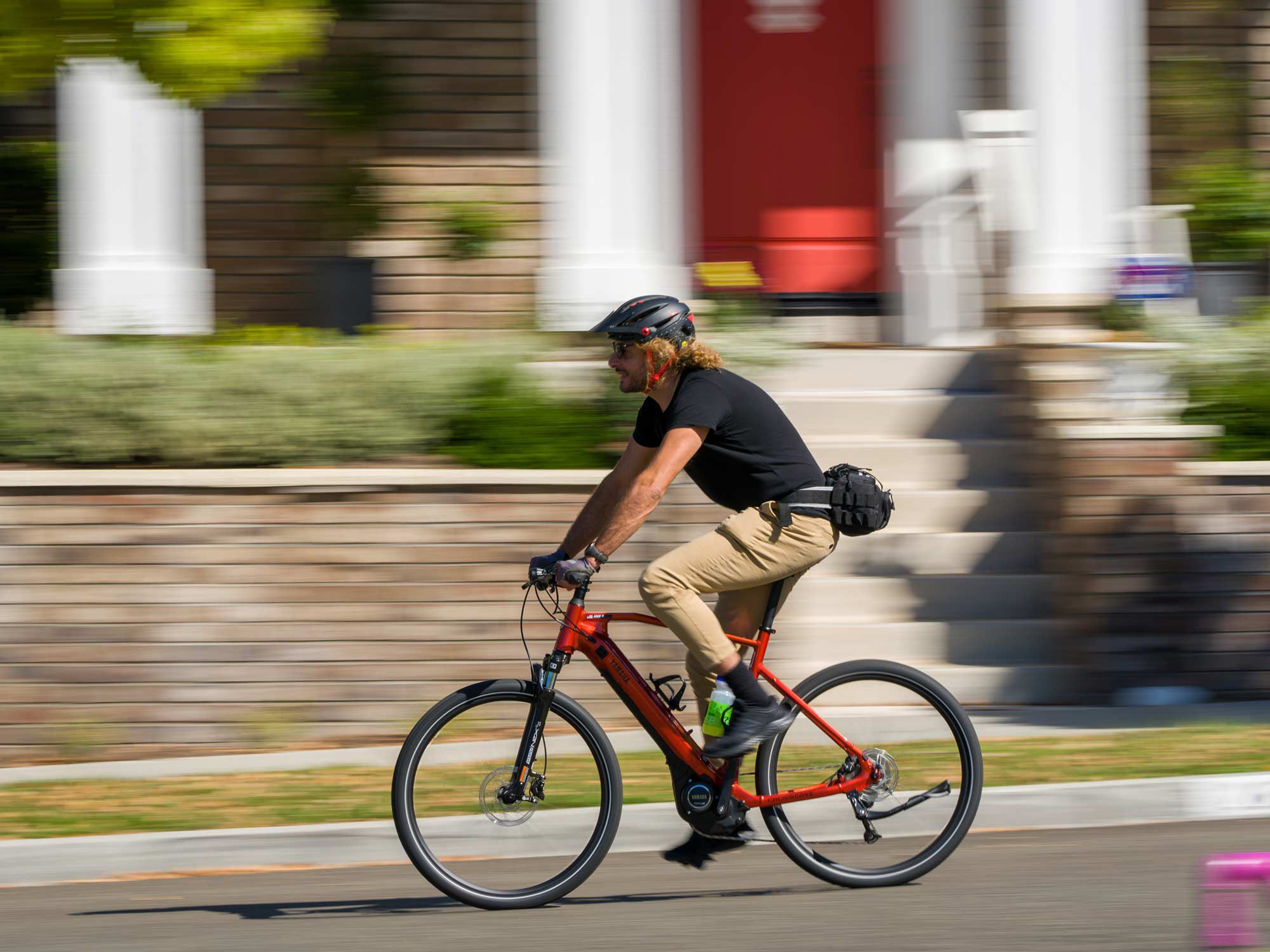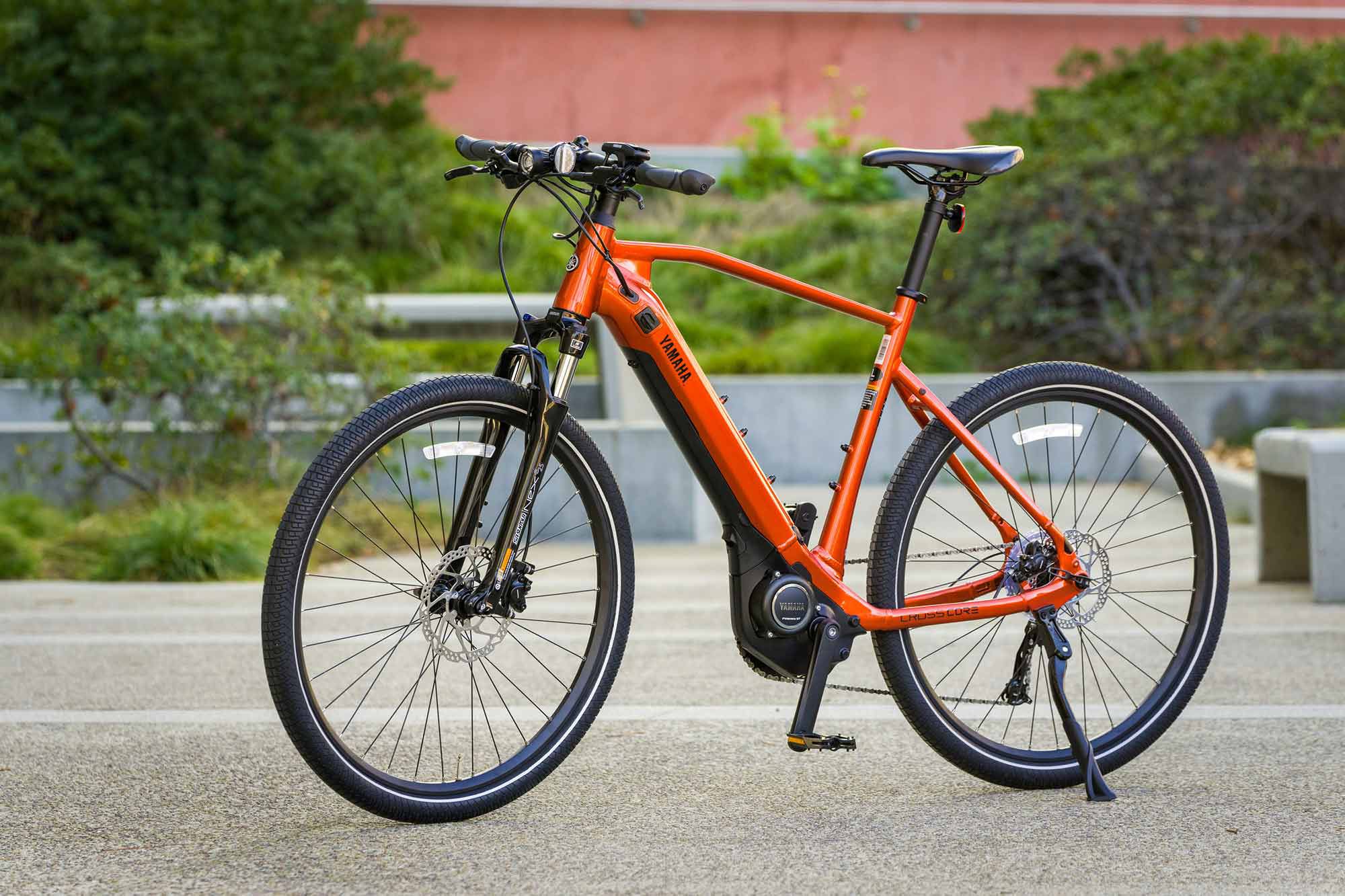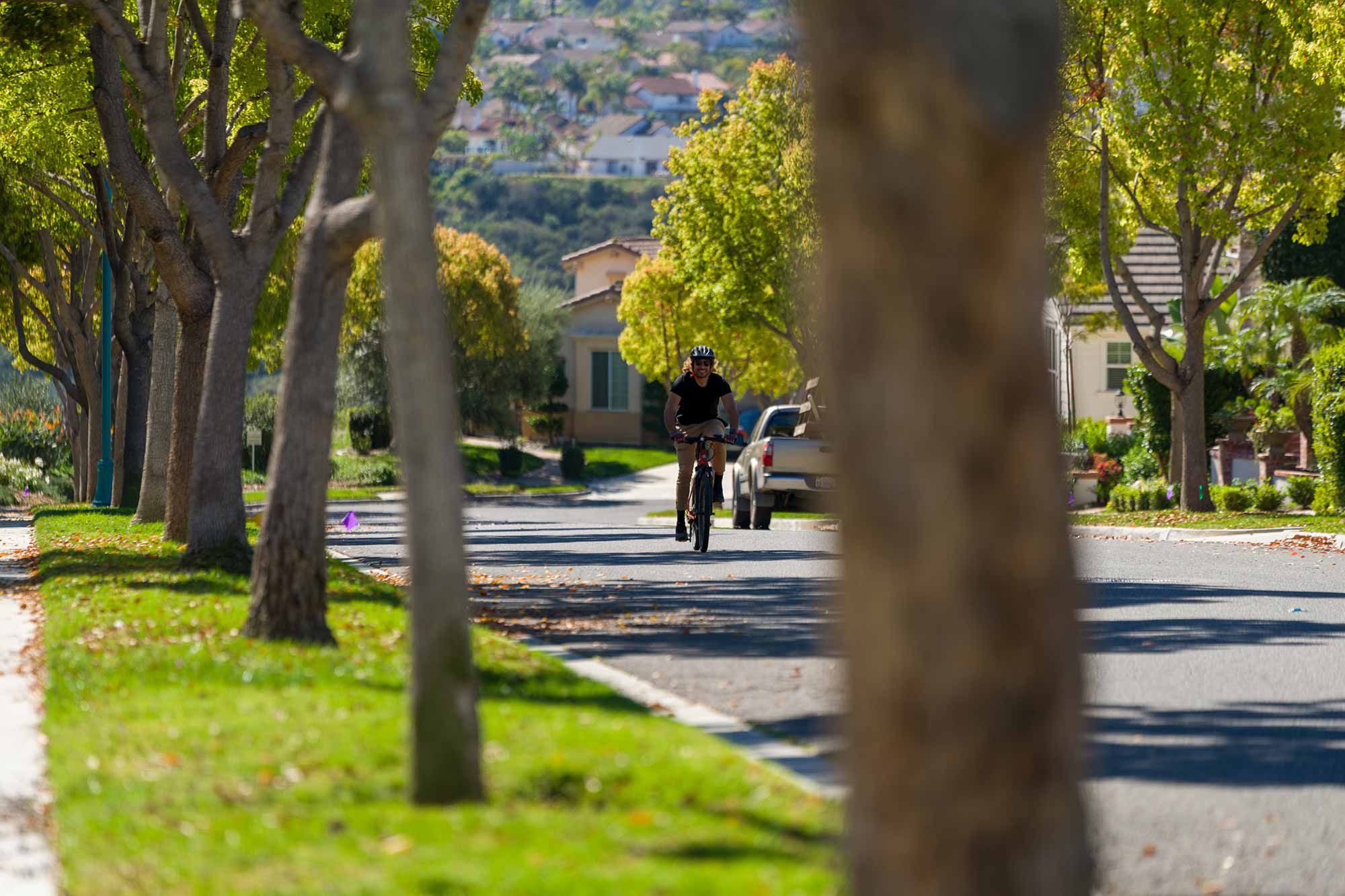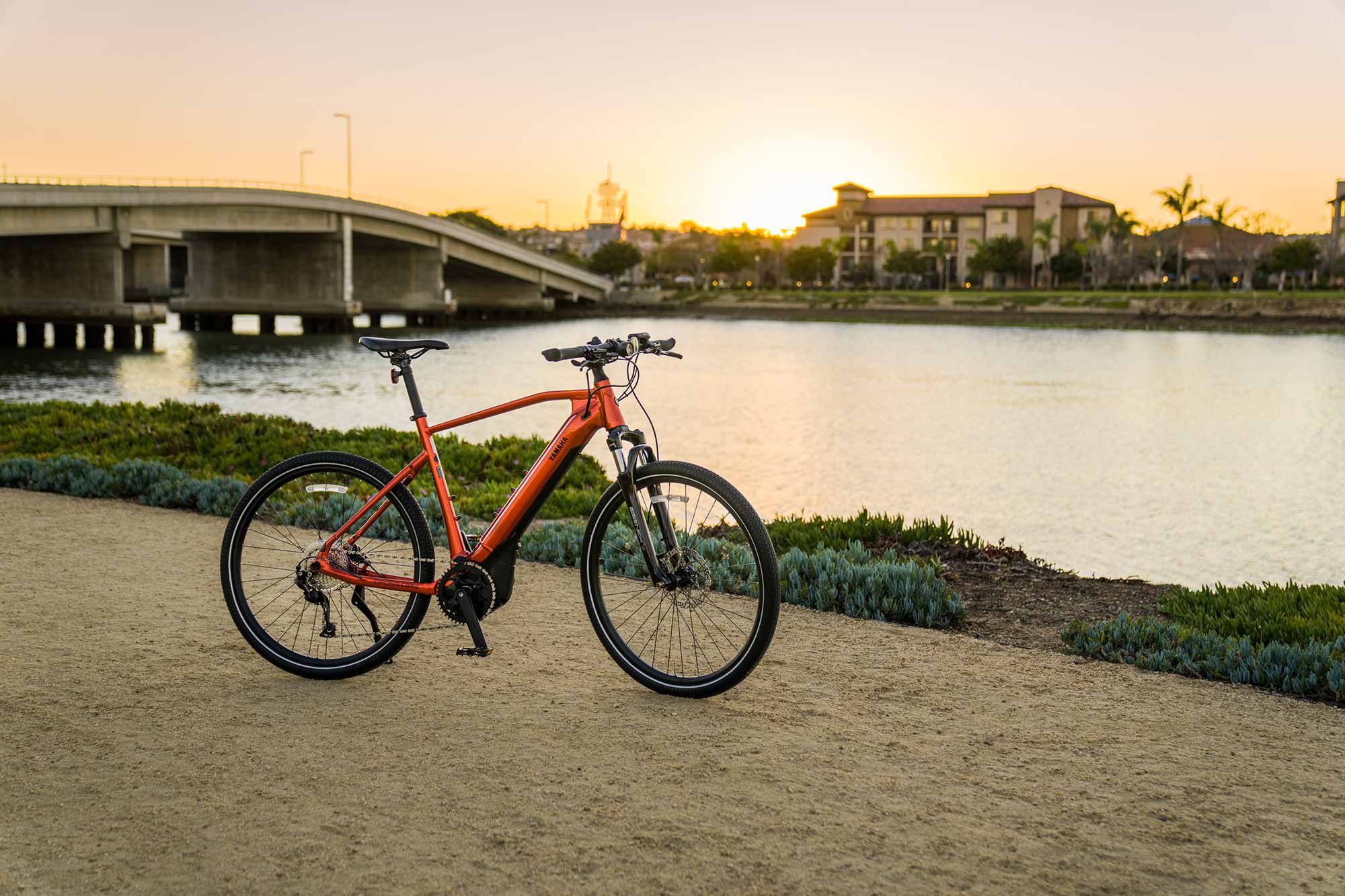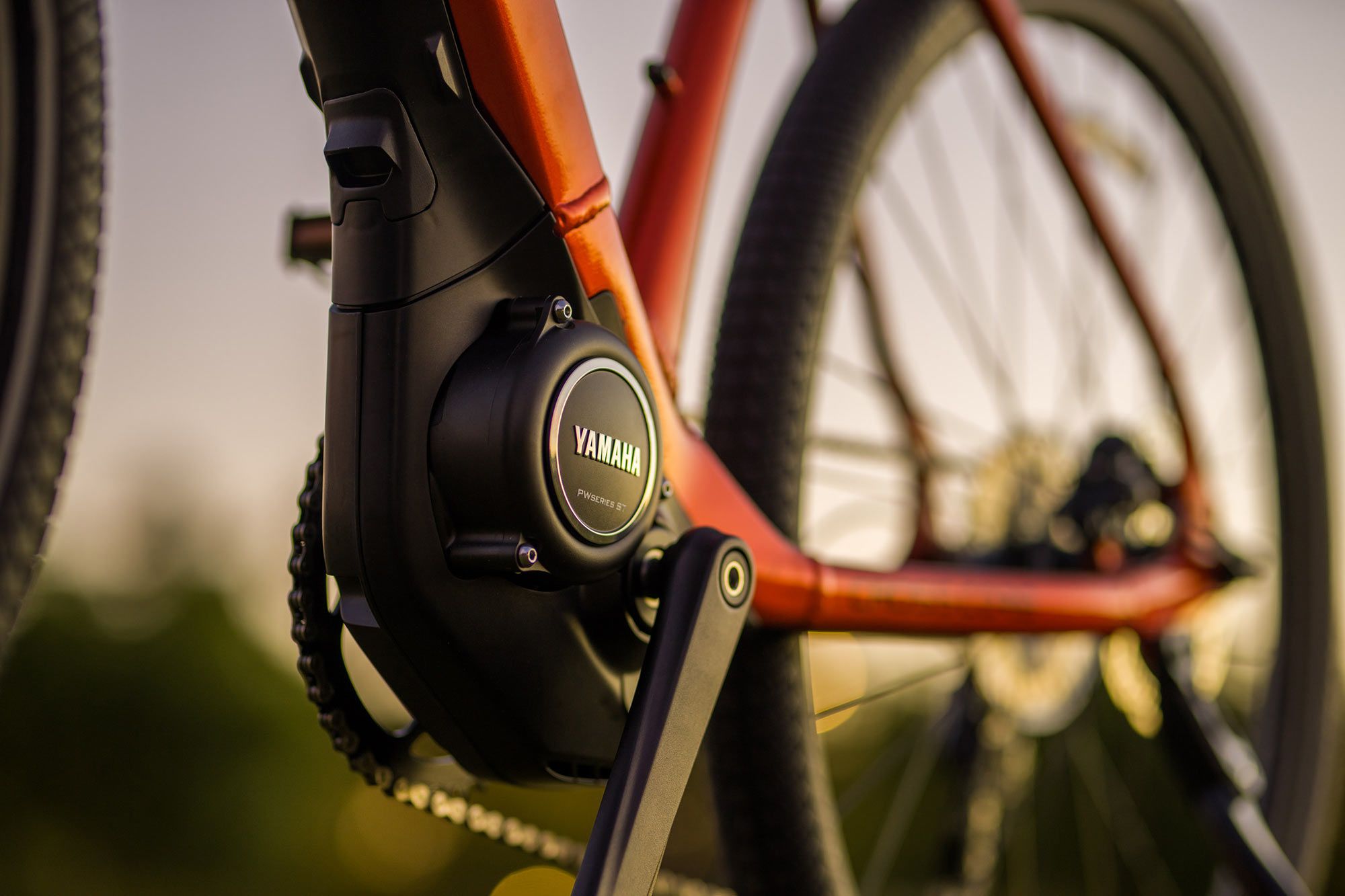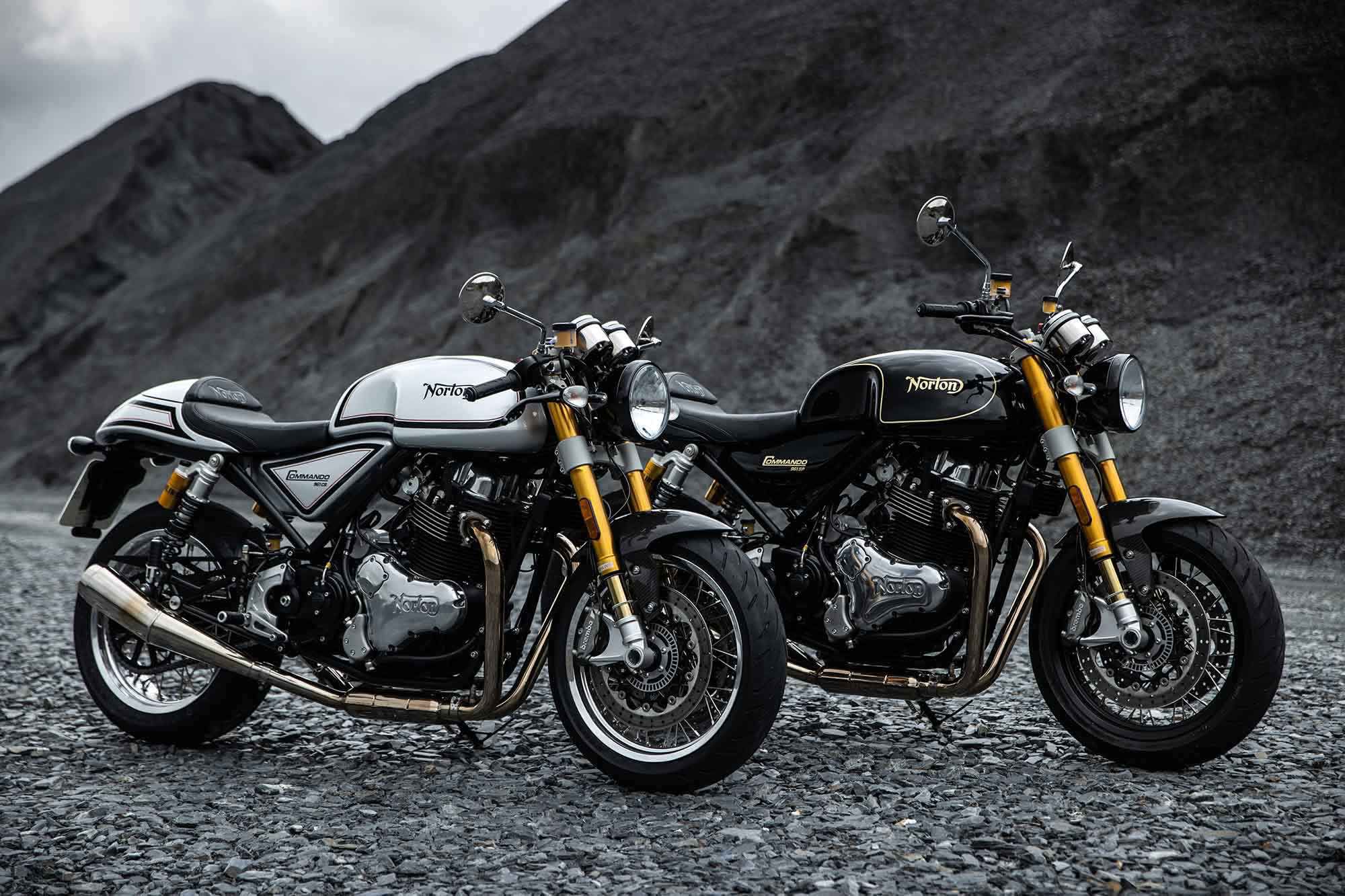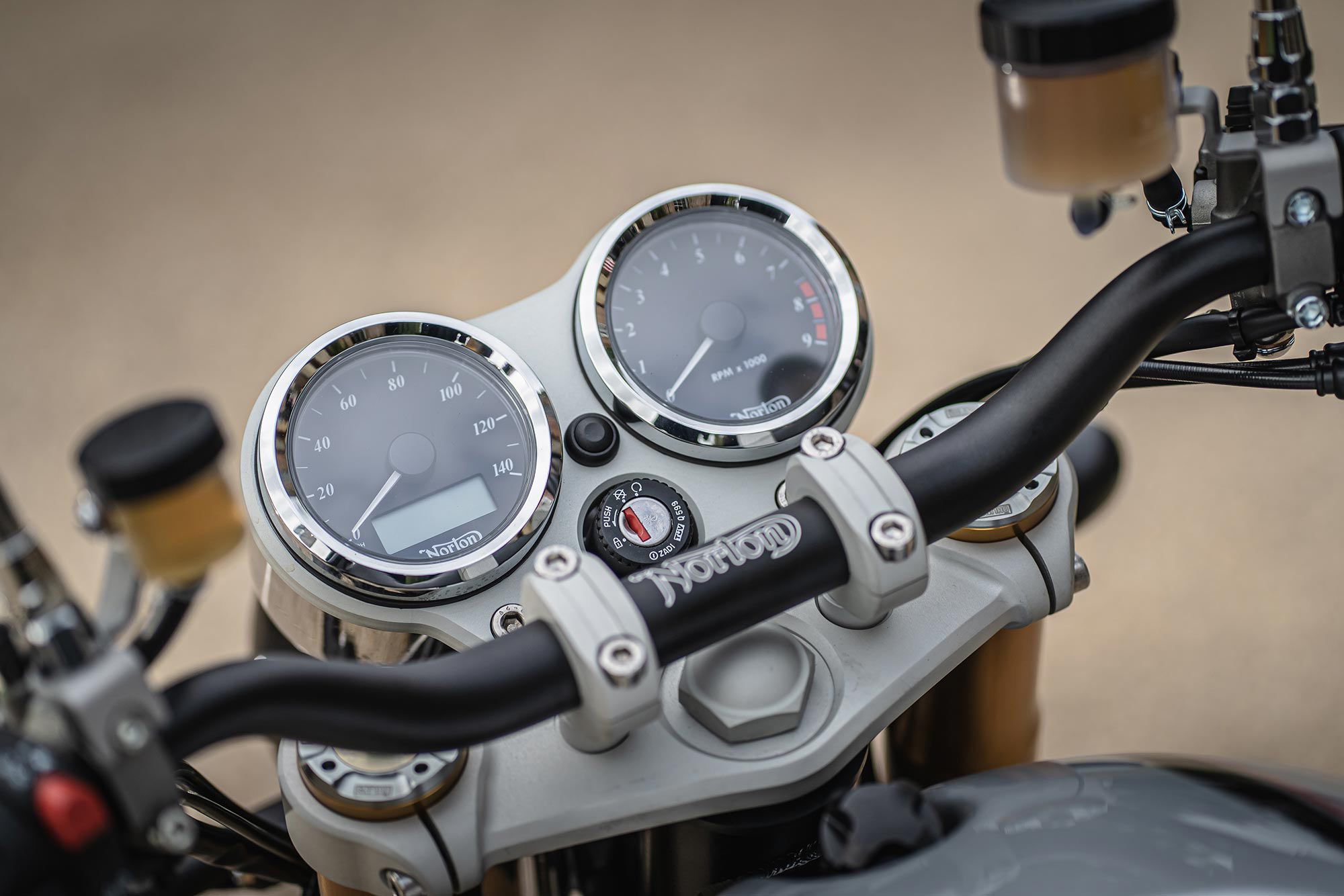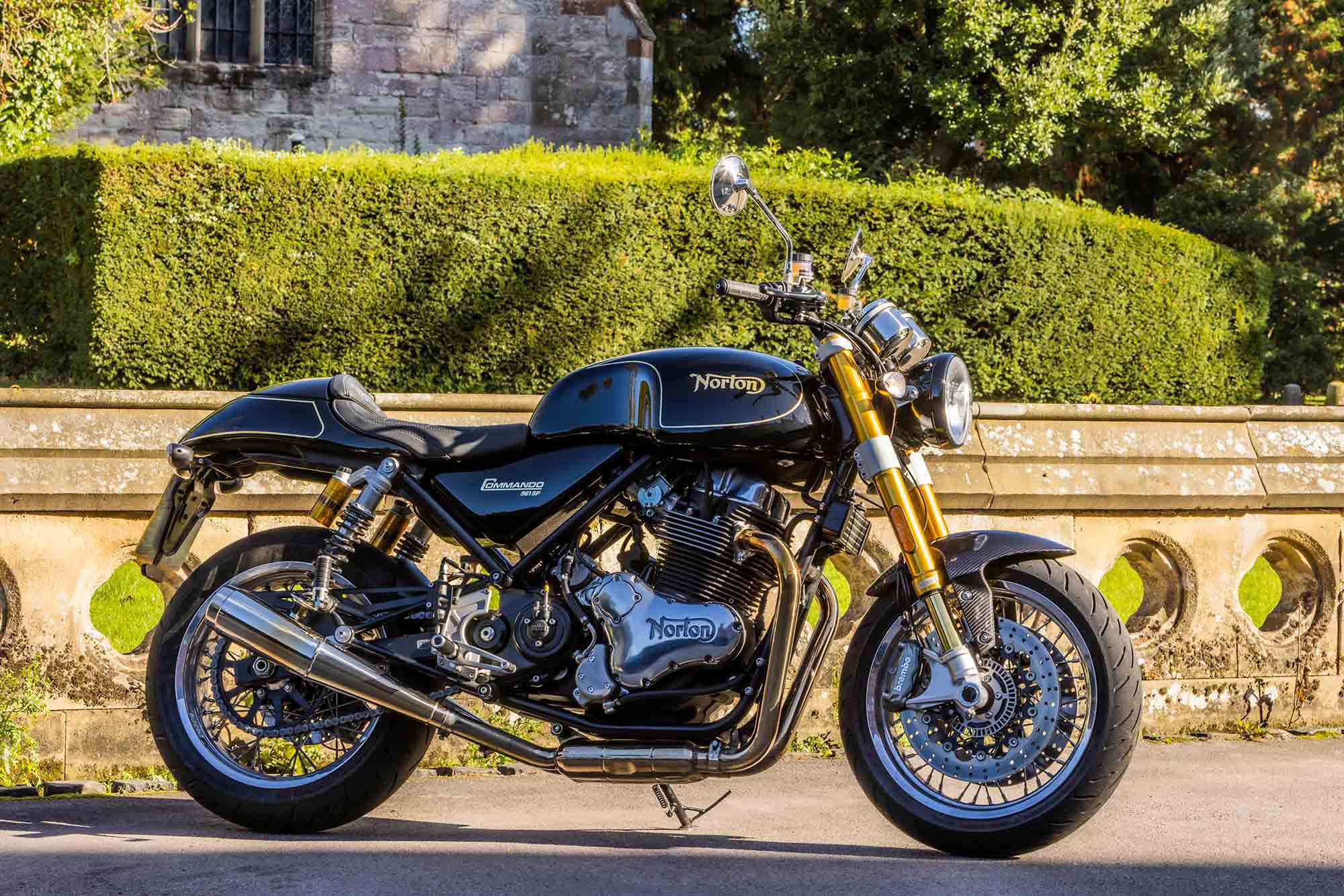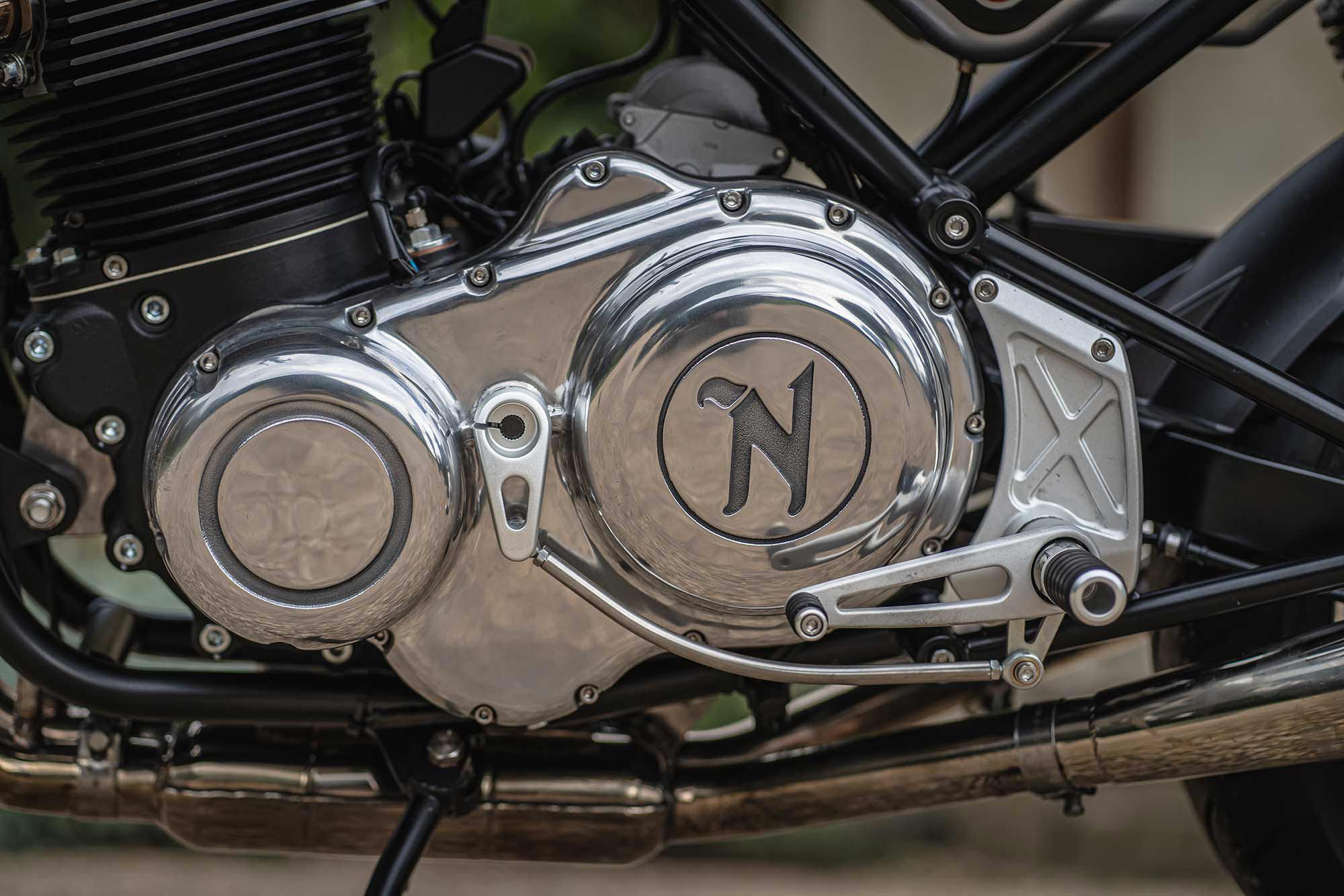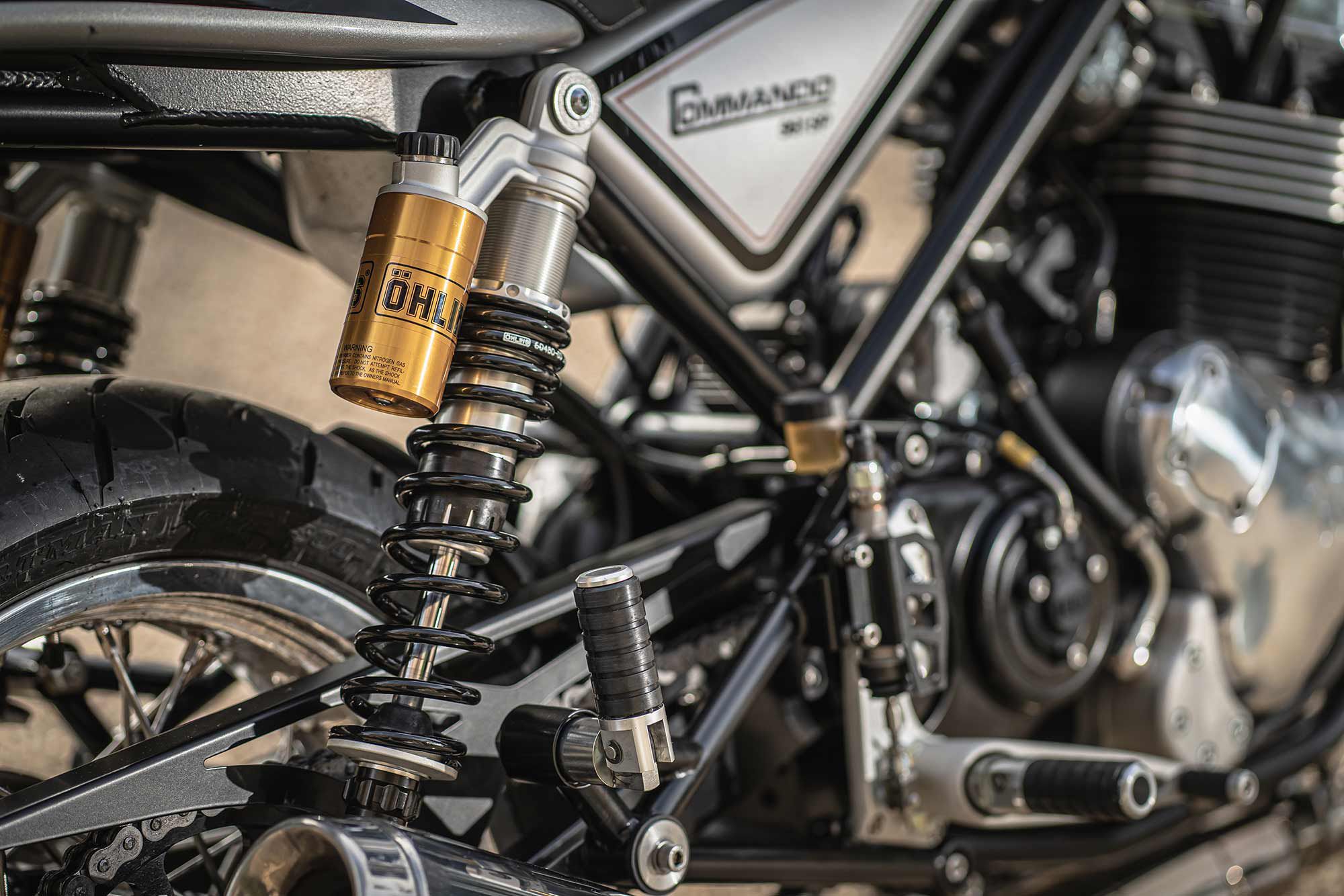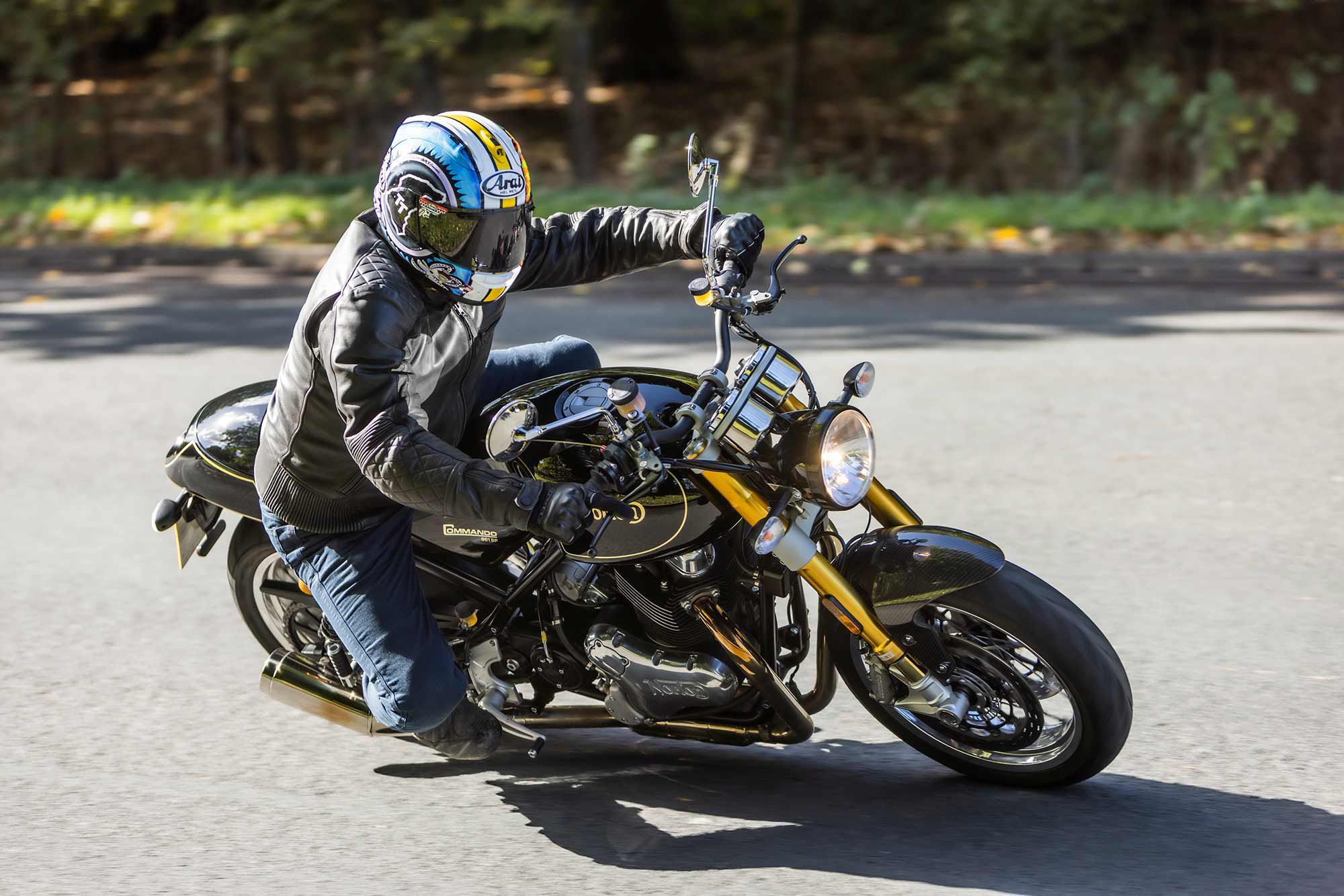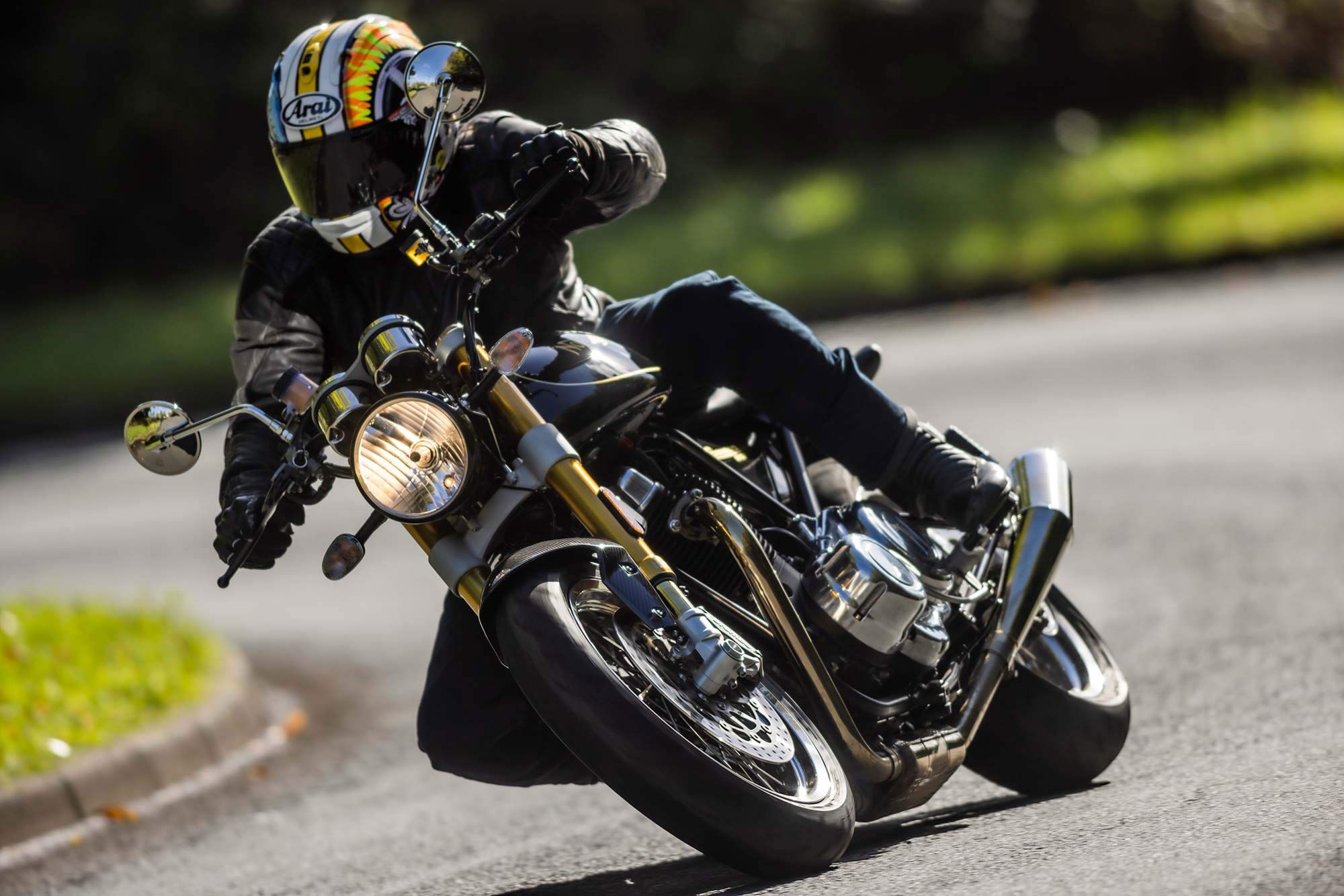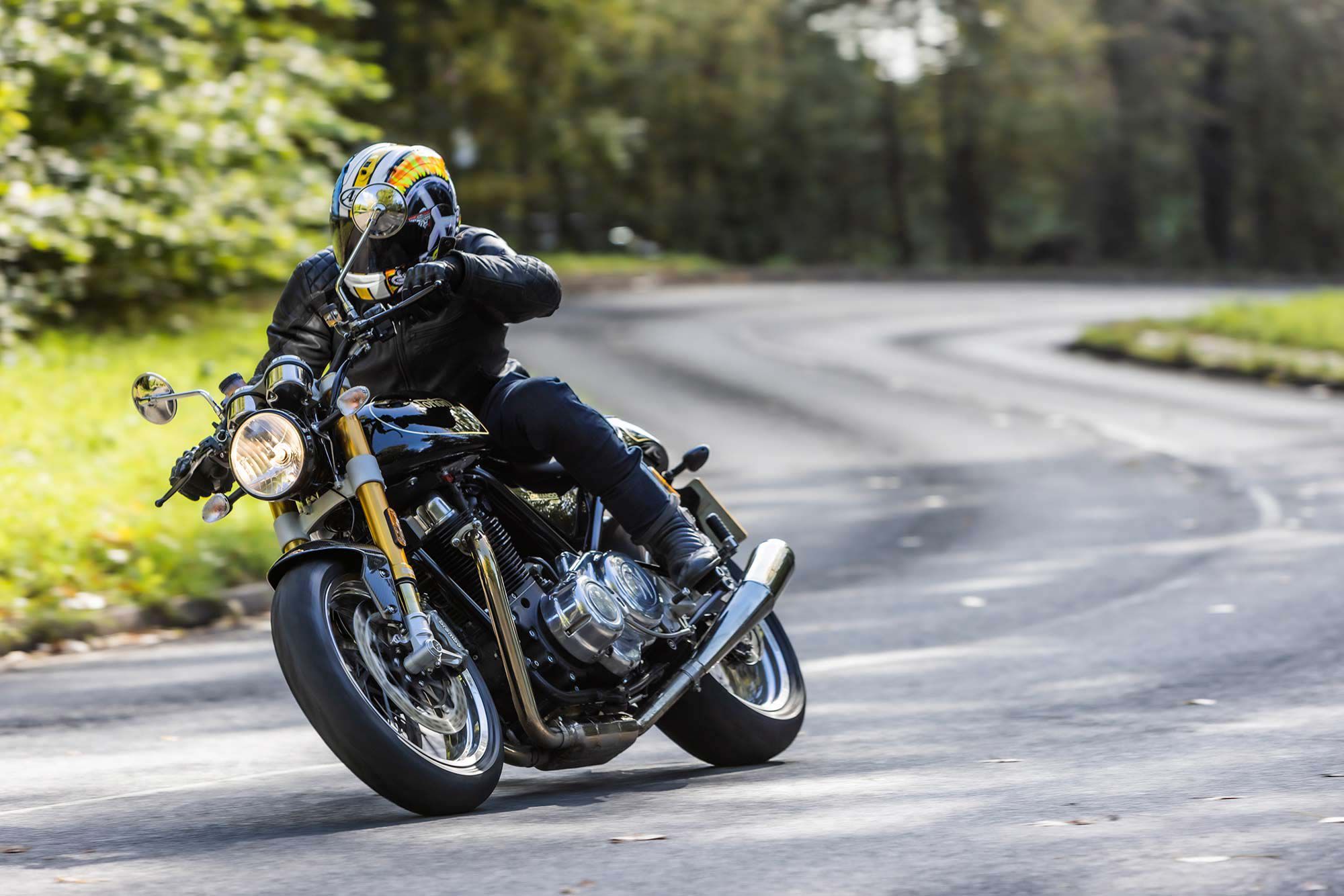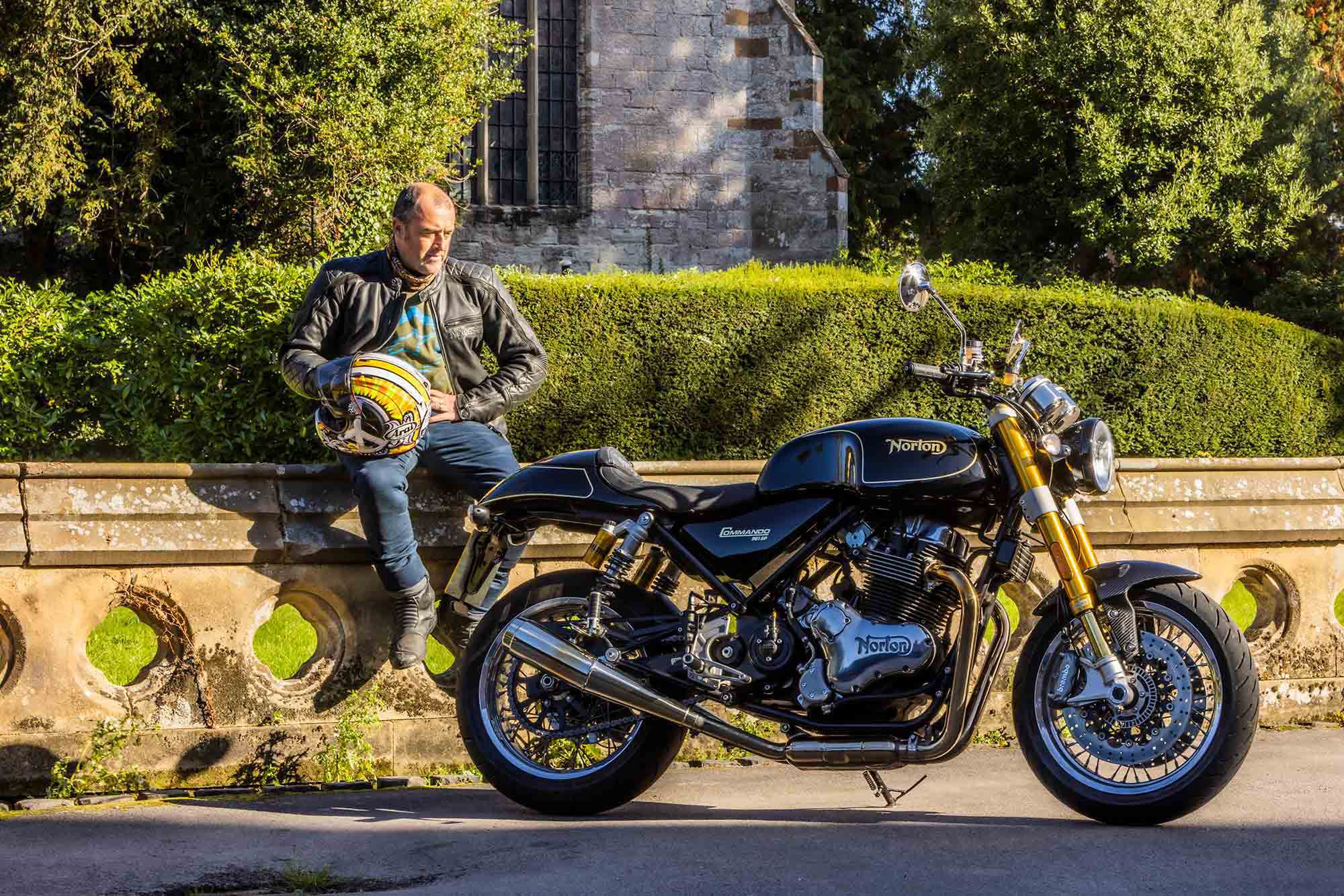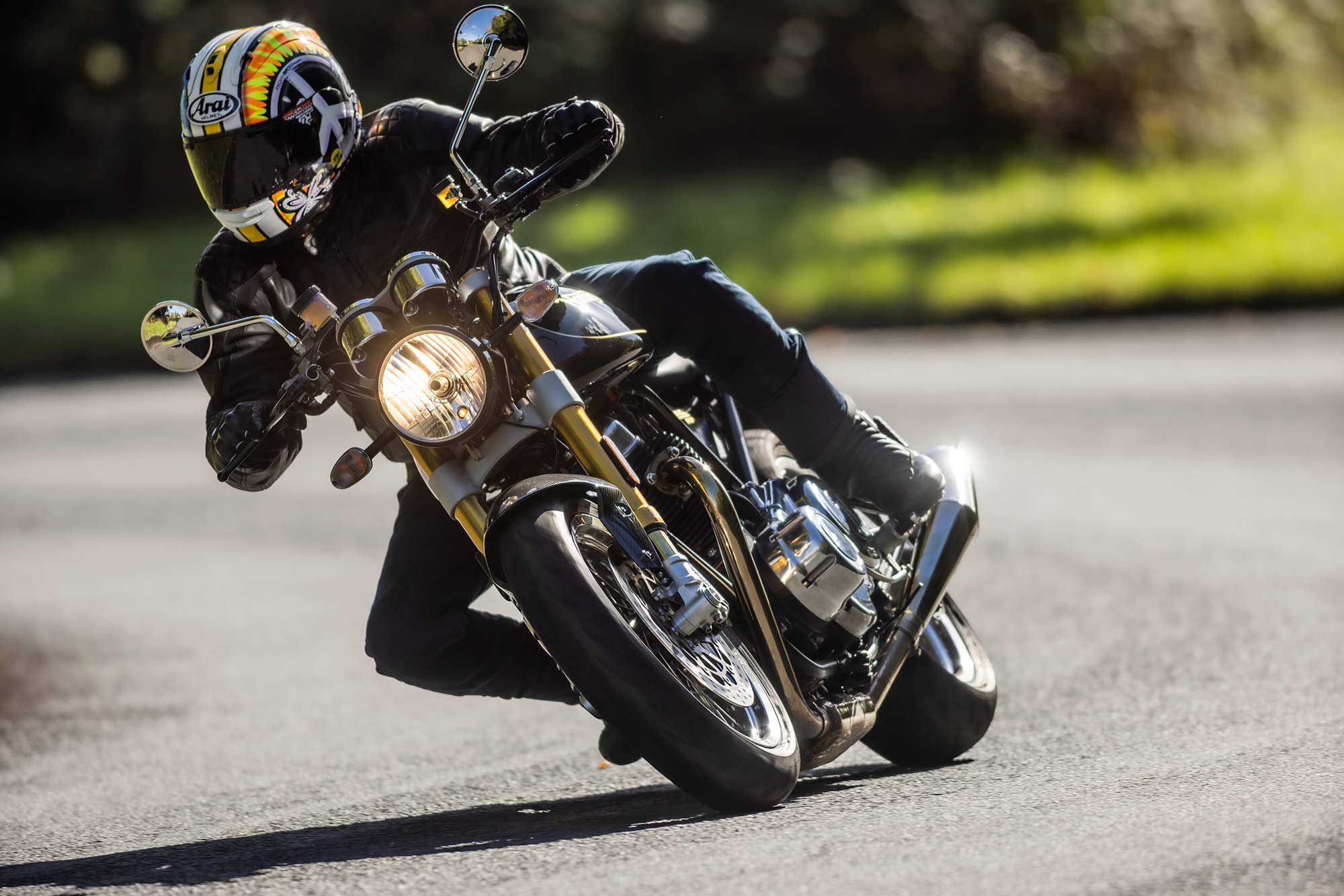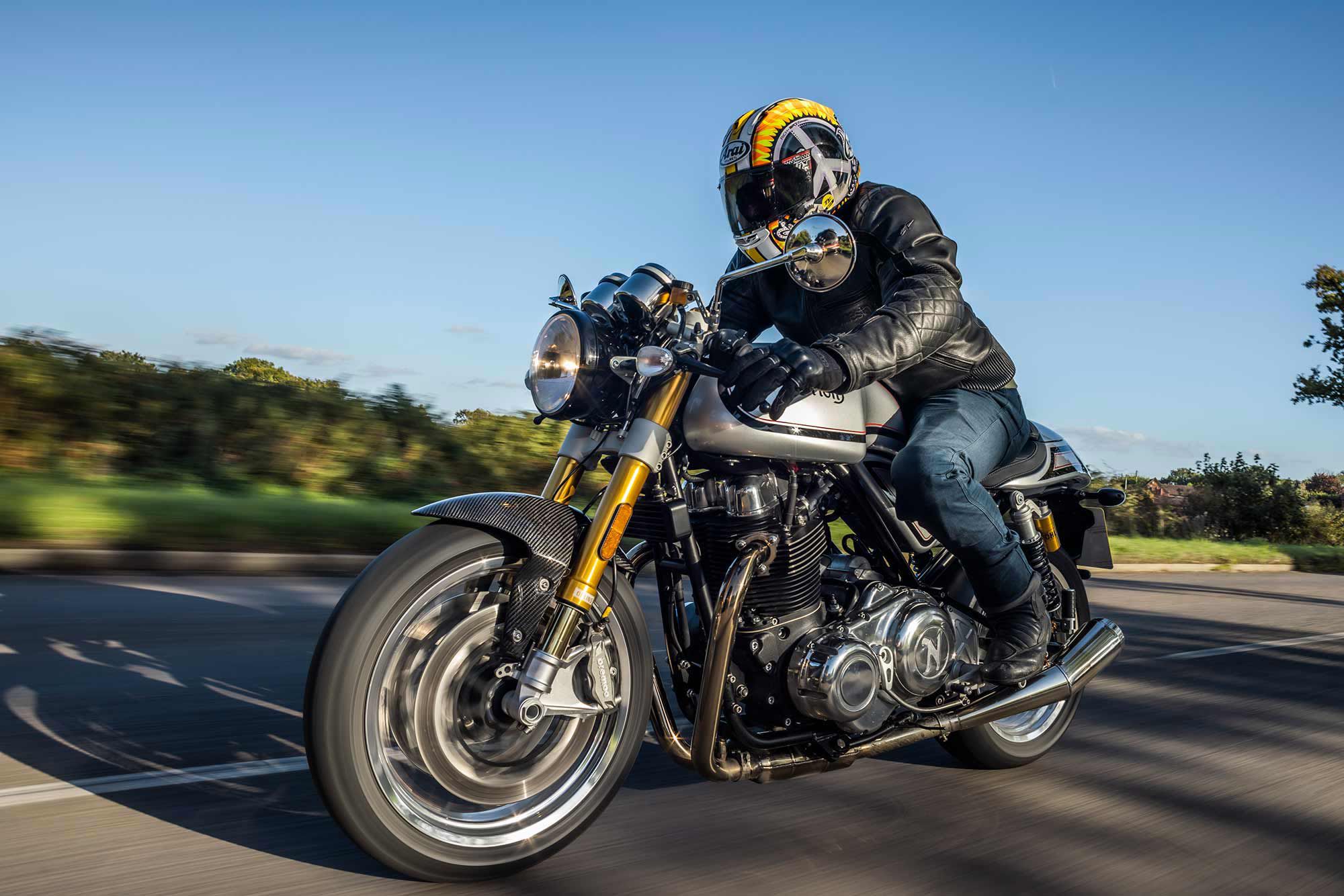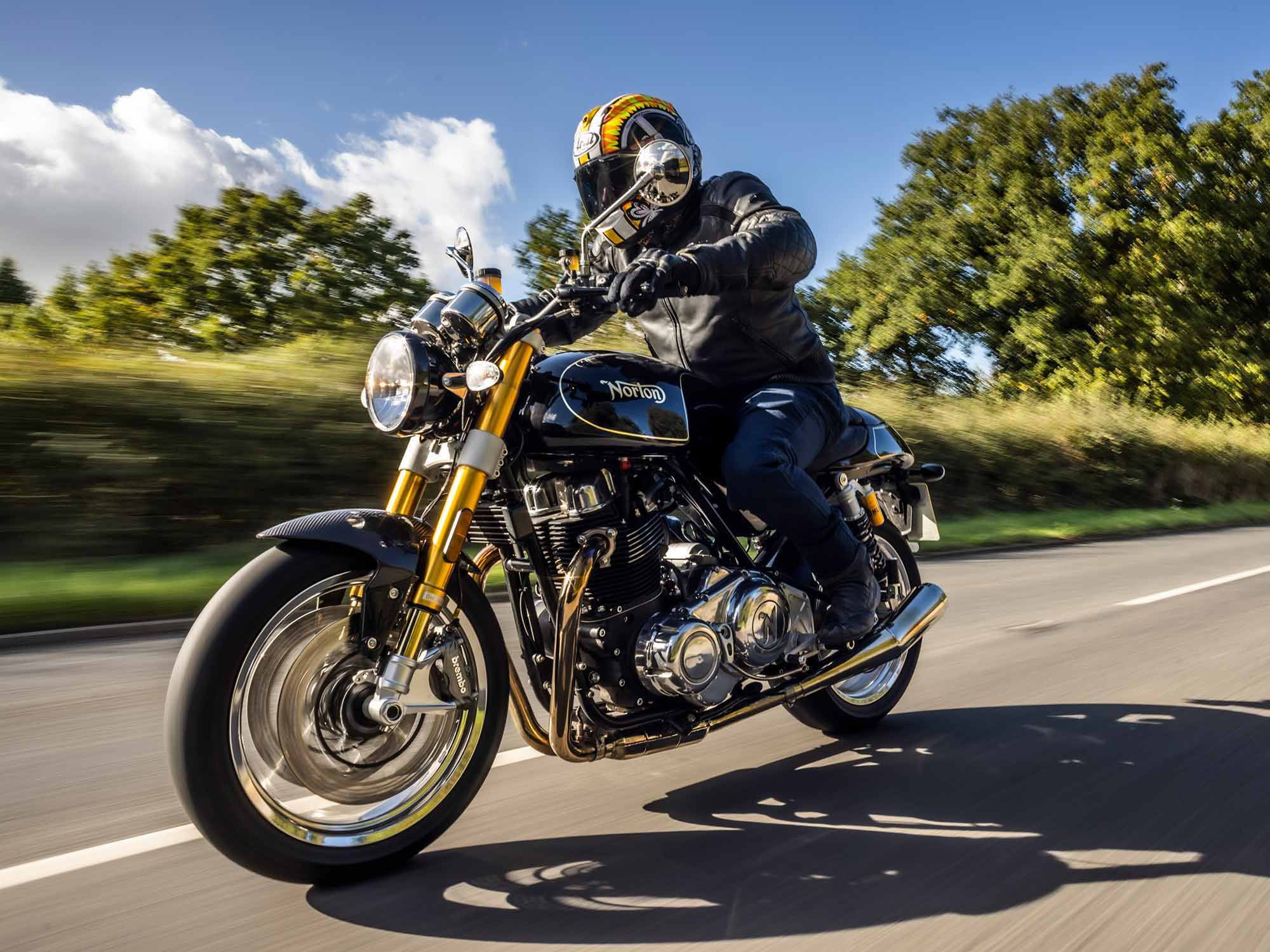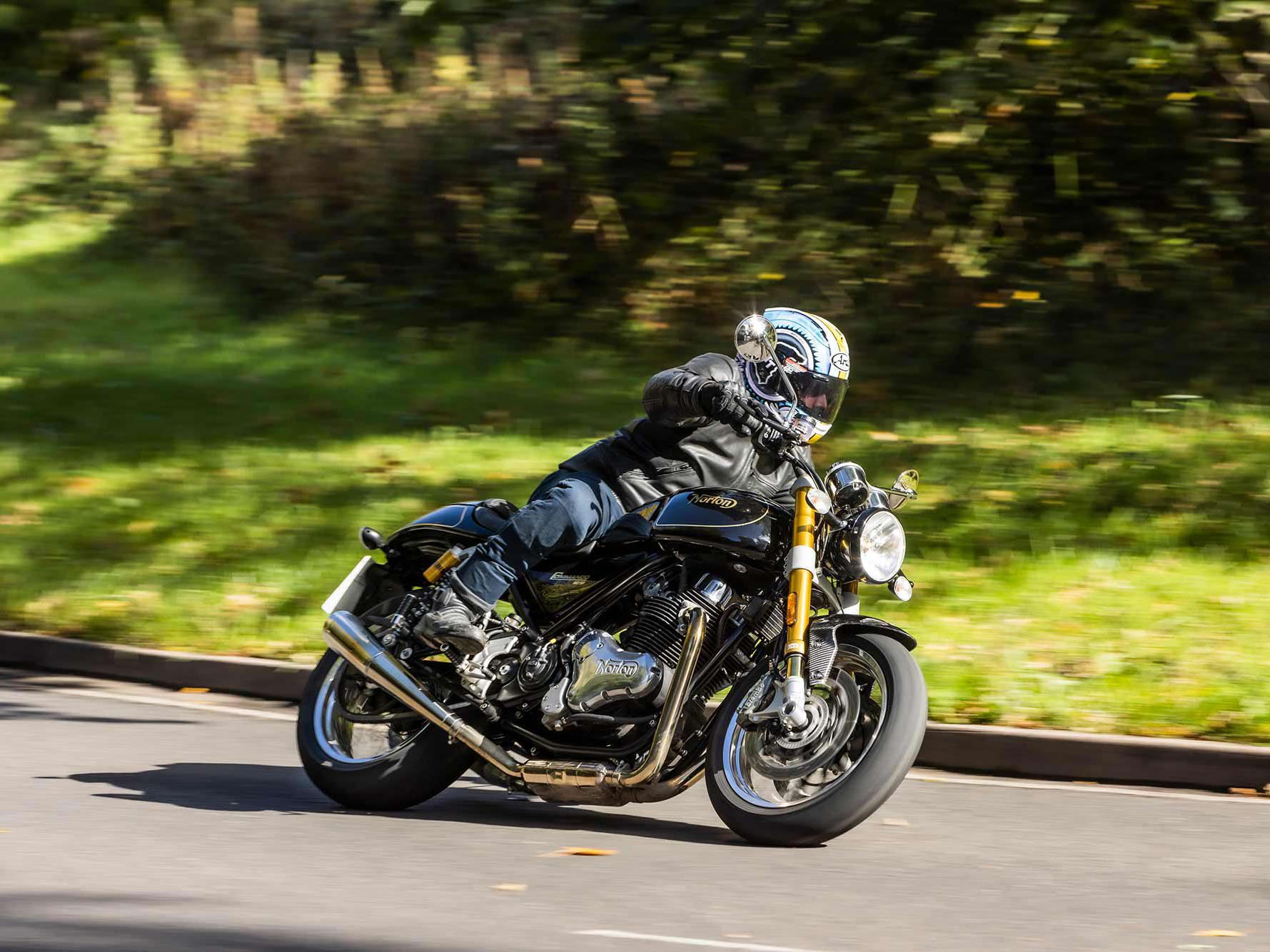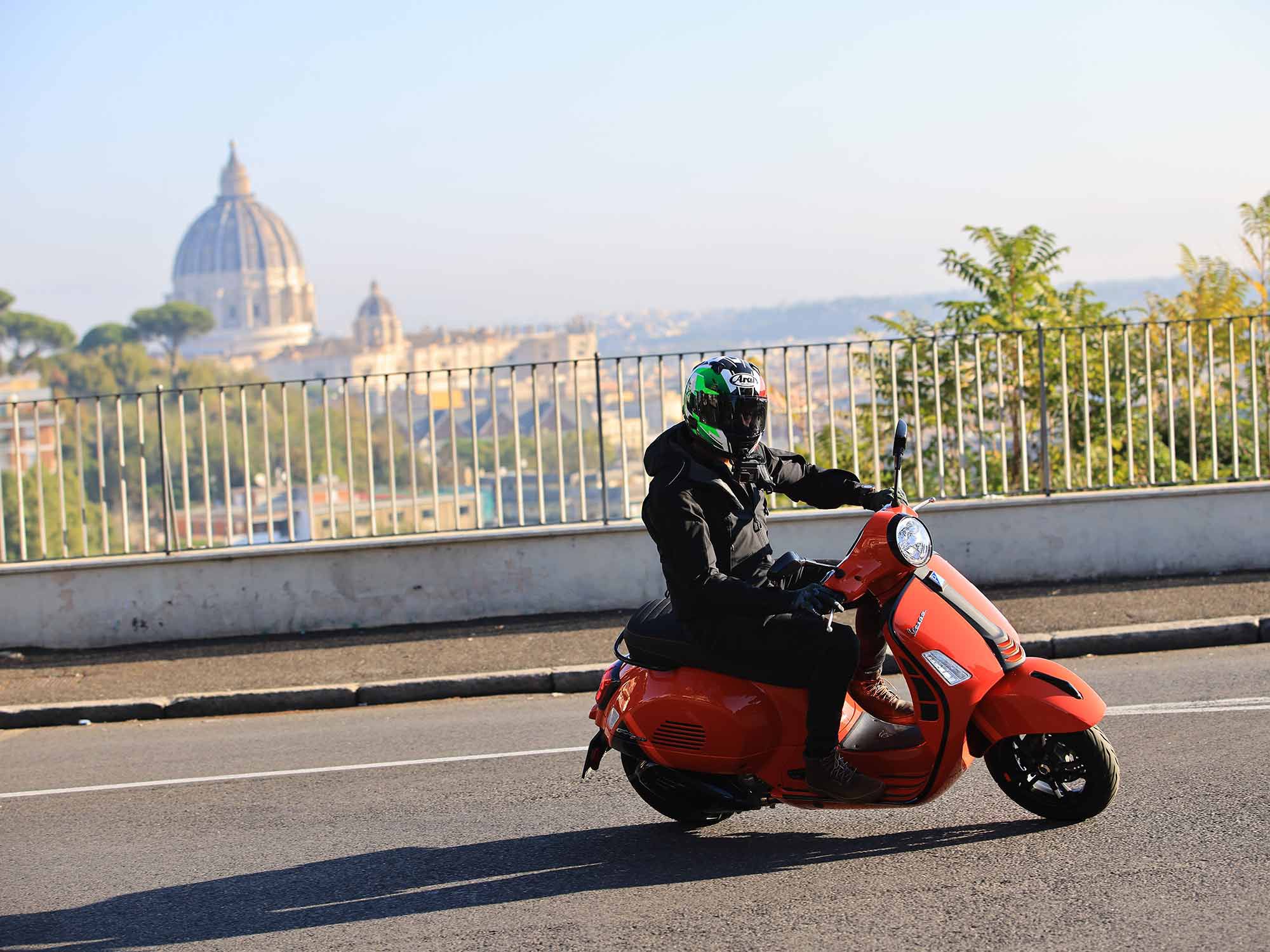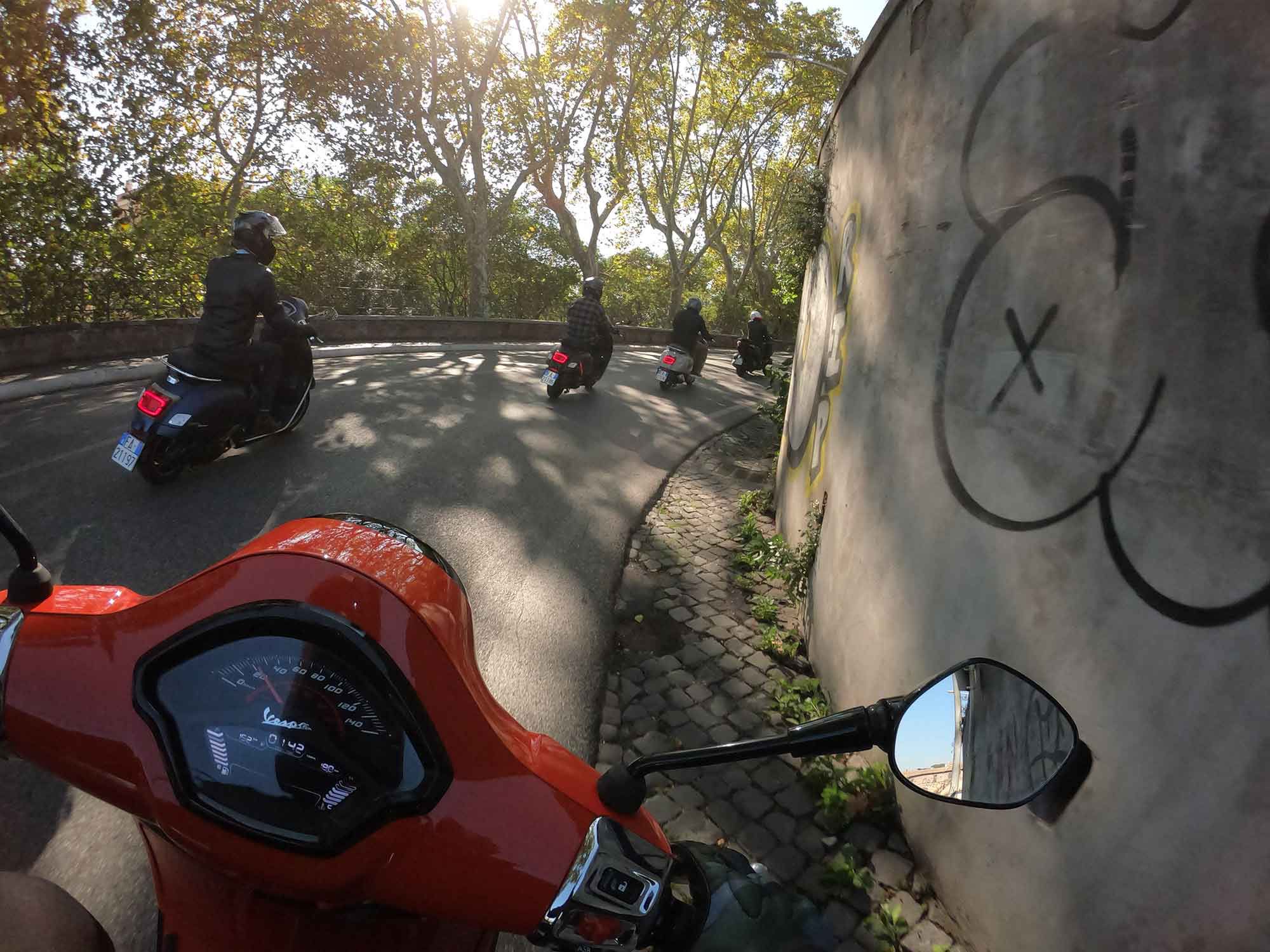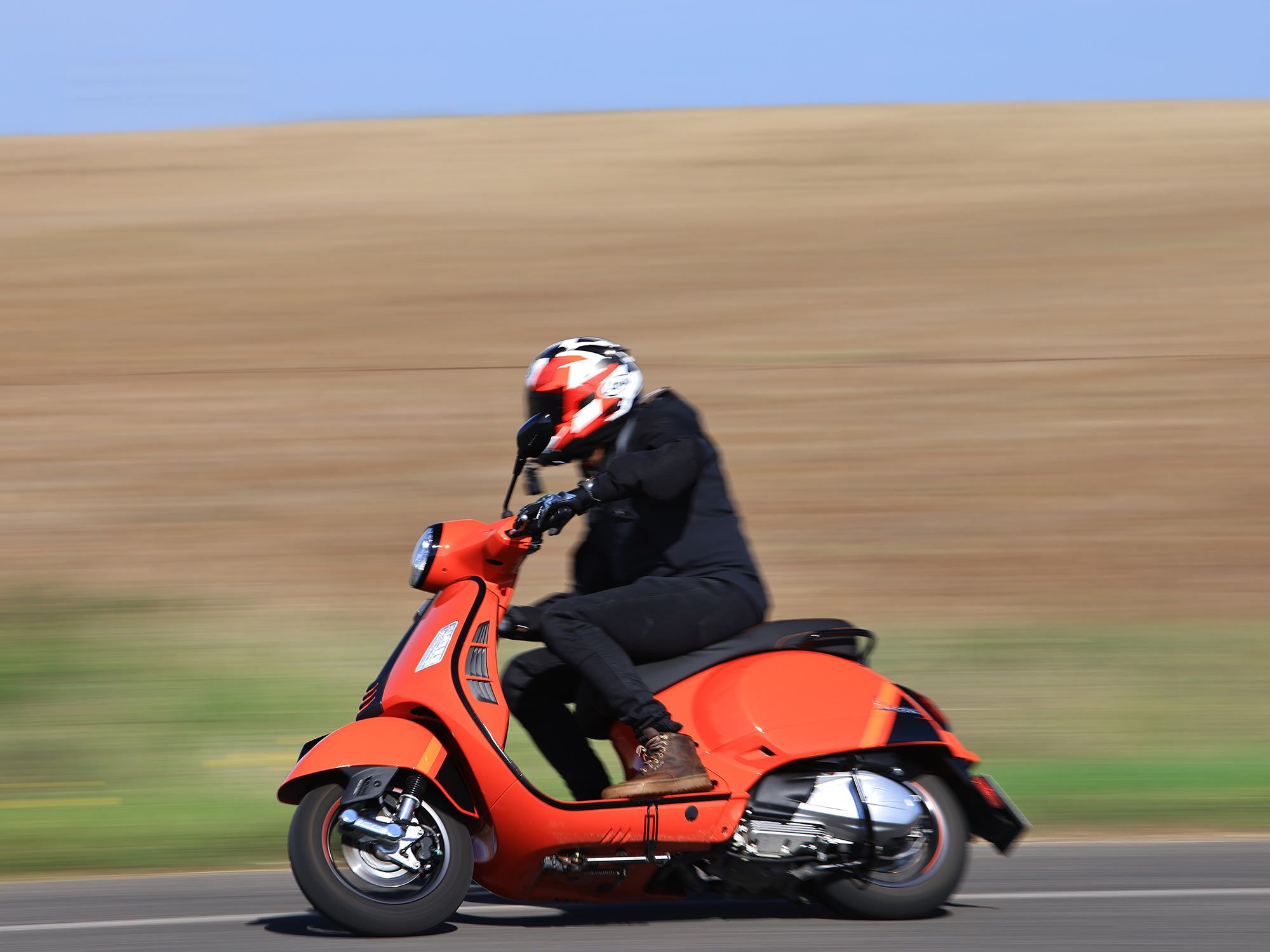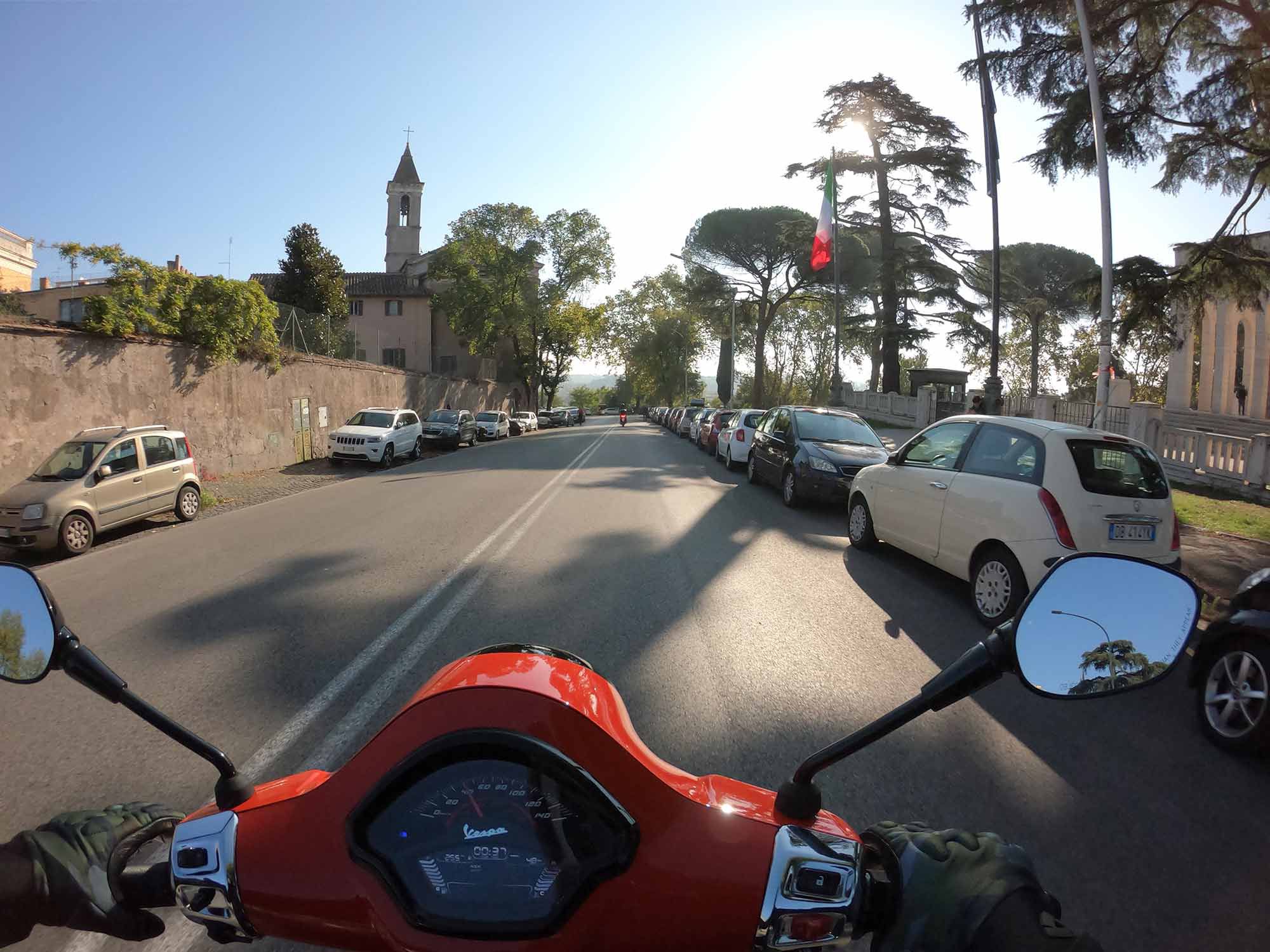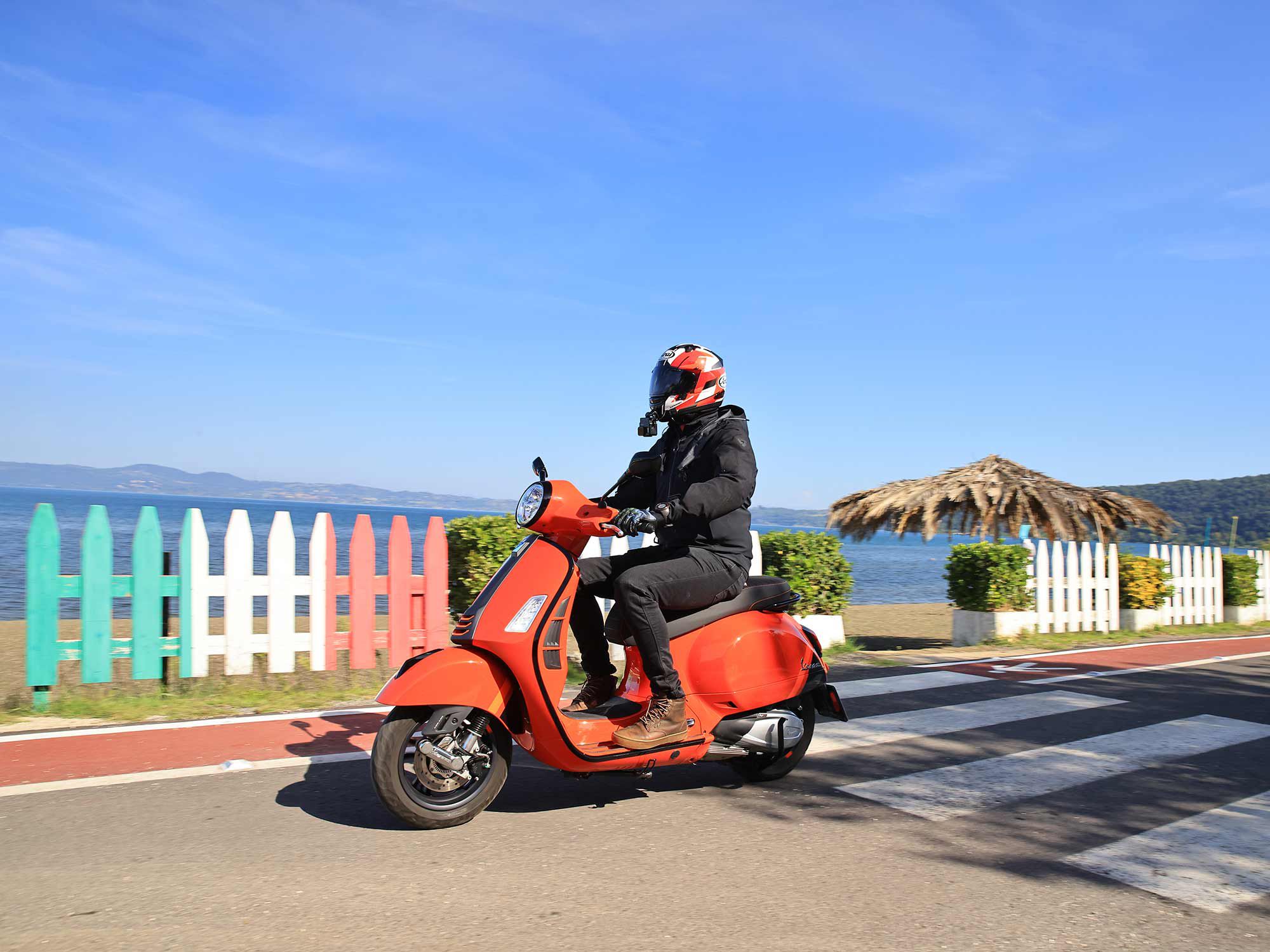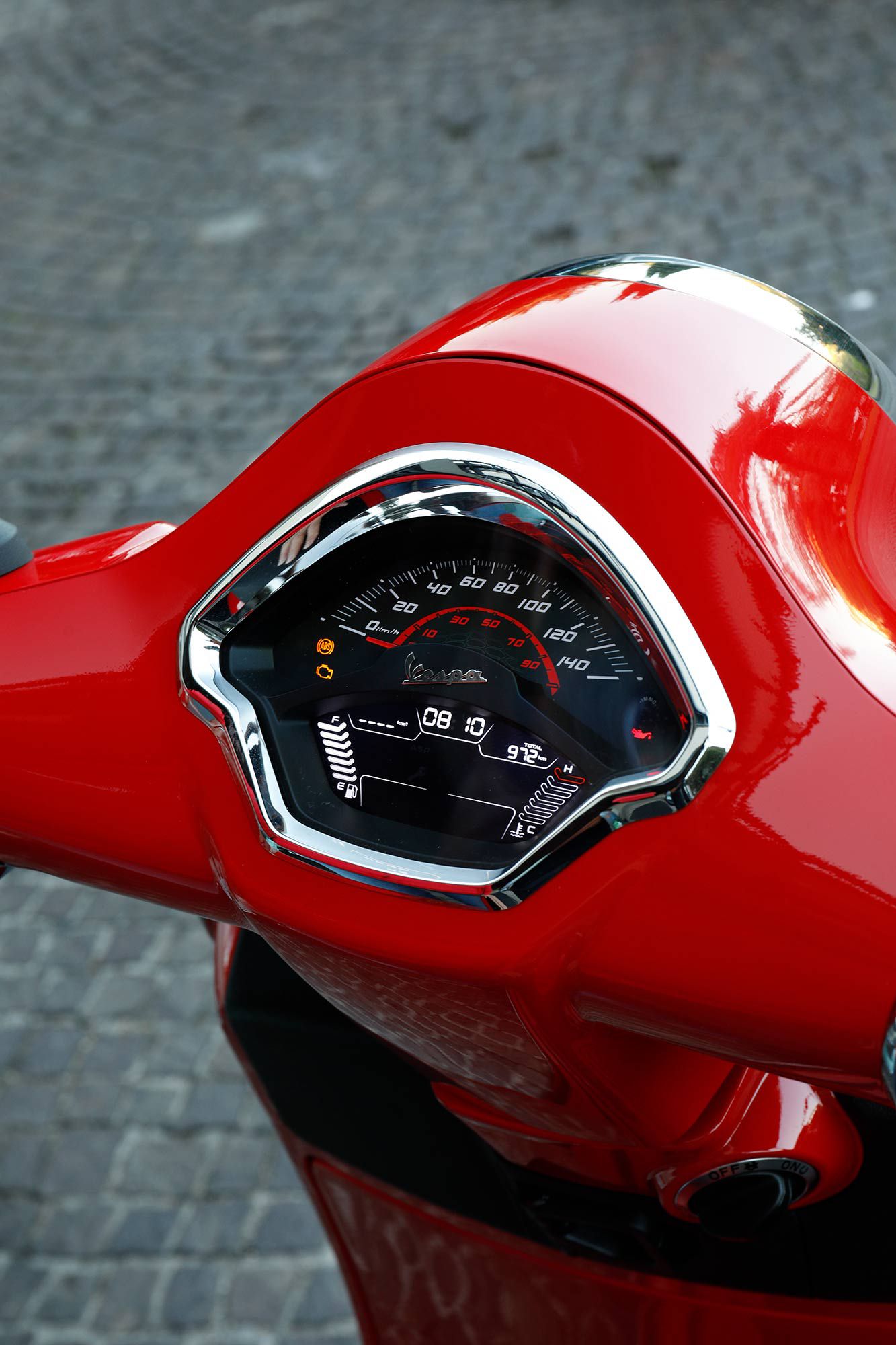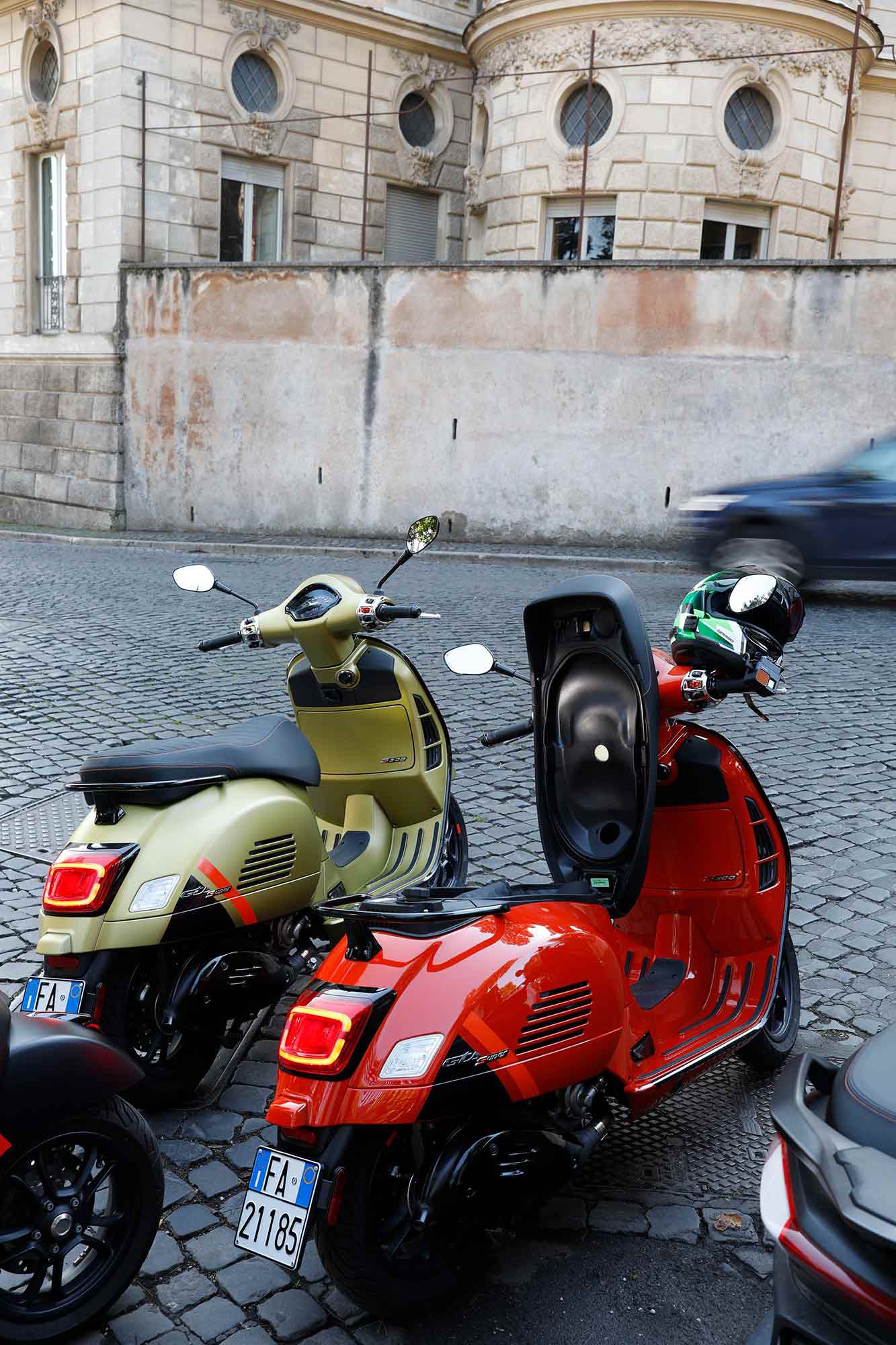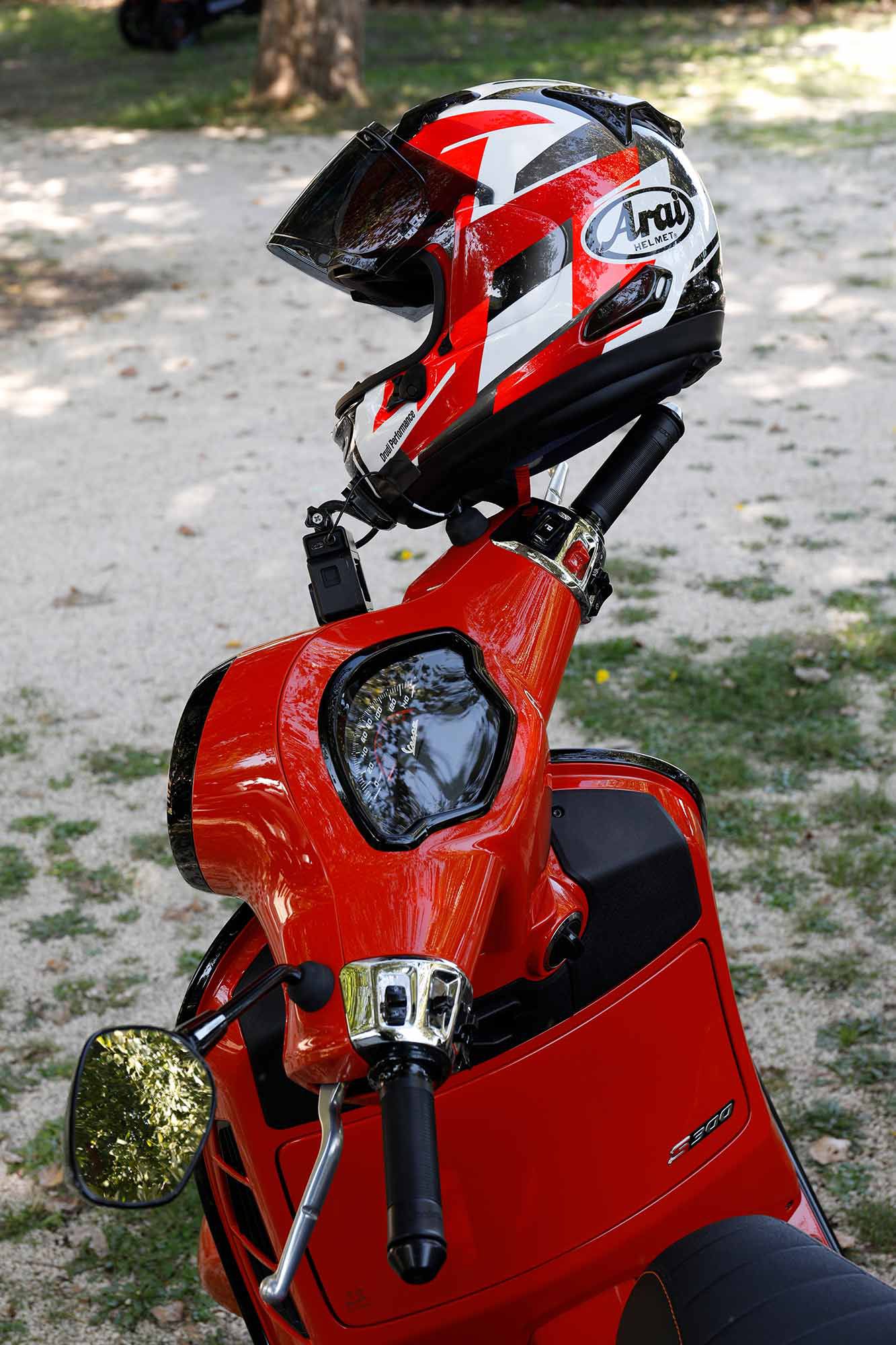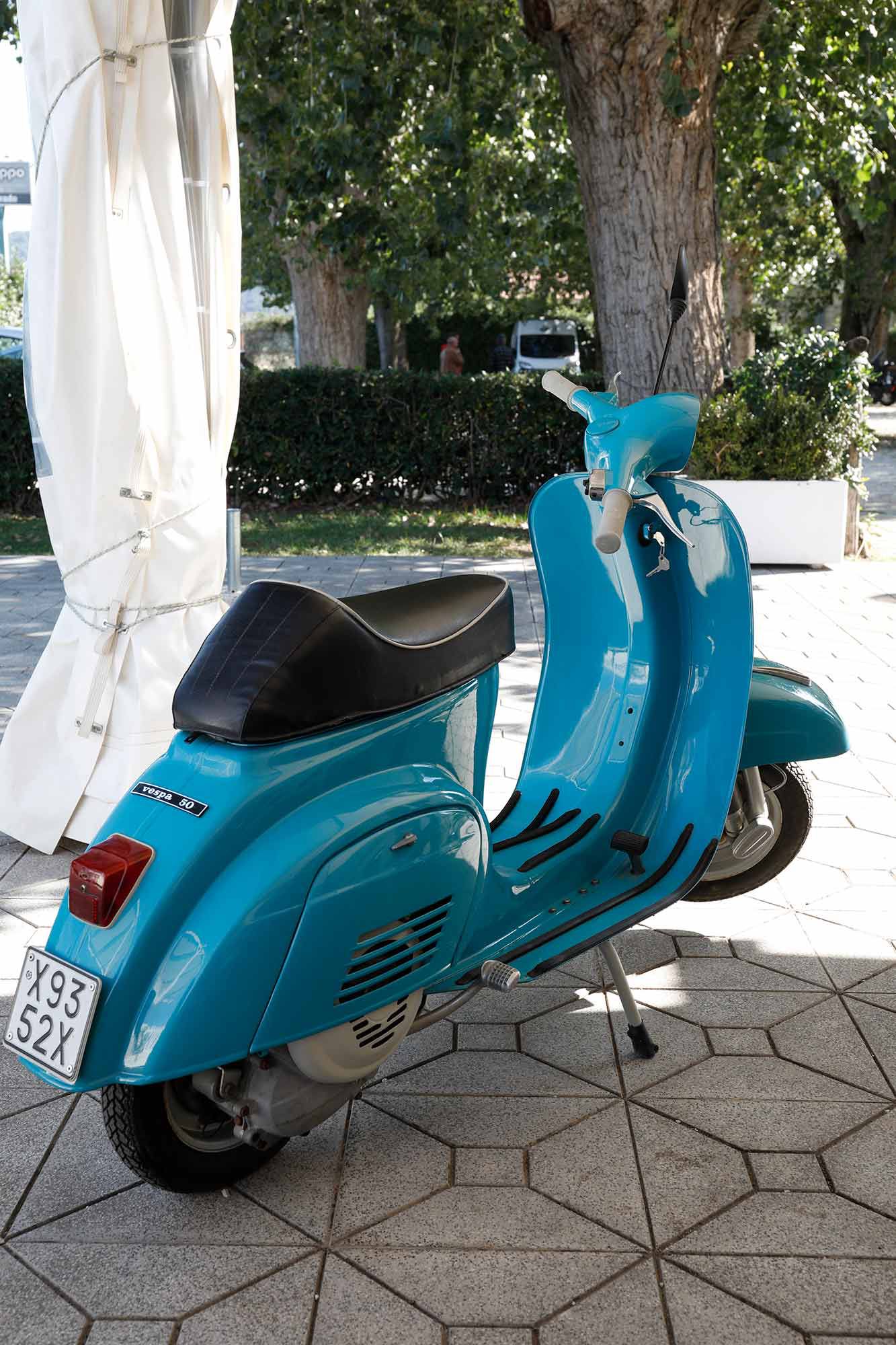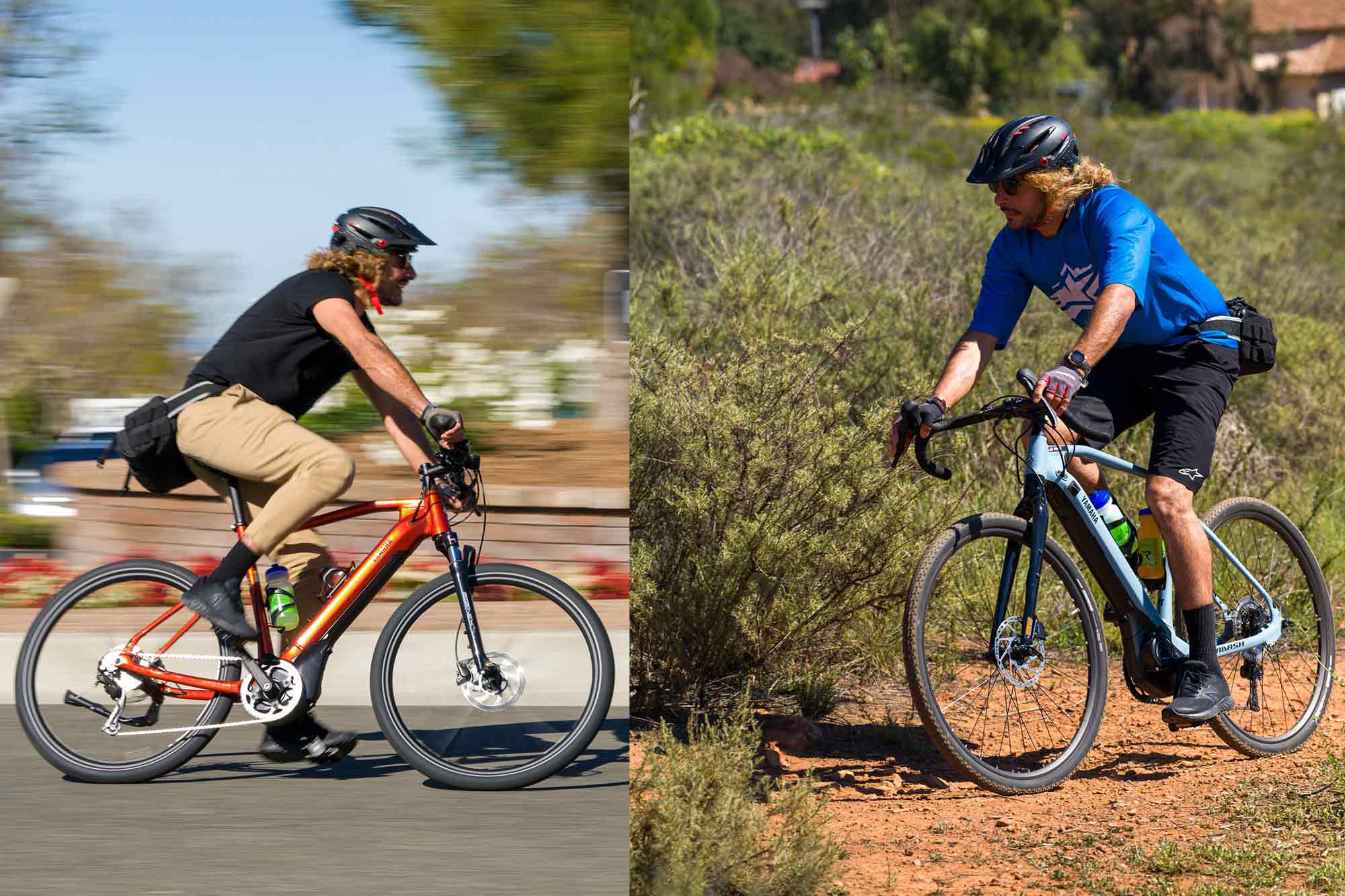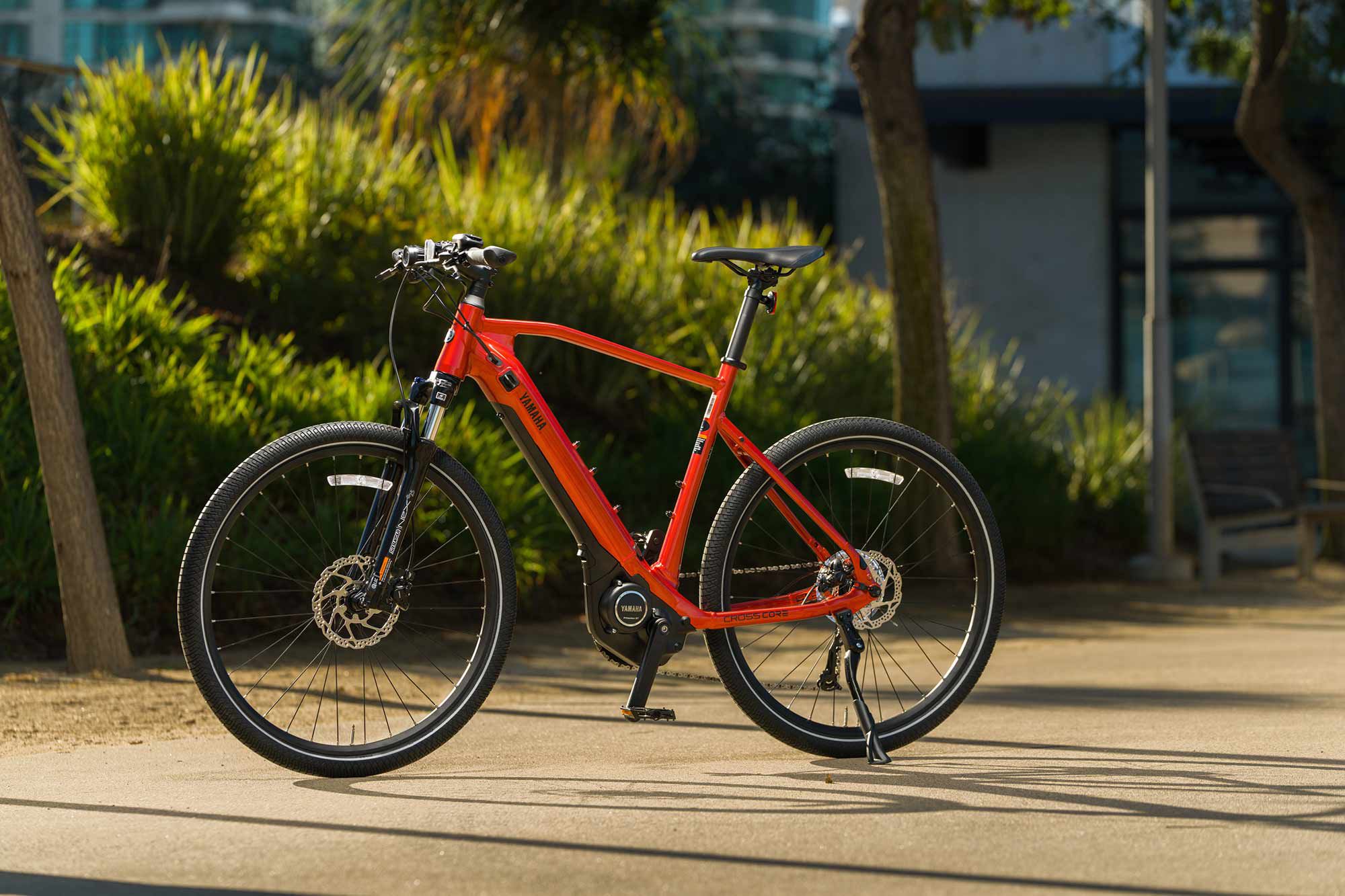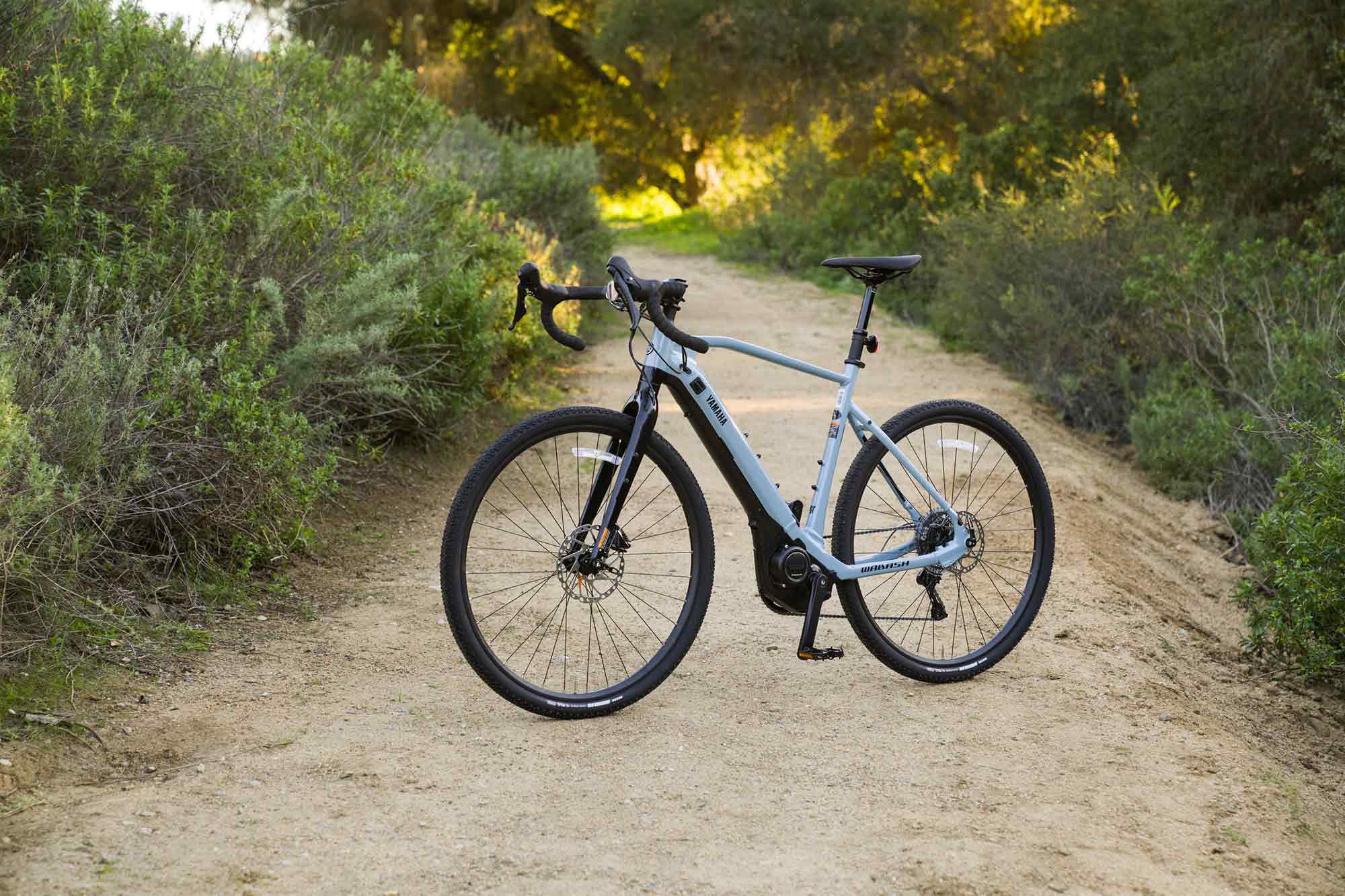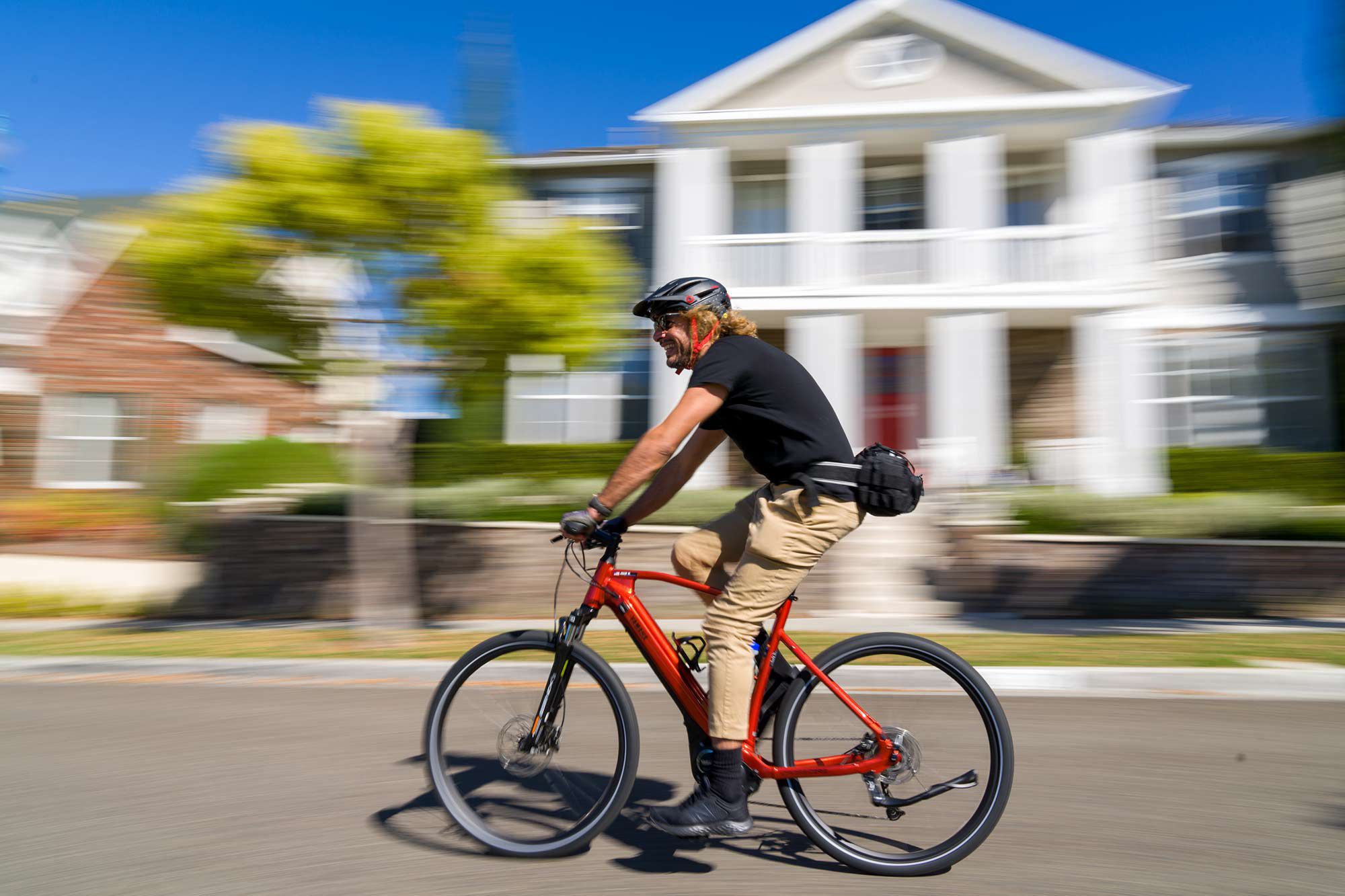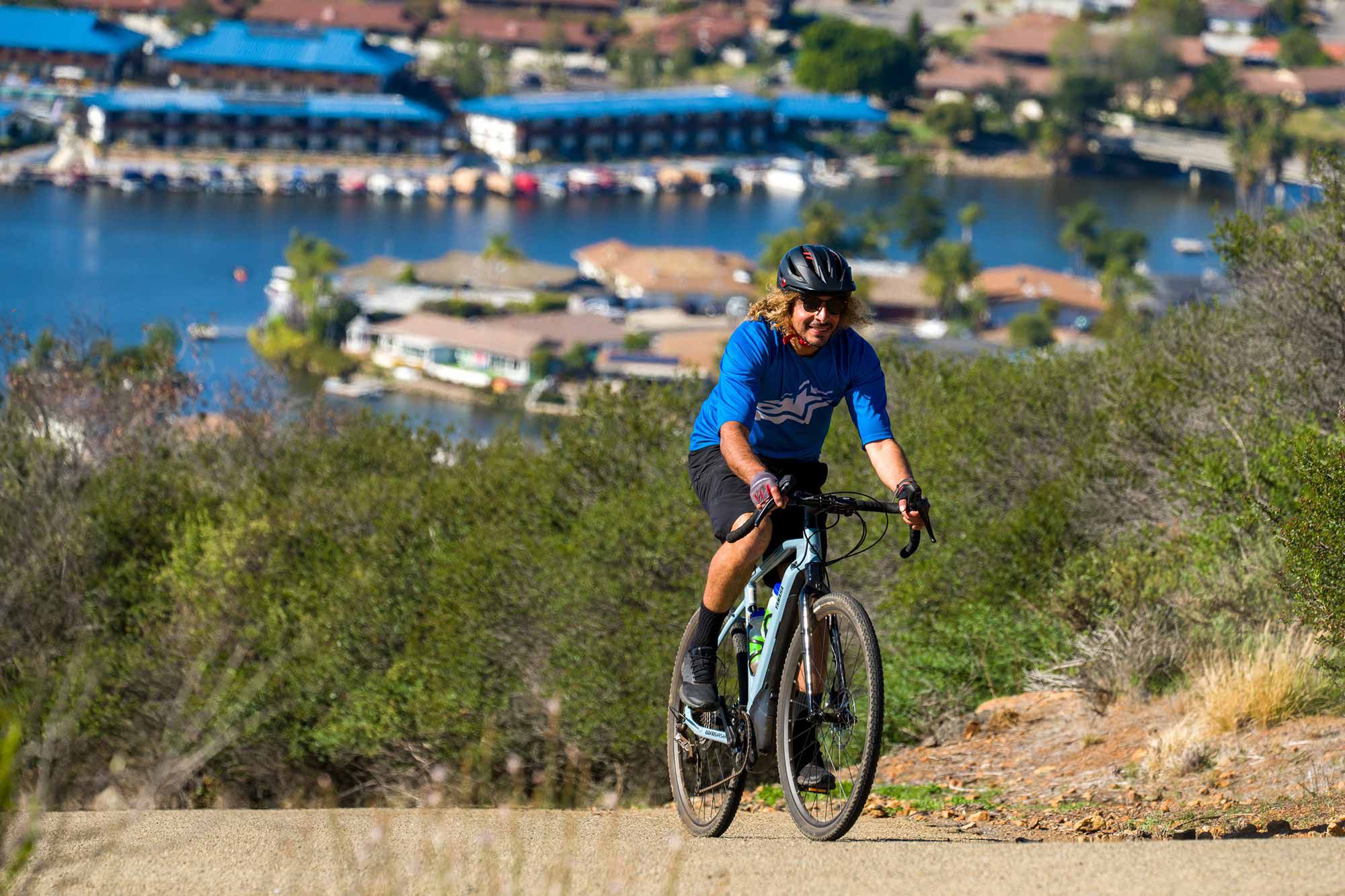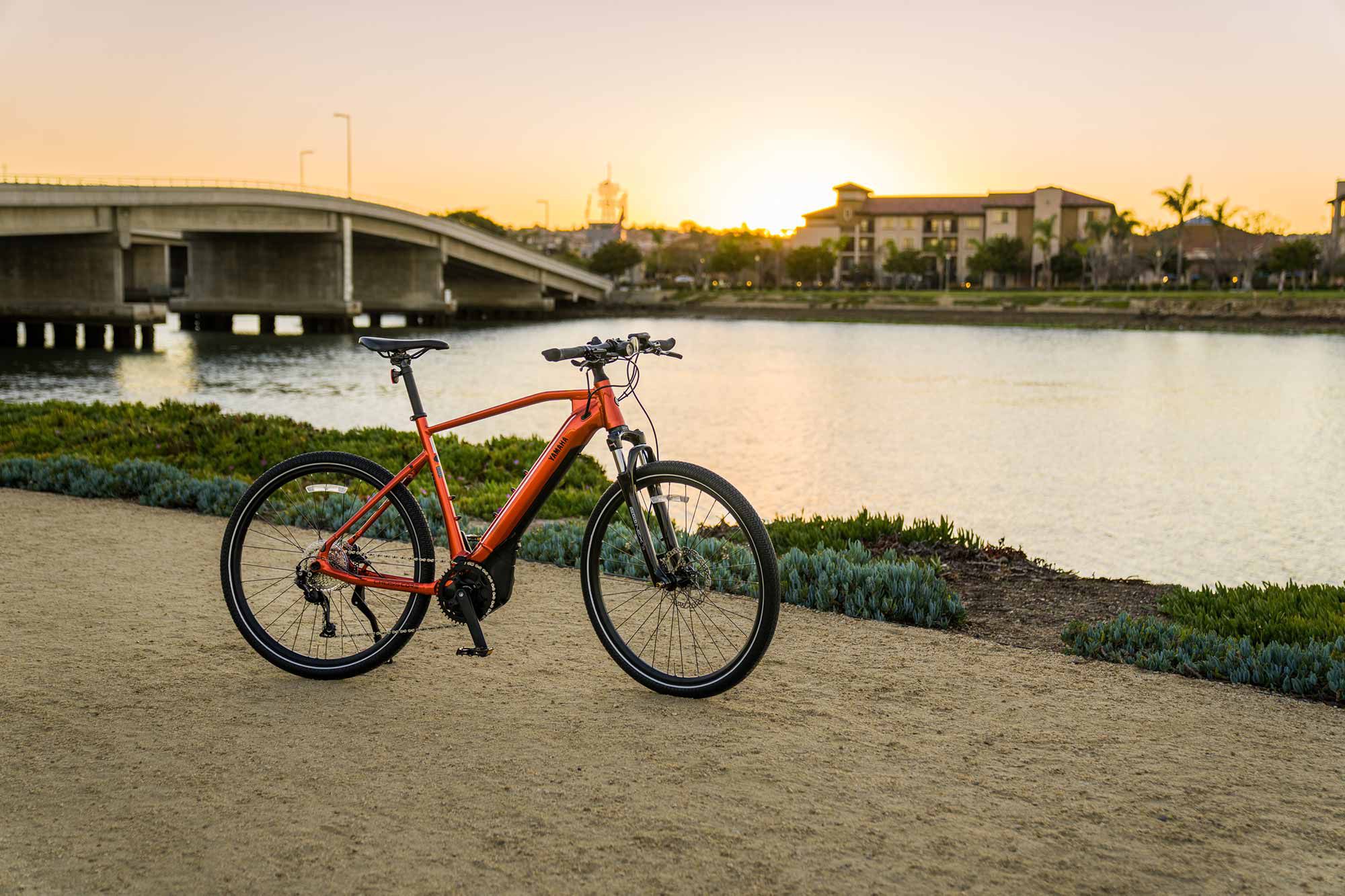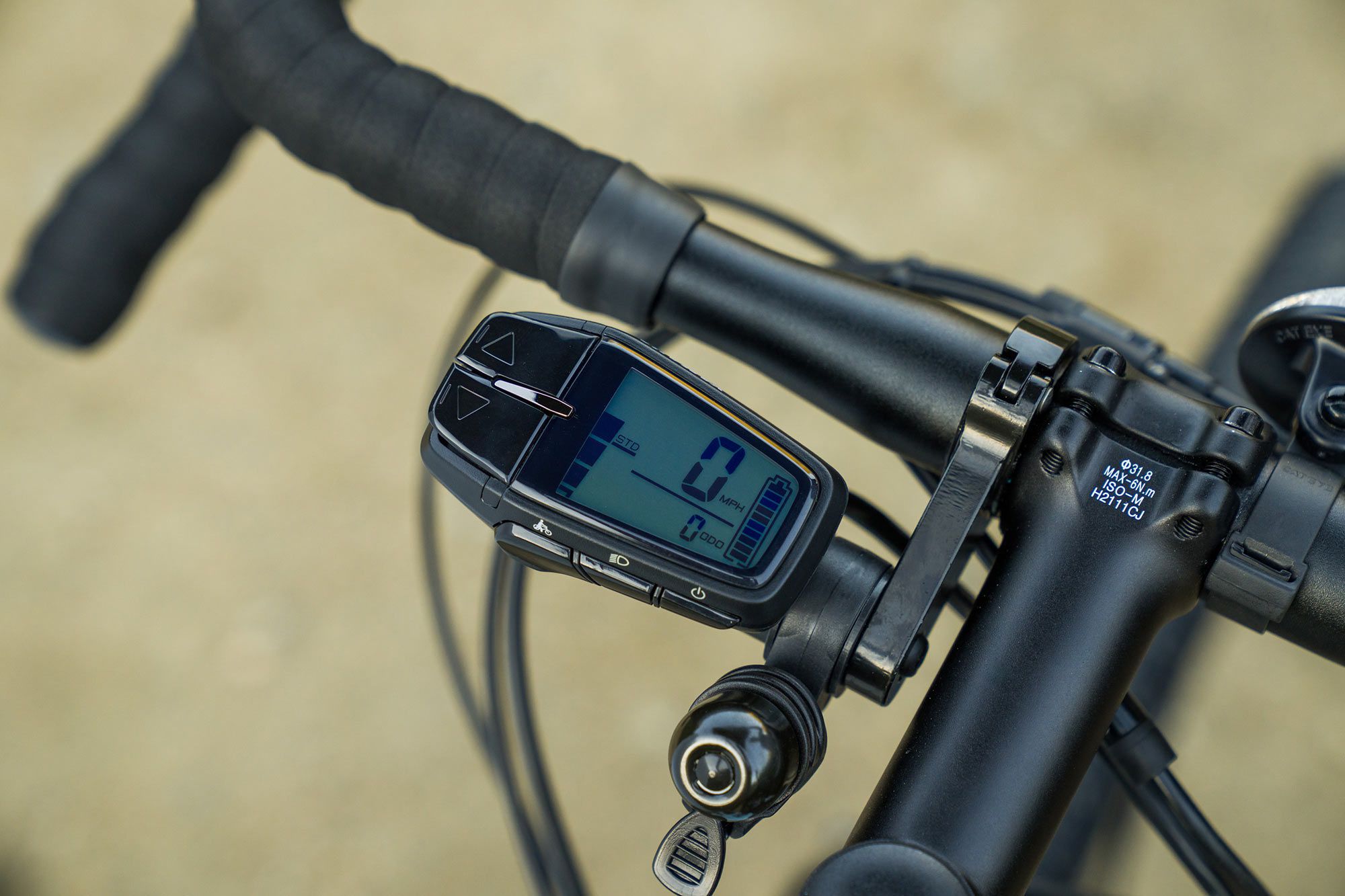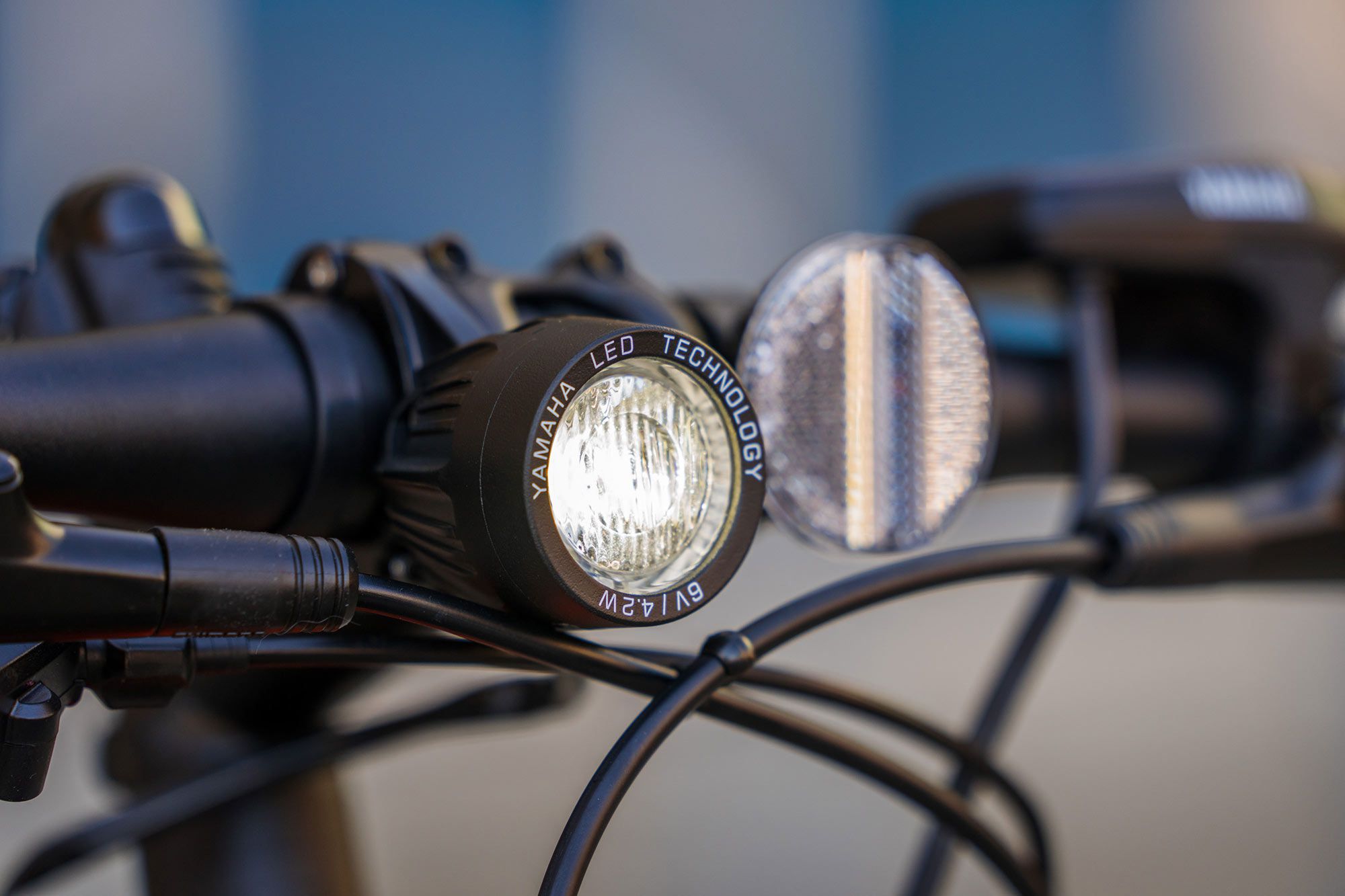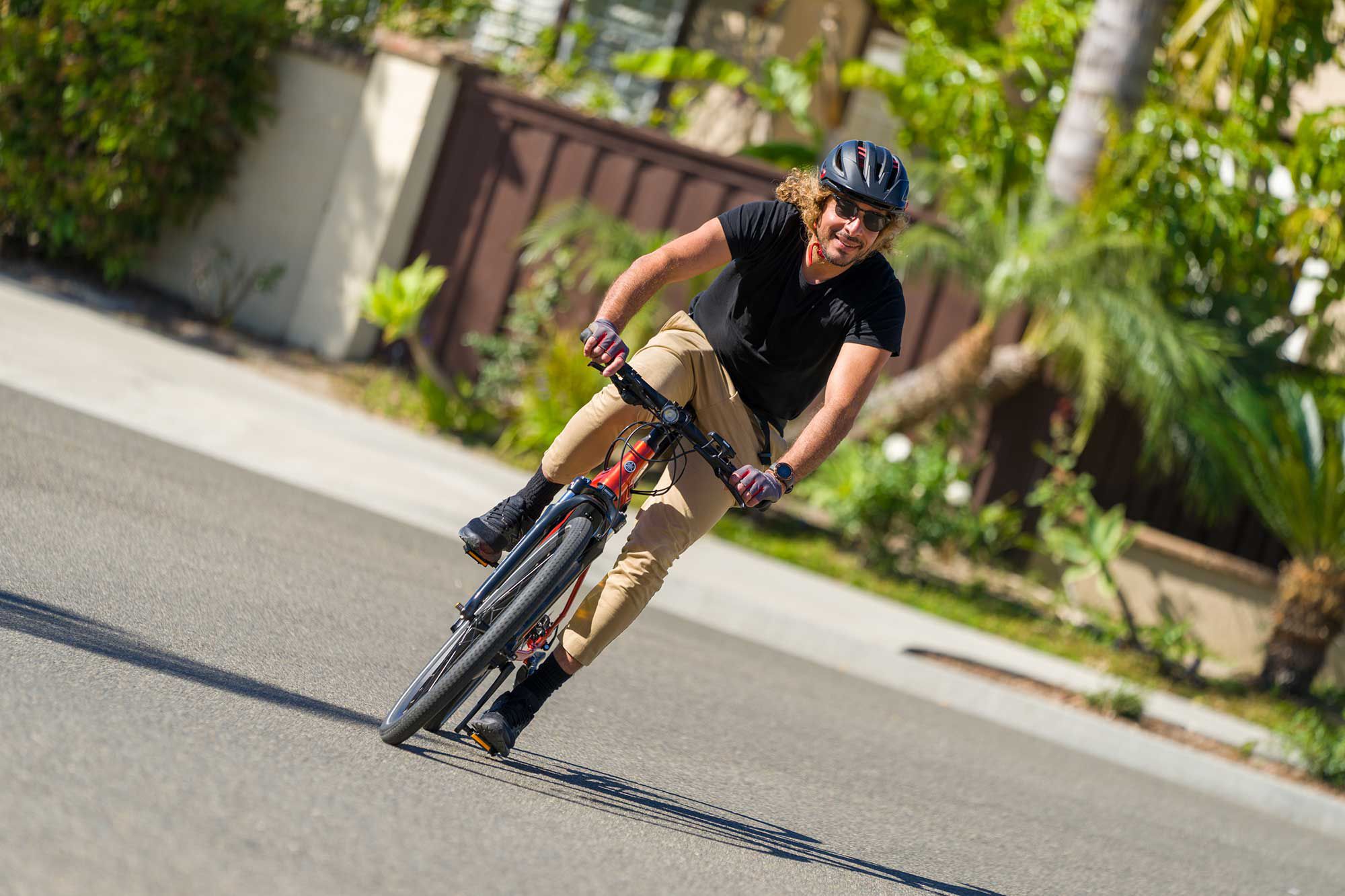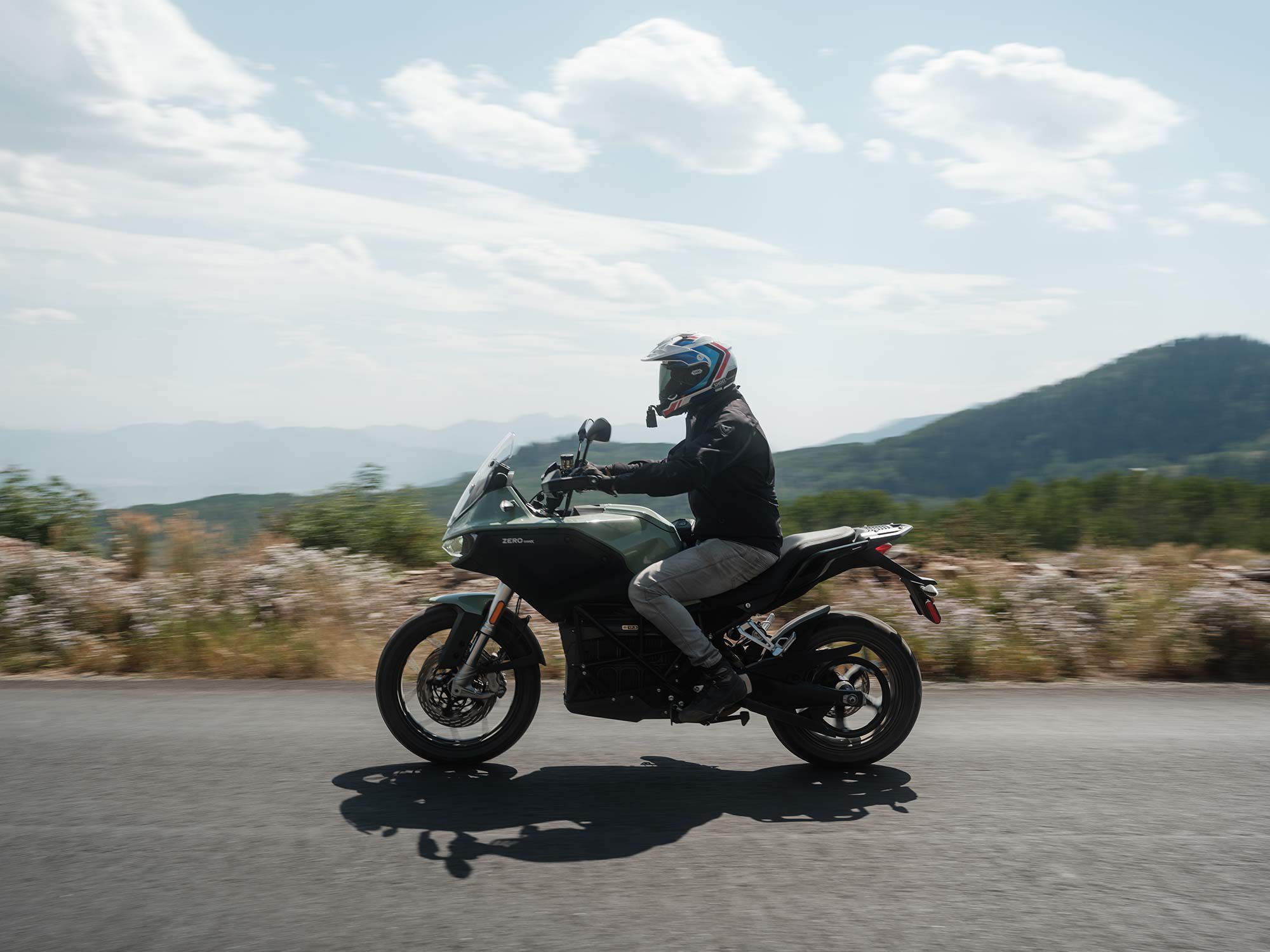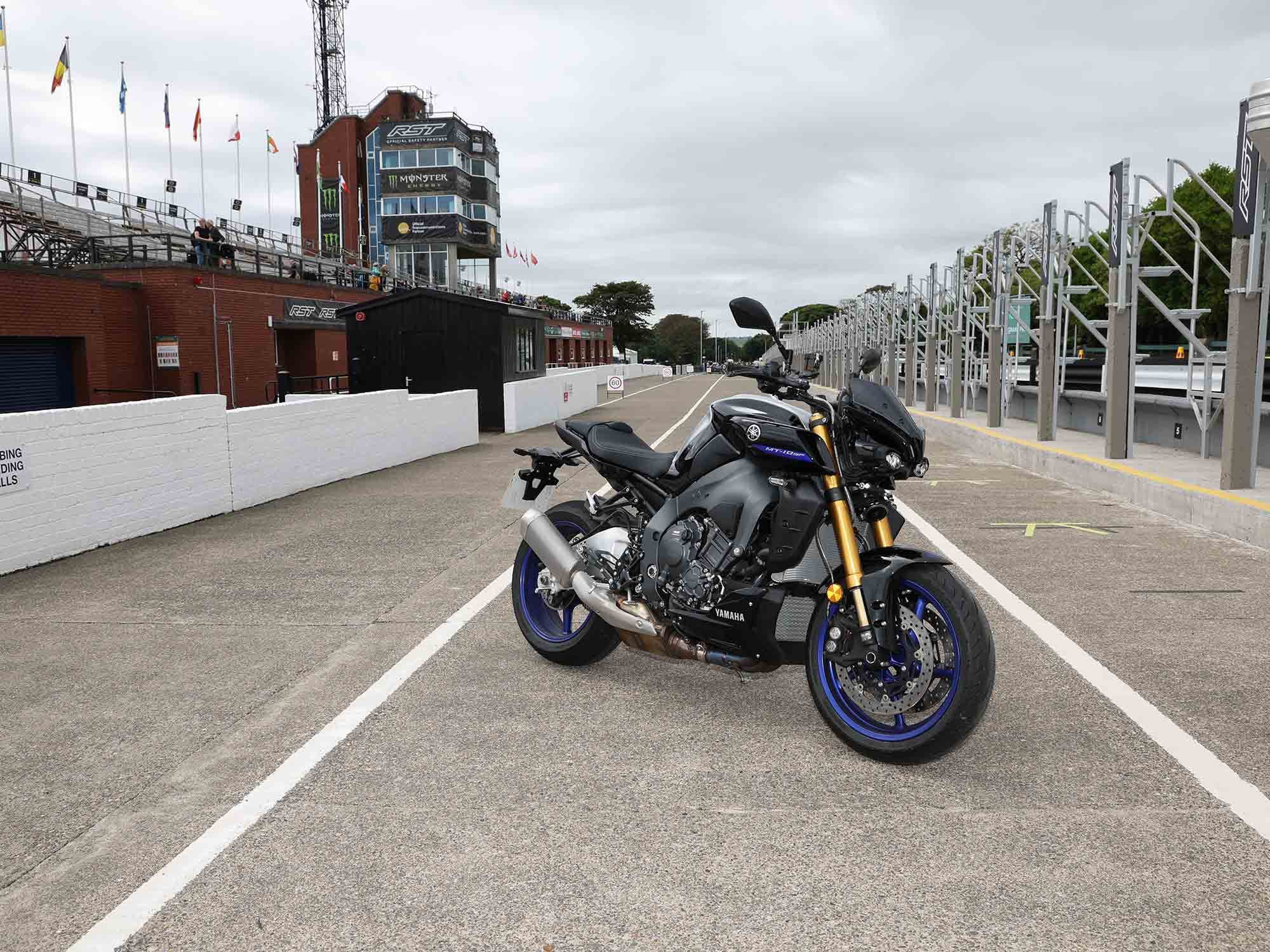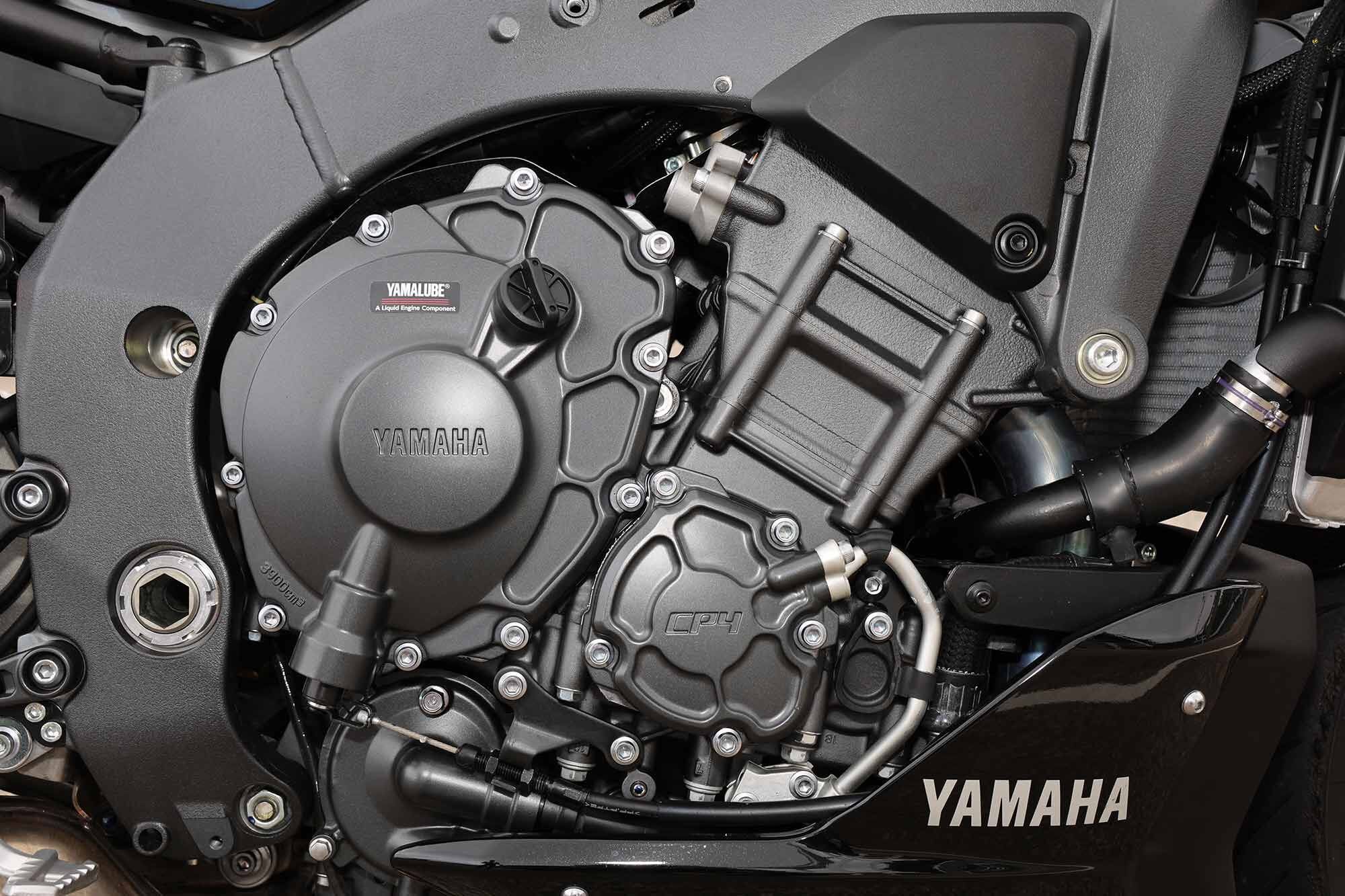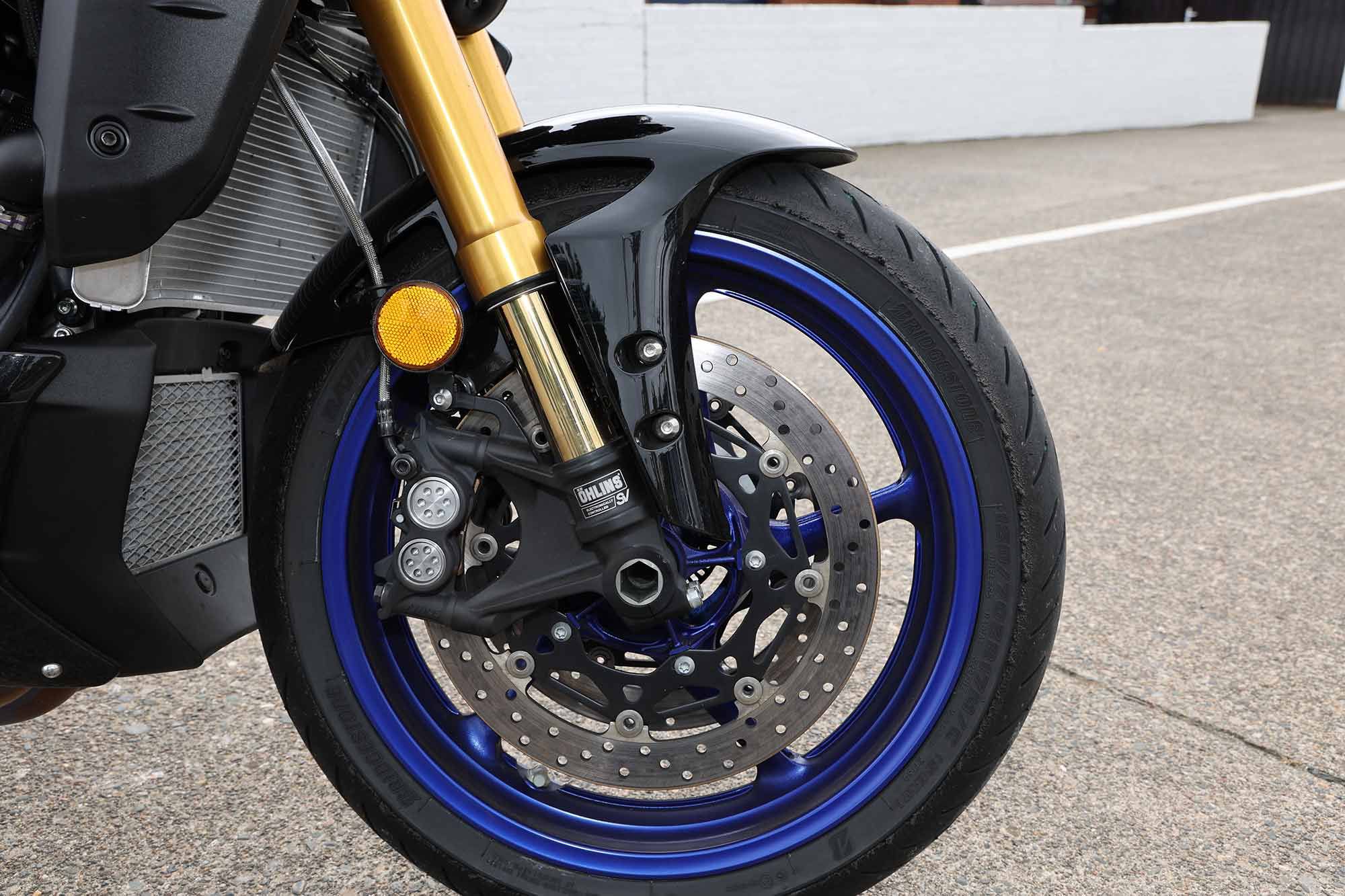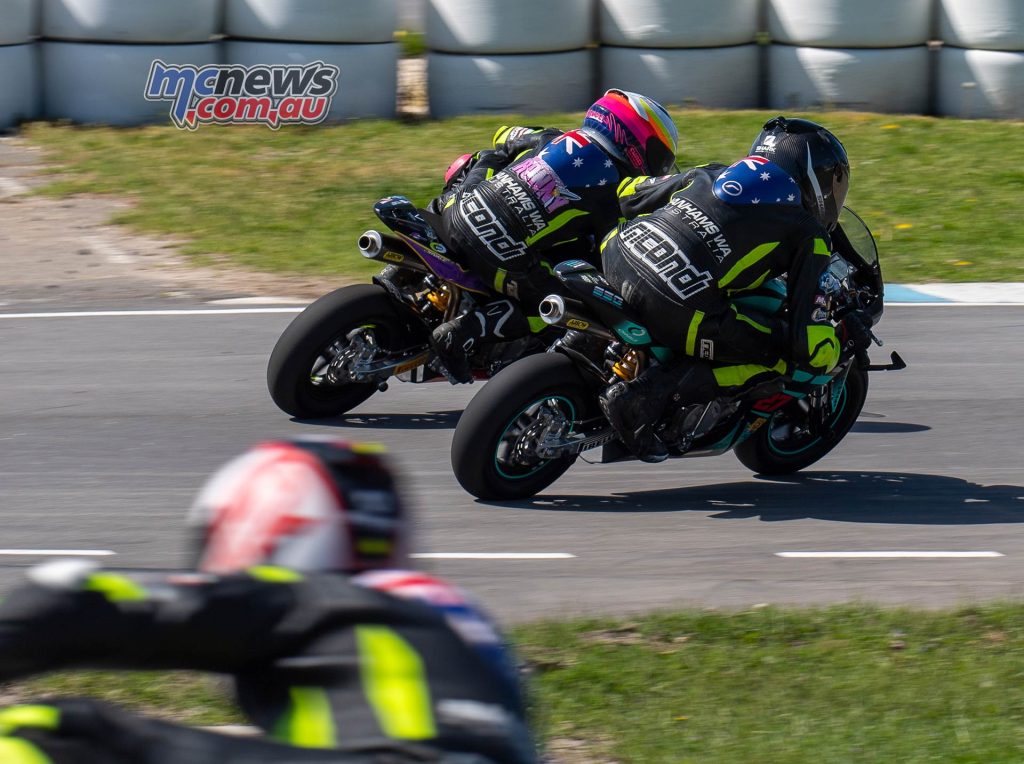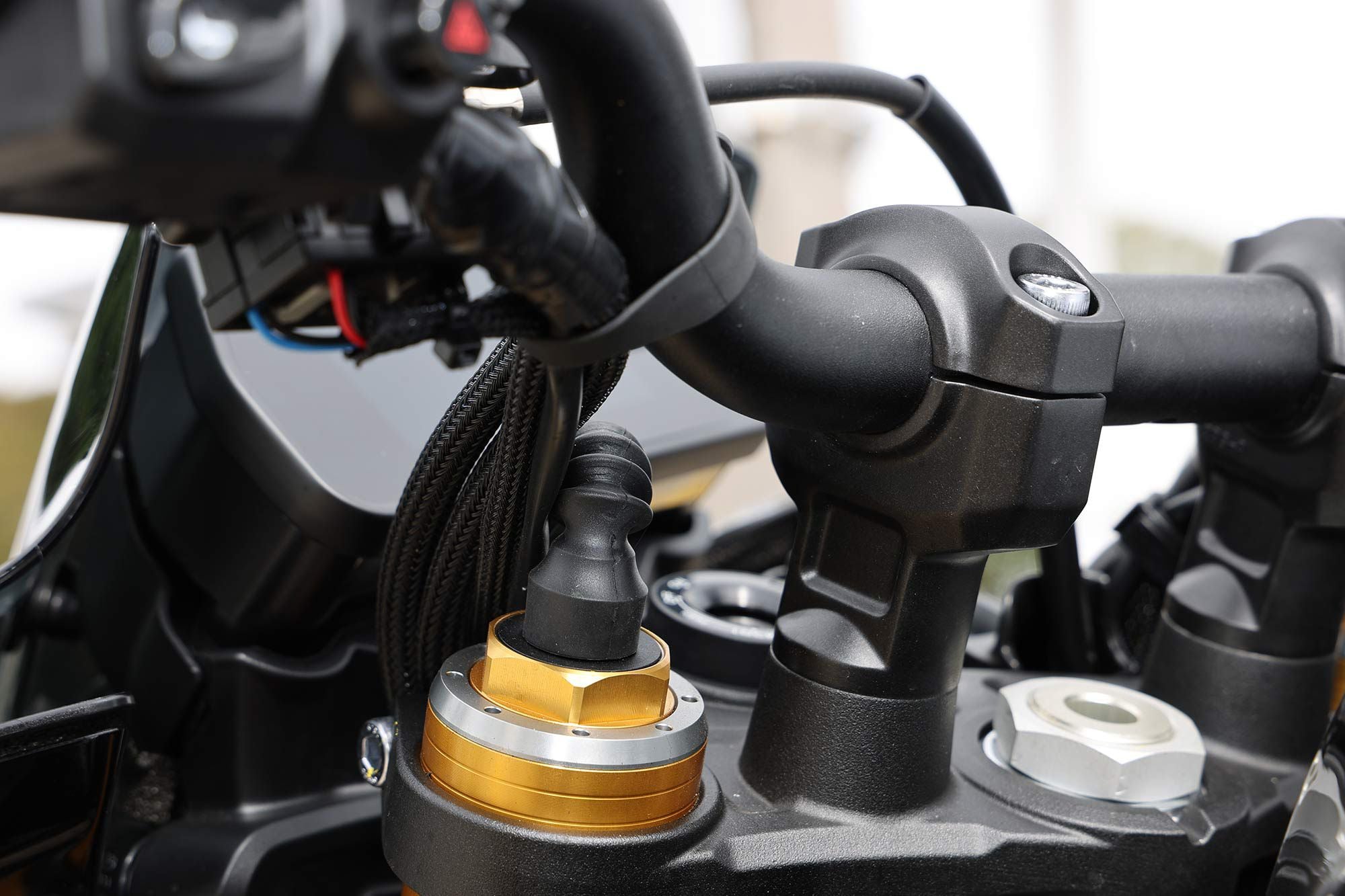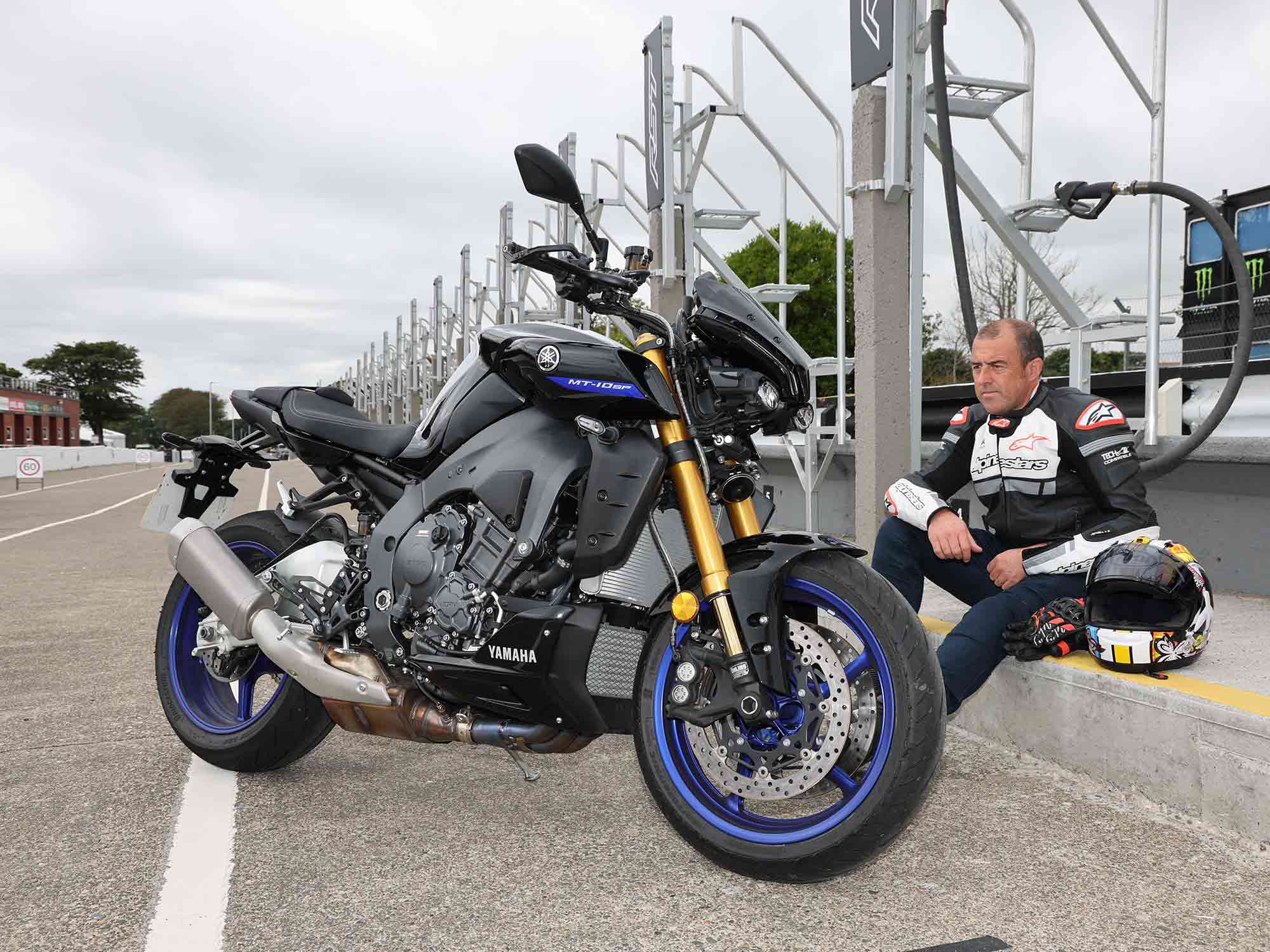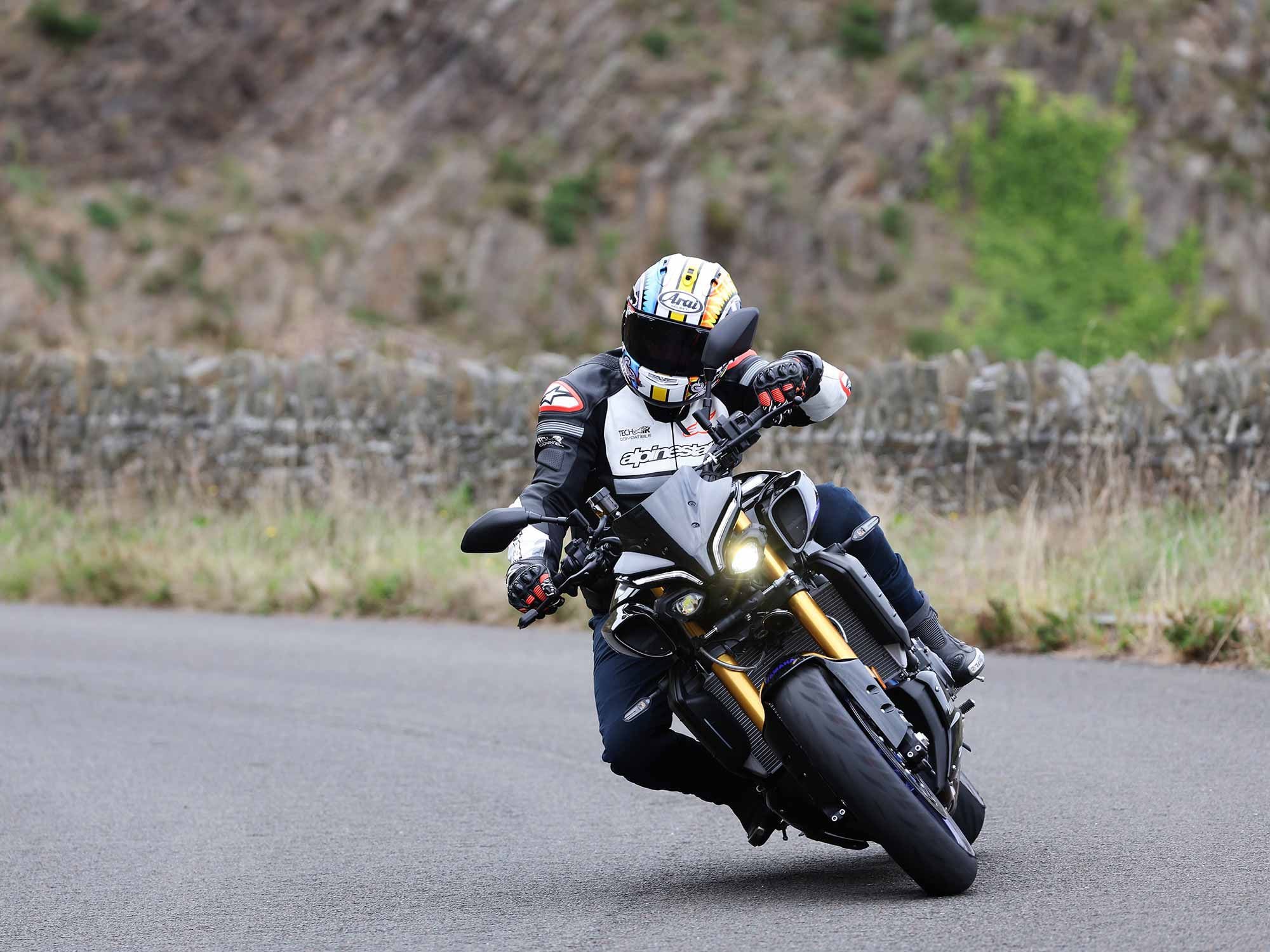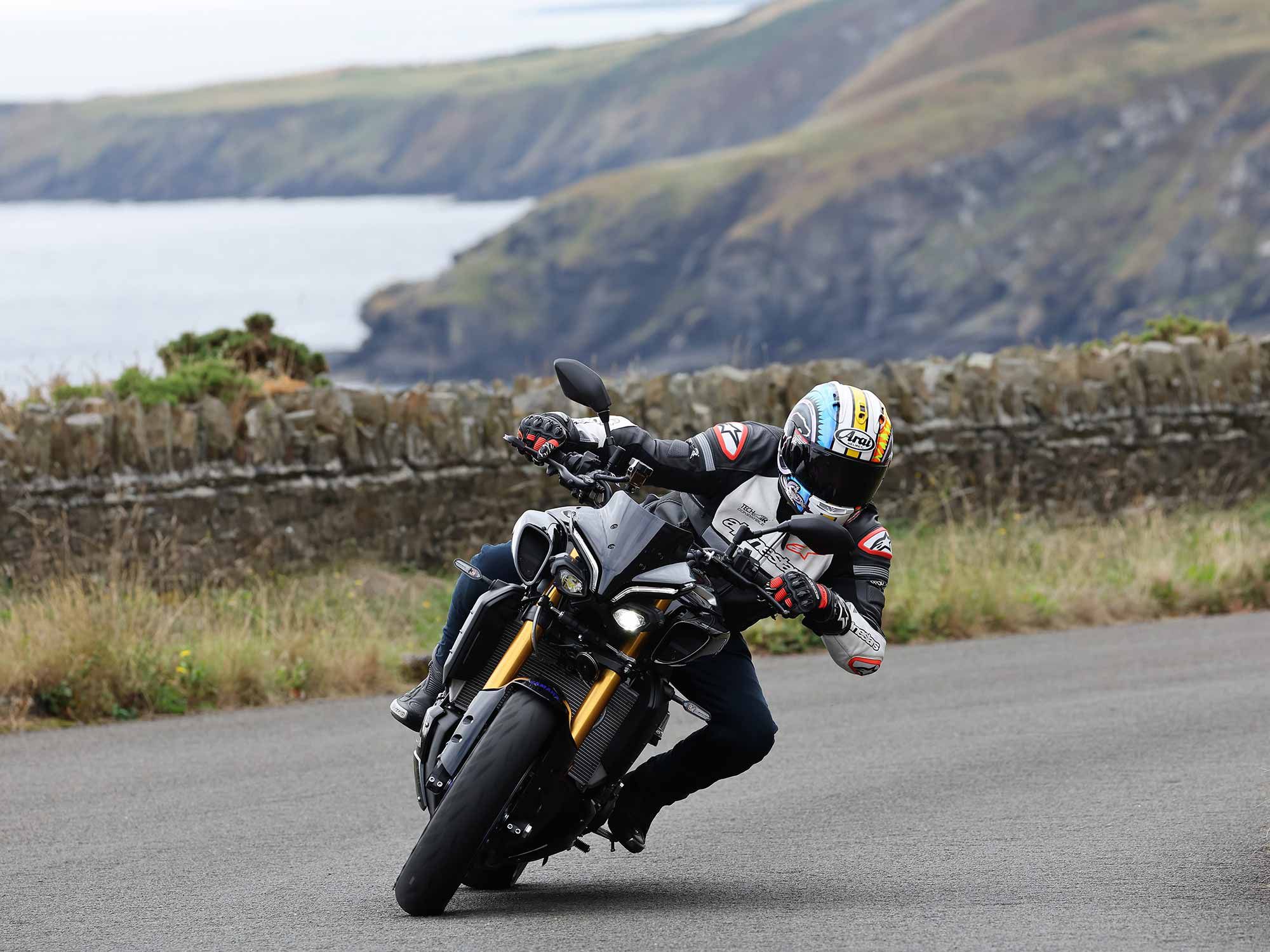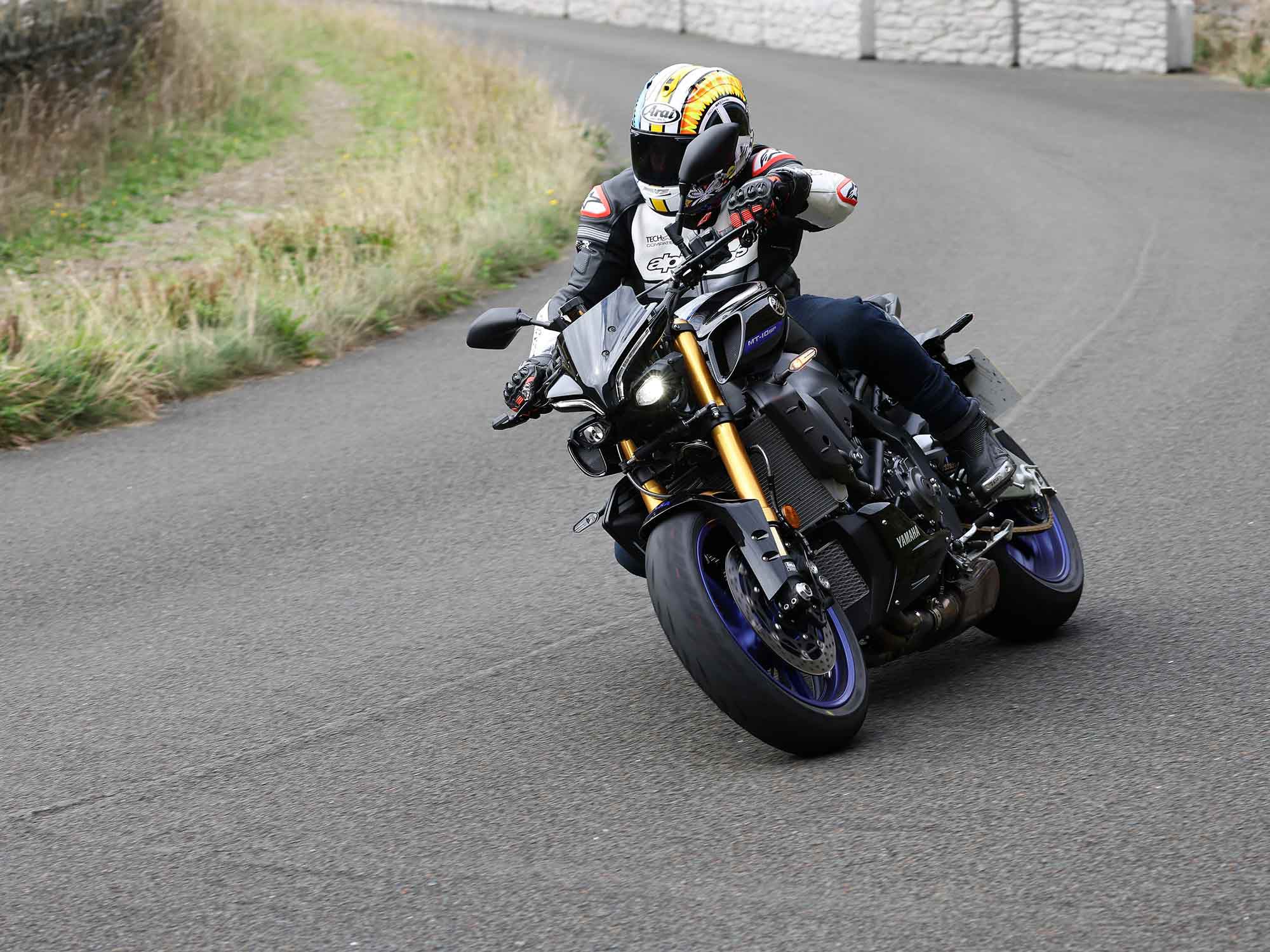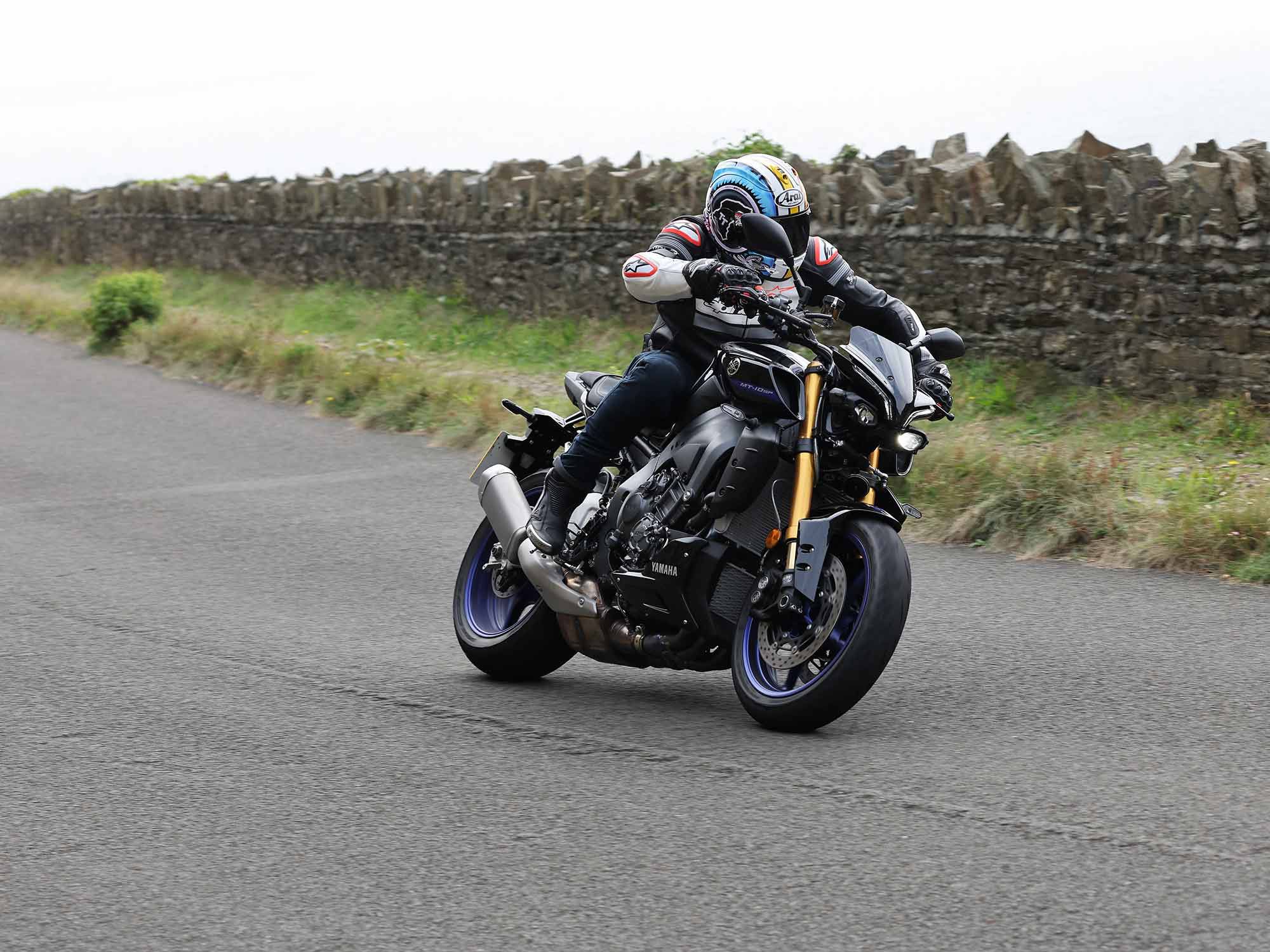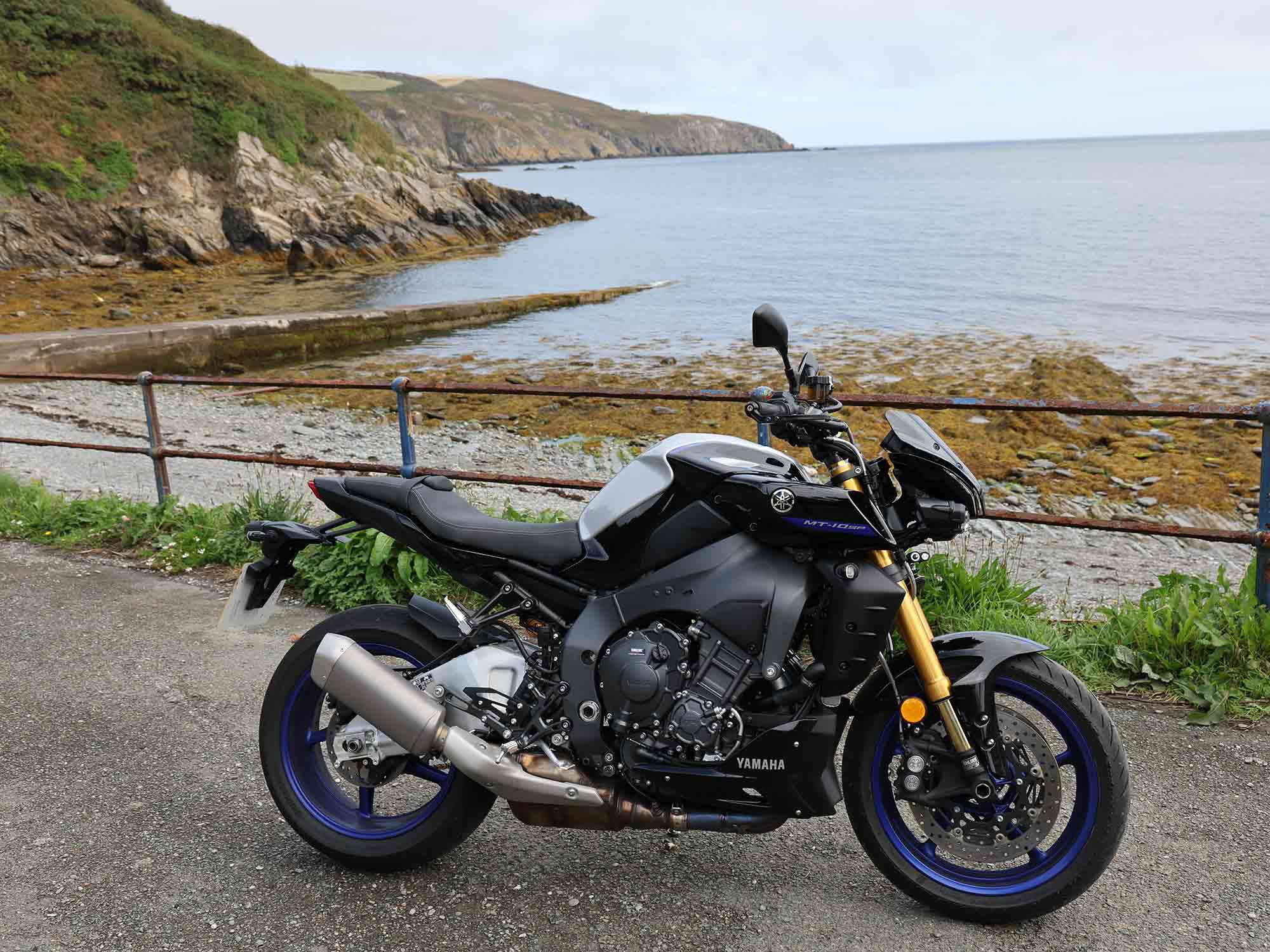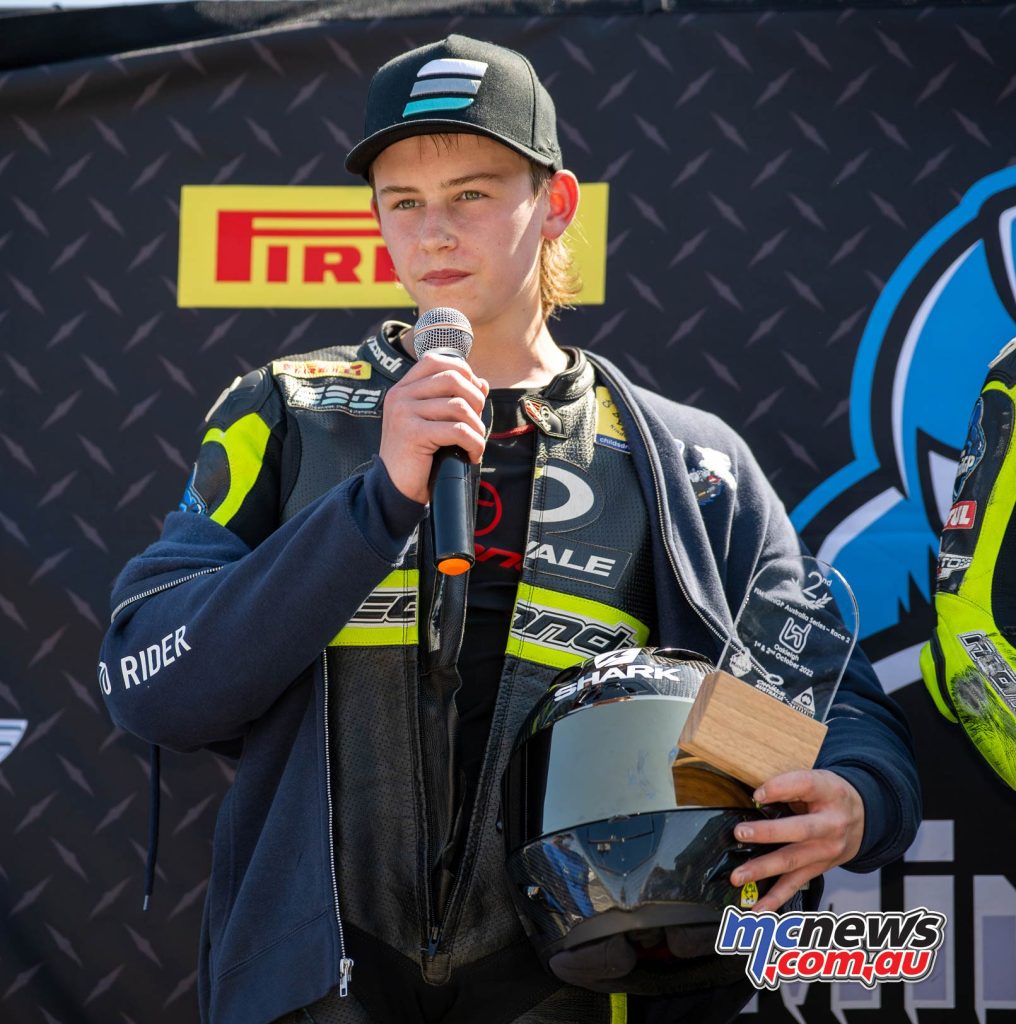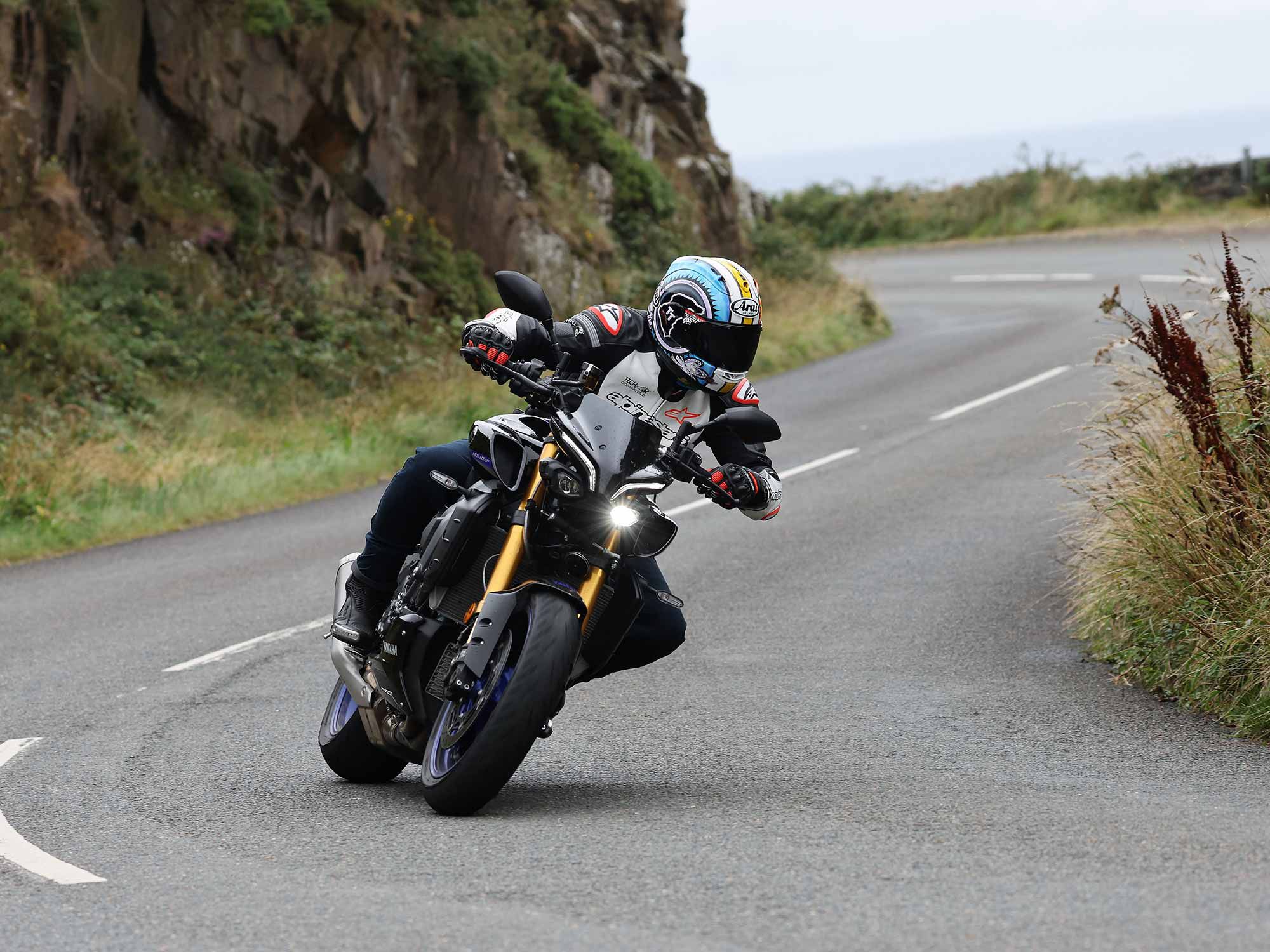In the upper edge of the superbike class, BMW Motorrad campaigns its 2022 M 1000 RR ($36,995 as tested). This is the German brand’s top-of-the-range liter-class homologation special for the 2022 model year. This sportbike offers an array of technical improvements versus the base S 1000 RR.
Editor’s note: We test rode previous S 1000 RRs during the 2020 BMW S 1000 RR First Ride Review, 2020 BMW S 1000 RR MC Commute Review, 2021 BMW S 1000 RR MC Commute Review and 2022 BMW S 1000 RR Review at Double R Fest articles and videos.
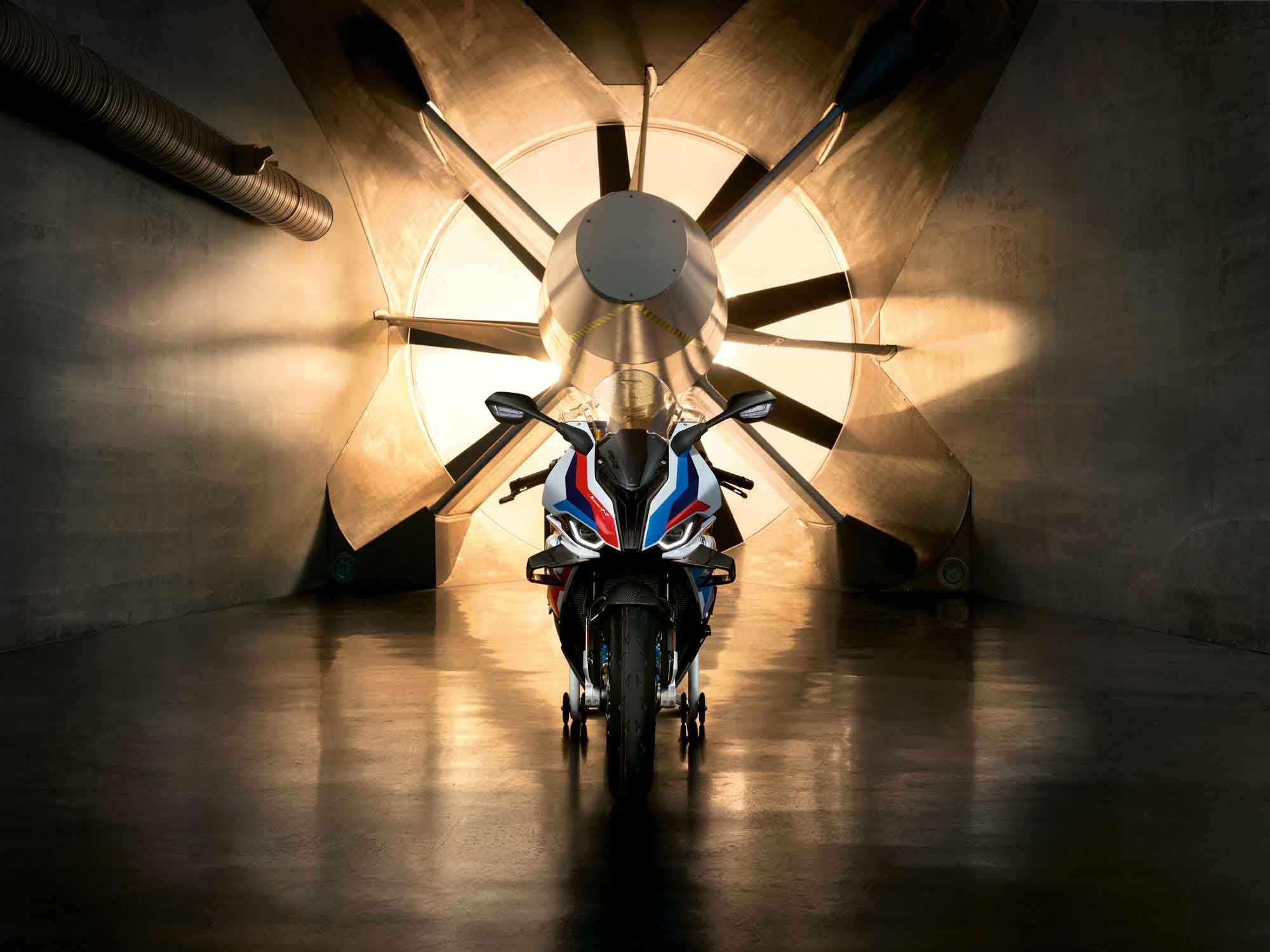
Beginning with the 999cc inline-four, inside there are aluminum forged pistons and titanium connecting rods. The cylinder head has been reshaped and now benefits from titanium exhaust springs. Other improvements include an updated airbox with improved and still electronically height-adjustable velocity stacks. Externally, outside of the engine. The twin-spar aluminum frame has been modified with material removed in certain areas. The triple clamp offset is reduced, so the clamps are more far forward. The steering geometry has been a little bit more relaxed to boost stability.
The swingarm pivot has more finite adjustment (maximum adjustment range remains the same). The swingarm is also a half pound lighter and includes an adjuster to modify the linkage ratio of the rear suspension. It’s easy to make adjustments: Loosen the Torx head screw then loosen the fastener inside the linkage. The mechanic then pivots the arm and adjusts the linkage ratio. There is a lot of adjustment inside this M 1000 as compared to the RR.
The M 1000 RR’s braking package has also been tweaked. Blue anodized Nissin calipers are fitted and grip a pair of 320mm rotors that are 0.5 millimeter thicker than the standard model. Of course, this bike is dripped in carbon fiber. Carbon fiber wheels and winglets that increase the downforce of this motorcycle by 16 pounds at 120-something mph. We also have awesome embossed rearsets that are adjustable, so you can adjust the position of the footpegs and the rear brake and shift lever to your liking. We’re big fans of motorcycles that offer footpeg adjustment.
This M 1000 RR also includes GPS data acquisition, so you can monitor lap times and the vitals of the motorcycle while setting fast (or slow?) laps. And because it is a BMW, it offers heated grips and a USB charging port under the seat. Motorrad understands that we like to ride on the road, on the track, and in all types of weather.
This is a handsome-looking motorcycle and it rings in at $37,000. Yes, it costs around $12,000 more than a standard S 1000 RR, but you get a lot of extra features and improvements for the money. It’s worth noting that for the 2023 MY, BMW Motorrad has a new and improved M 1000 RR, which we hope to operate one day.
Swinging a leg over the M 1000 RR, we love its conventional mechanical ignition key. This key is locked to the 6.5-inch dash display, so when you reflash it, you have to remove this entire ignition setup, as well as the ECU. Diving into the menu on this color TFT allows you to access vehicle settings, just like the standard RR.
Here in the “settings” menu is where things get good. There are three race modes that you can customize (Race Pro 1, 2, 3). The rider can tweak engine power, engine-brake, traction control (BMW calls it DTC), wheelie control, and ABS. For this test we customized the Race Pro 3 mode. We installed maximum power (duh); we also engaged maximum engine-brake. We prefer the maximum engine-brake setting because we need extra help slowing the vehicle. We could see how faster operators could desire more free-wheeling effect during corner entry. We also selected a lower DTC setting. Wheelie control, we selected Level 2. So it’s not the least aggressive wheelie mitigation mode. In terms of ABS, we chose Level 2, so again, not the most aggressive ABS setting. Rear ABS is enabled in the setting.
This M 1000 RR is set up with reverse shift with a shift pattern of one up, five down. This modification reduces the short amount of time it takes to upshift into the next cog.
Double R Fest is a BMW Motorrad trackday experience, but you don’t have to just ride a S 1000 RR. It’s open to all types of motorcycles. But the reason many riders chose to ride BMW is because it offers so much character and charisma.
When you get the engine revving north of 10,000 rpm, you’ve got to hang on tight. With a claimed 205 hp, this bike accelerates like a fighter jet rotating off a runway. We also value how light this bike feels. With a 423-pound curb weight with a full 4.4 gallons of 91-octane fuel, it feels even lighter than the spec chart says. Another neat feature about this M 1000 RR that we didn’t mention in our preview commentary is the taller windscreen. Tall windscreens are a big benefit for tall motorcyclists.
This M 1000 RR has the optional torque map installed. The dealership-installed programming removes the second- and third-gear torque output limitation that the standard US-spec S 1000 RR’s are subject to. This map lets you get a feel for its powerband. On the flip side though, horsepower is limited. BMW says the engine is capable of 205 hp, but in US configuration the best we’ve seen is upwards of 182 ponies at the business end of the 200-series rear tire.
As usual we love the slick-shifting performance of the electronics quickshifter. It makes it easy to row through the gears. If there is one negative thing about this engine configuration, historically it is that it vibrates like crazy. But, then again, what do you expect for a motorcycle that makes 180 hp in unrestricted form.
The electronics allow this bike to go from mild to wild with a press of a button. Considering the lofty level of electronic adjustments, you’ll have to spend some time at the controls of this vehicle to really understand optimum rider-aid settings. Equally, there’s a high level of adjustability in the mechanical aspects of the motorcycle: the suspension adjustments, swingarm pivot adjustment, and rear suspension linkage adjustment.
But just pressing some buttons will make for a vastly different riding motorcycle. We also value the ability to adjust DTC in real time with the handlebar-mounted switch. That lets you dial in more or less wheel spin for the conditions, or your experience level. Professional-grade riders on used tires will certainly like the ability to tweak and adjust DTC in real time.
The brakes on this M 1000 RR are not vastly different from the base model, however the extra rotor width helps in terms of heat dissipation. It was a cool day in the Southern California desert at Chuckwalla Valley Raceway, and there aren’t deep braking zones. (Editor’s note: Chuckwalla is more of a momentum-based racing circuit and operators aren’t applying the brakes for a long duration.) Still, it’s neat the Motorrad division is engineering machinery for the most demanding riders and racetracks worldwide.
As always, we’re big fans of the carbon fiber wheels (optional on standard S 1000 RRs). This upgrade not only reduces unsprung mass, but makes this superbike so maneuverable. During the 2022 BMW S 1000 RR Review at Double R Fest, we recall how maneuverable it was through the fast and tricky esses section. That is where carbon fiber wheels really come in handy.
The M 1000 RR is the first BMW superbike to incorporate aerodynamics in the form of carbon fiber winglets. At 120-something mph, they generate more than 16 pounds of downforce. That may not seem like a lot, but when entering turns at speed, any extra downforce really helps the front tire bite into pavement.
At the end of the day, BMW’s M 1000 RR is an incredible machine. It’s remarkably more polished and honed versus the standard RR. Highlights include near stinction-less action of the fork and the capable and feel-rich brakes that beg the rider to brake deeper each session. We also adore the copious level of feel the front end offers at lean. Yet it still turns on a dime, and offers elevated stability at speed! That’s one area where this fourth-generation RR surpasses the previous generation. Tall riders will also continue to appreciate its ergonomics especially with the taller windscreen and fully adjustable rearsets.
As always, this compact inline-four is mesmerizing. Of course, having the restricted horsepower output takes away from the fun factor, but having the optional torque map installed makes it vastly more capable for track riders. Realistically, if this bike was ours, we’d send the ECU, dash display, and the ignition key modules to an aftermarket reflash center and have 190-something horsepower at the business end of this motorcycle.
On the flip side, considering the vast modifications engineers made to this powertrain, it’s not that much different than the second- and third-generation S 1000 RR’s in terms of fundamental real-world track riding power. The 2015 model year machines made 190 hp at the back tire. The current engine package has a smoother powerband with all of the integrated electronic counter measures, so we’re not saying that the old engine is superior… But the previous configuration made a lot of power off the dealership floor.
Superbike enthusiasts that desire something special, will adore BMW’s gorgeous M 1000 RR. It offers demanding riders a high level of mechanical and electronic adjustment dripping in tasty carbon fiber. Factor in its lofty fit and finish and its three-year, 36,000-mile warranty, with roadside assistance and there are a heck of a lot of reasons to ride BMW.
Gearbox
Helmet: AGV Pista GP RR Futuro
Suit: Dainese Misano 2 D-Air
Gloves: Dainese Full Metal 6
Boots: Dainese Axial D1
2022 BMW M 1000 RR Technical Specifications and Price
| PRICE | $36,995 (as tested) |
|---|---|
| ENGINE | 999cc, DOHC, liquid-cooled inline-four; 16 valves |
| BORE x STROKE | 80.0 x 49.8mm |
| COMPRESSION RATIO | 13.5:1 |
| FUEL DELIVERY | Dual-stage electronic fuel injection |
| CLUTCH | Wet, multiplate slipper clutch; cable actuation |
| TRANSMISSION/FINAL DRIVE | 6-speed/chain |
| FRAME | Twin-spar aluminum |
| FRONT SUSPENSION | 45mm Marzocchi inverted fork, fully adjustable; 4.7 in. travel |
| REAR SUSPENSION | Marzocchi gas-charged shock, fully adjustable; 4.6 in. travel |
| FRONT BRAKES | Radial-mount 4-piston calipers, dual 320mm floating discs w/ ABS |
| REAR BRAKE | 1-piston caliper, 220mm disc w/ ABS |
| WHEELS, FRONT/REAR | Carbon fiber; 17 x 3.5 in. / 17 x 6.0 in. |
| TIRES, FRONT/REAR | Pirelli Diablo Supercorsa SP V3; 120/70-17 / 200/55-17 |
| RAKE/TRAIL | 23.6°/3.9 in. |
| WHEELBASE | 57.4 in. |
| SEAT HEIGHT | 32.8 in. |
| FUEL CAPACITY | 4.4 gal. |
| CLAIMED CURB WEIGHT | 423 lb. |
| WARRANTY | 3 years, unlimited mileage |
| AVAILABLE | Now |
| CONTACT | bmw.com |
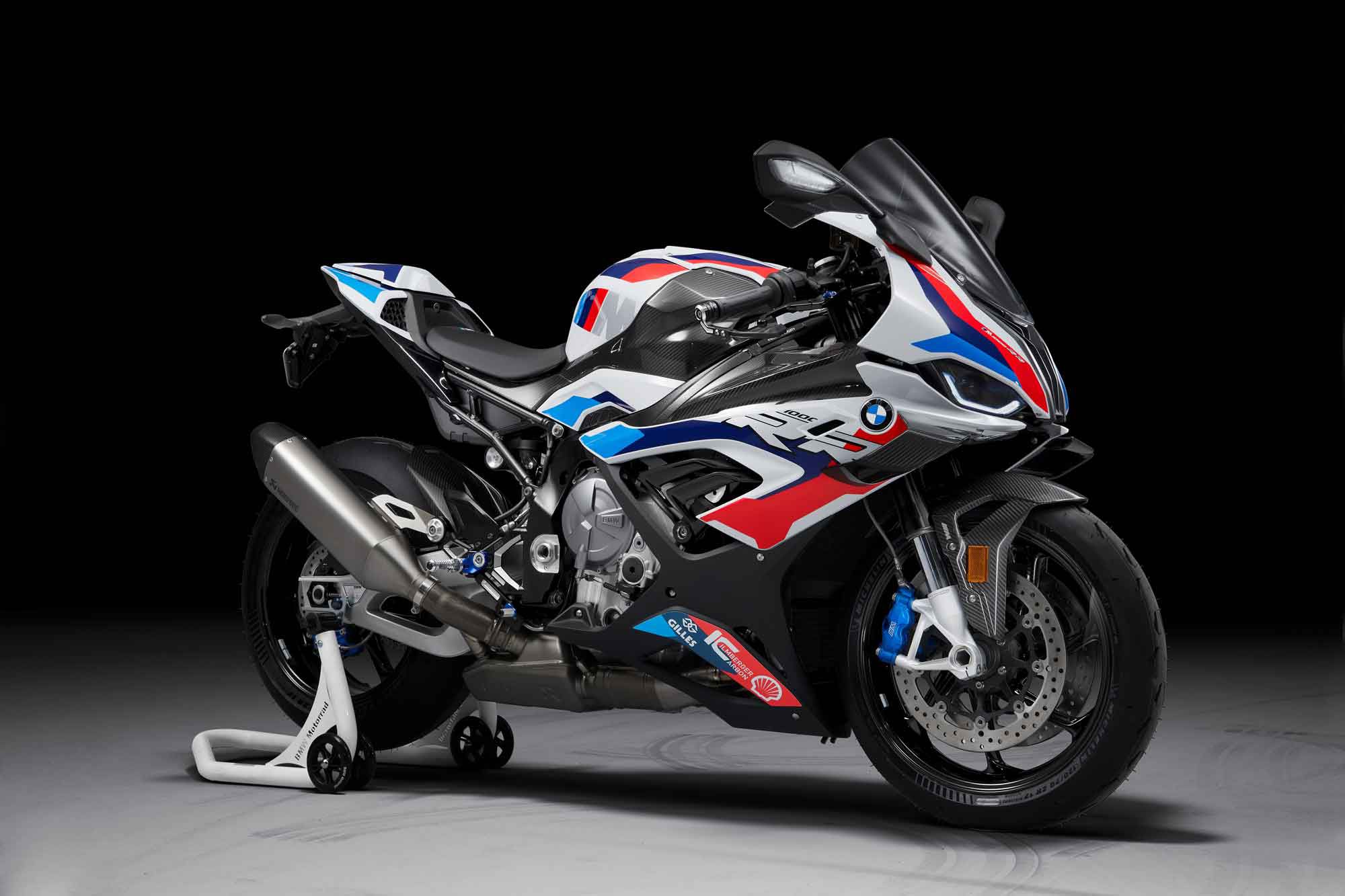
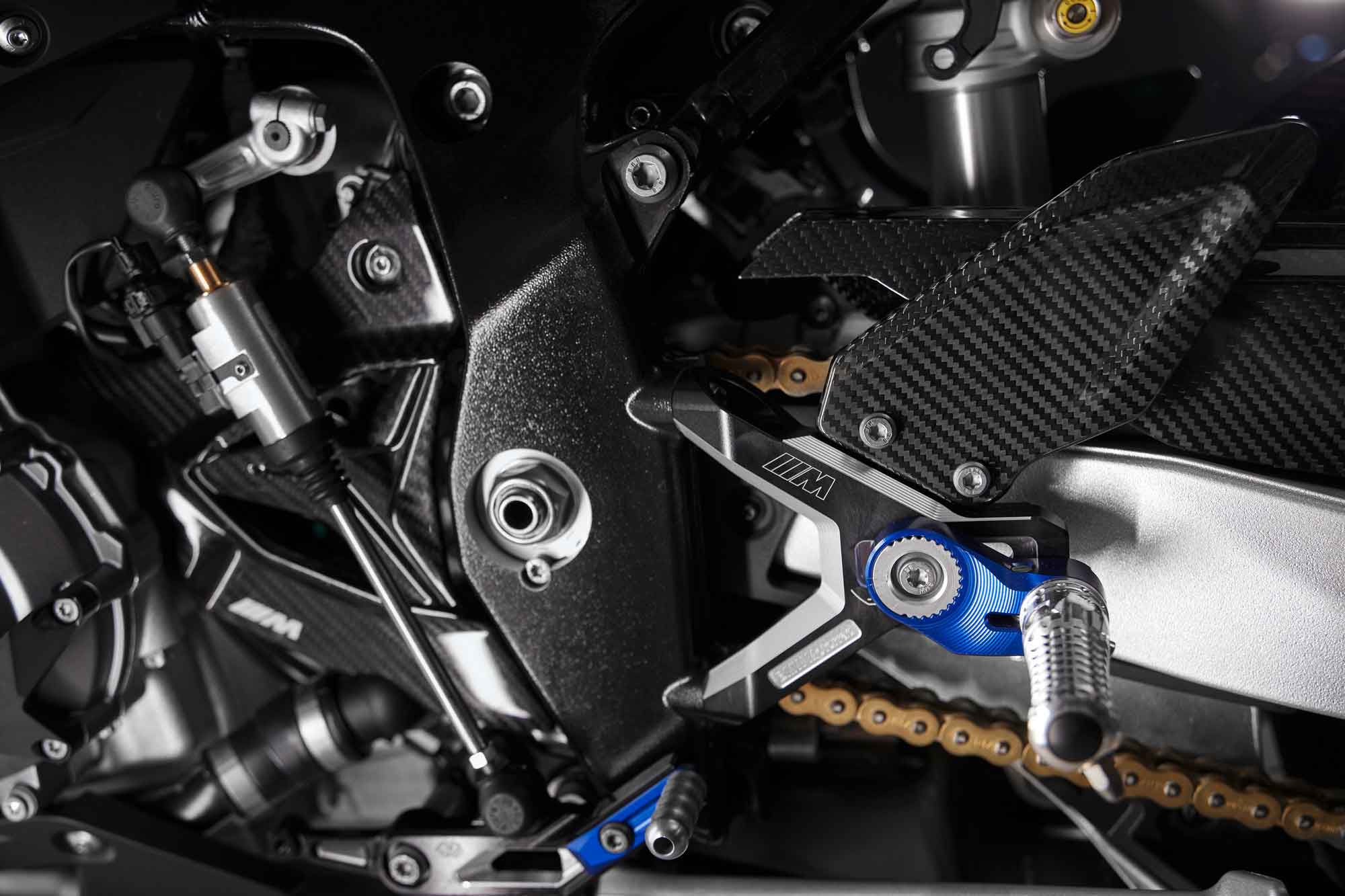
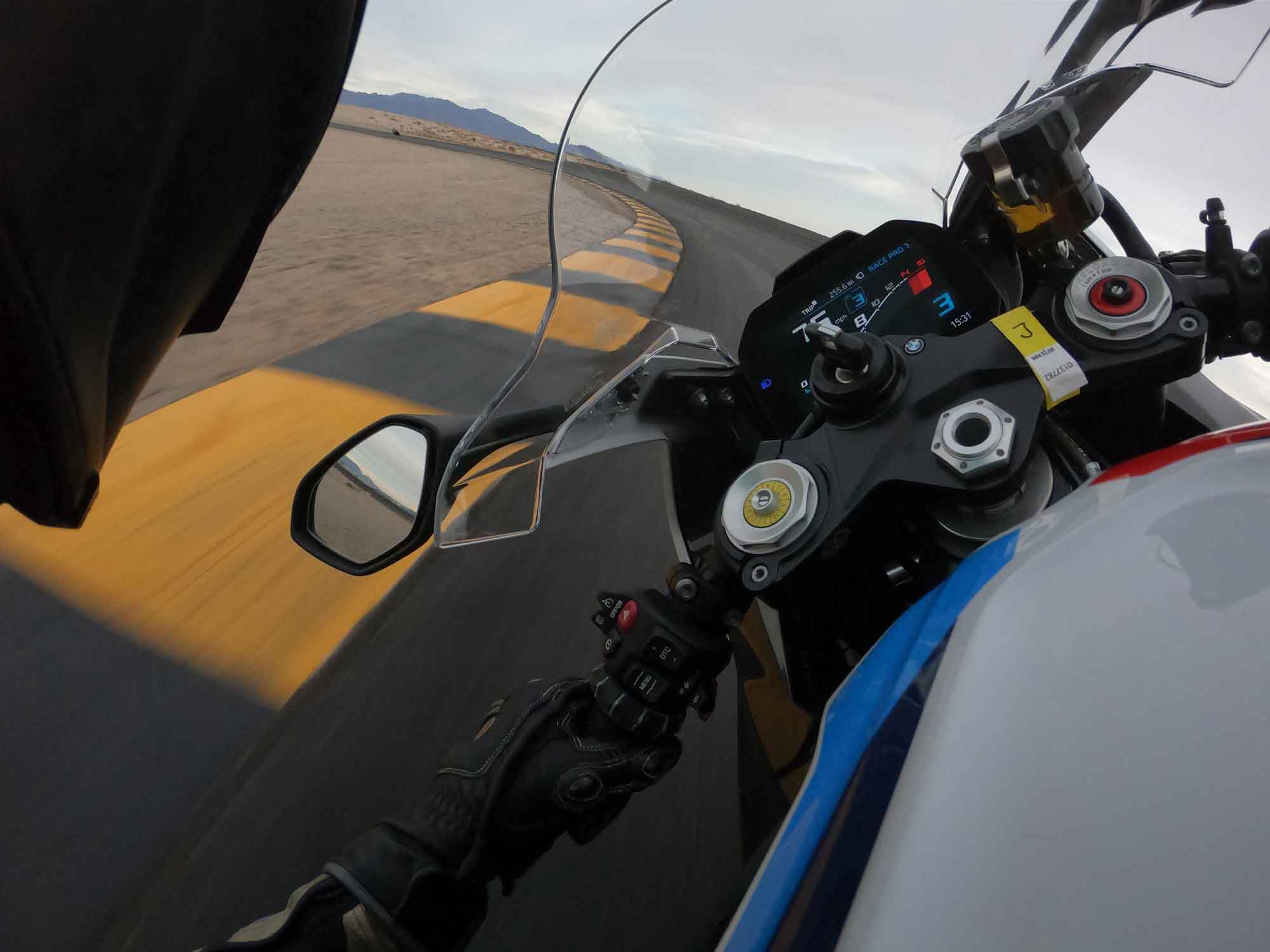
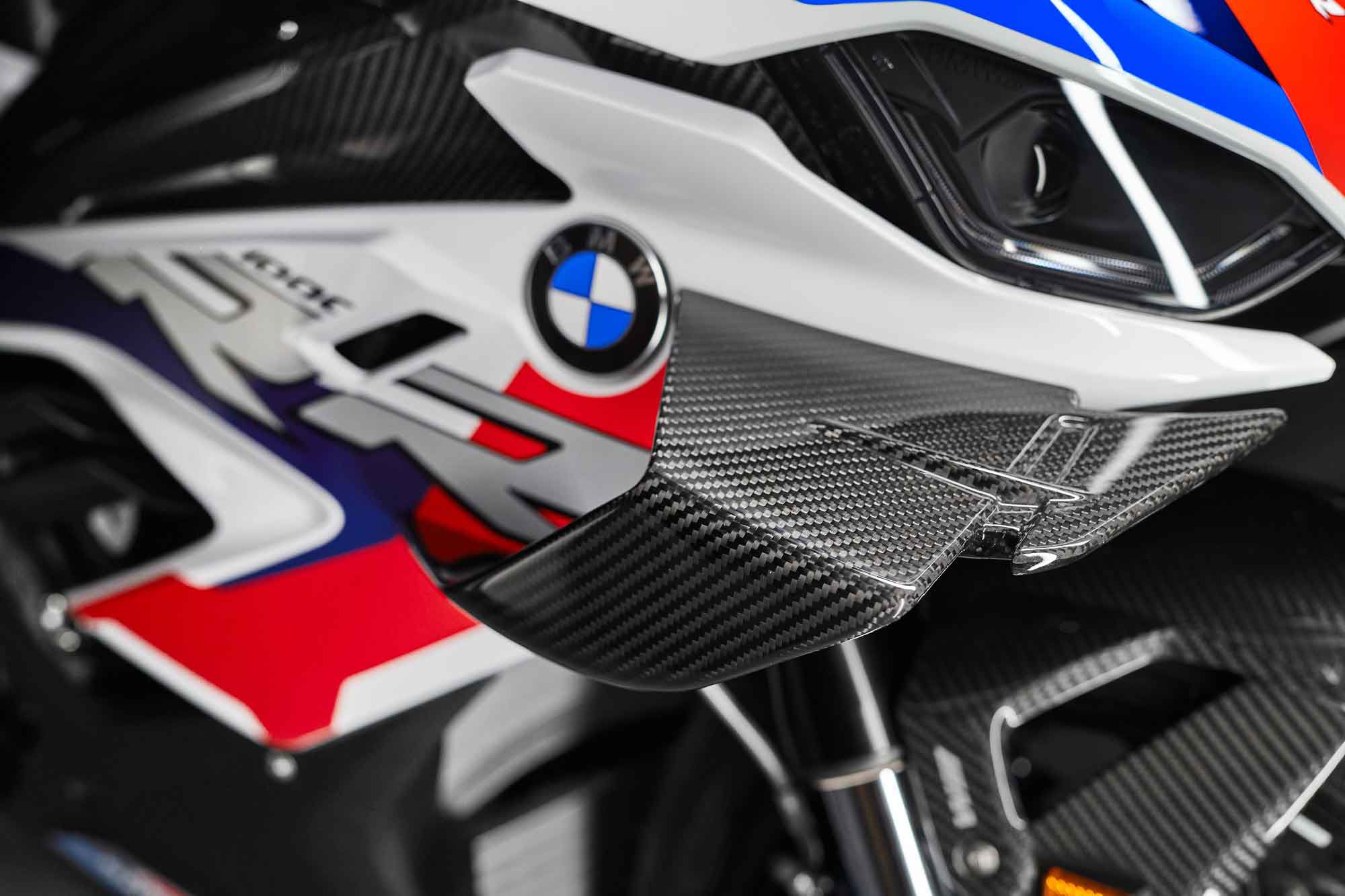
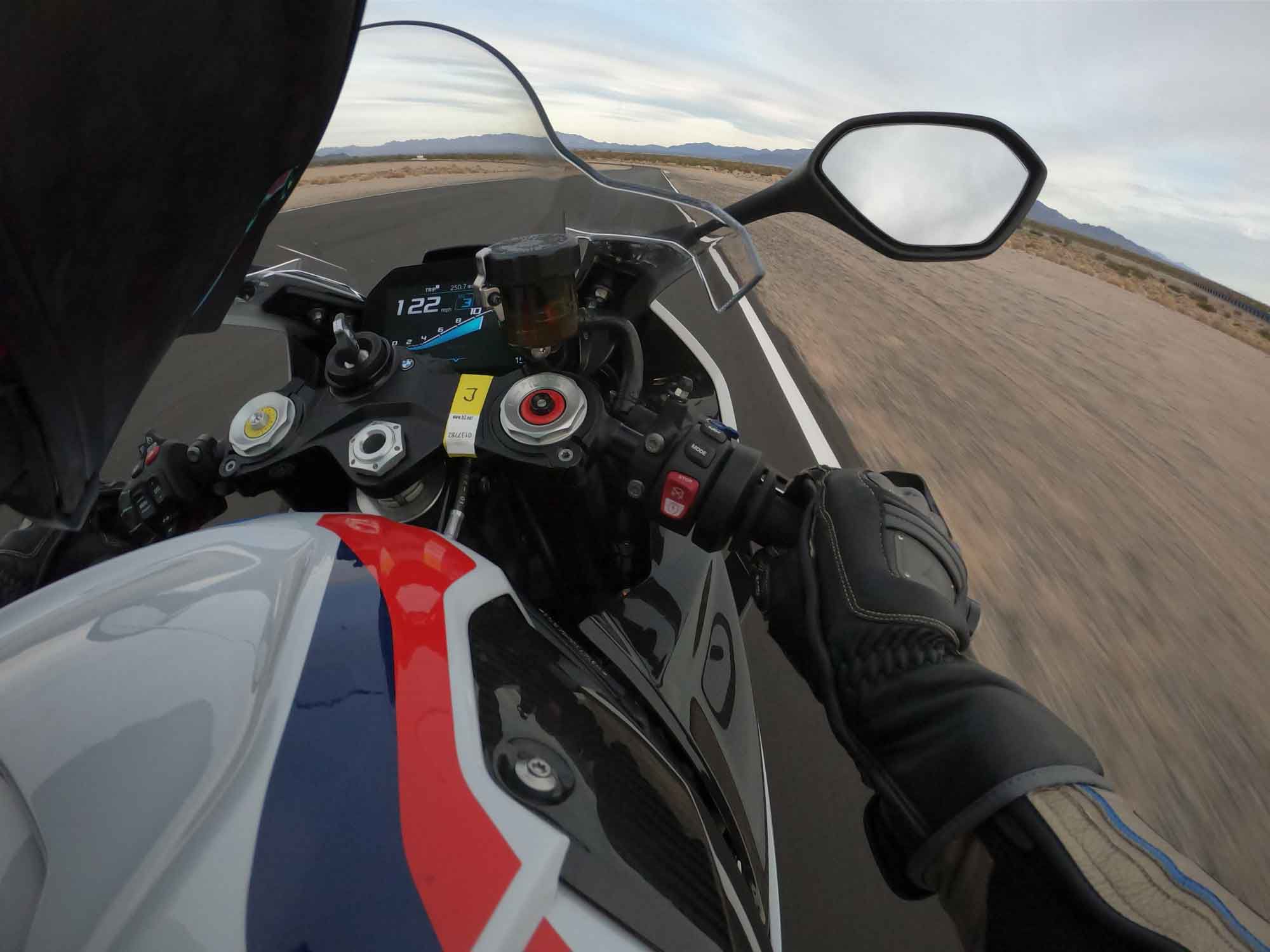
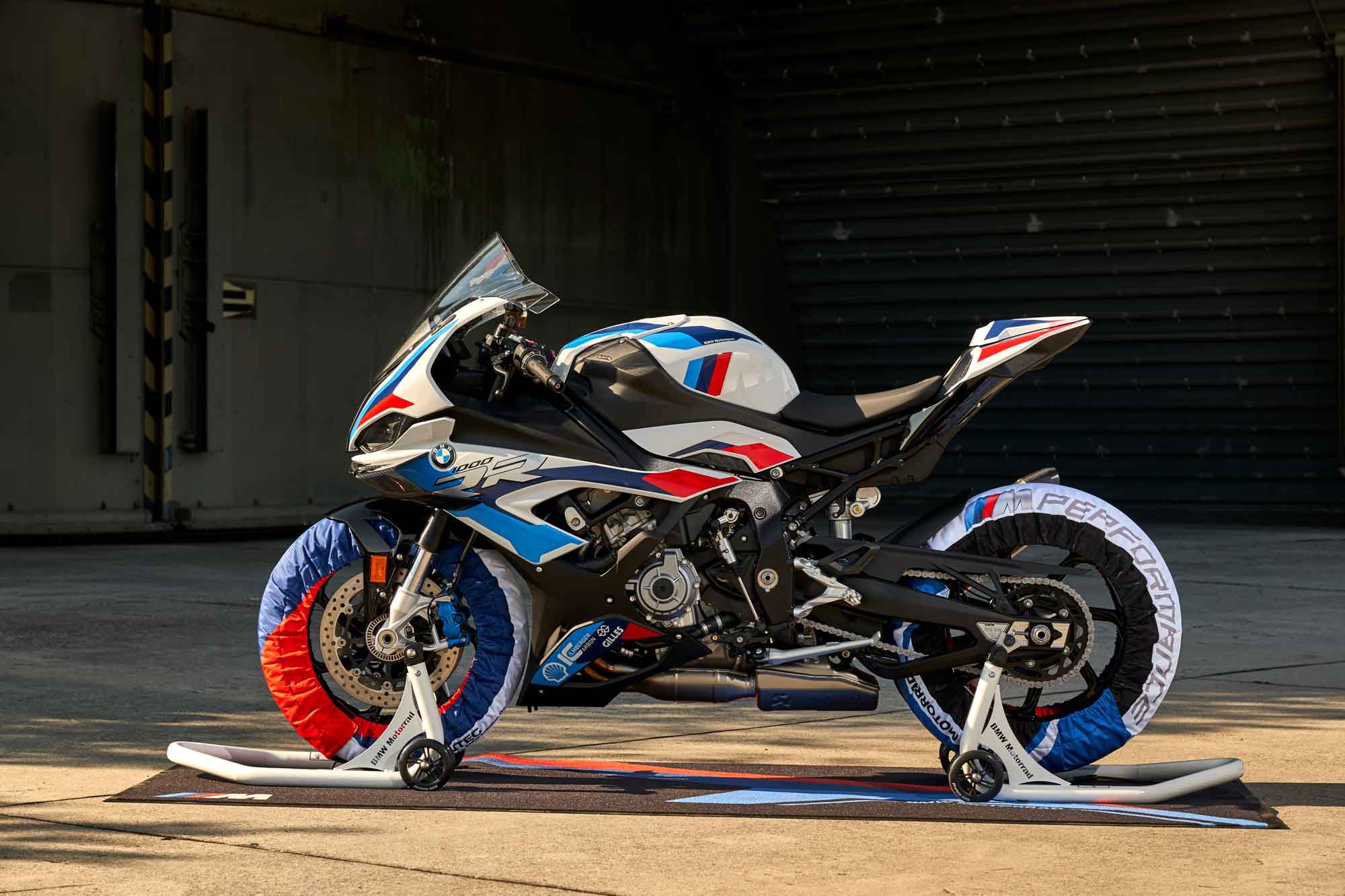
Source: MotorCyclistOnline.com

